11.6: South America c. 1500 - 1900
- Page ID
- 78210
South America c. 1500 – 1900
Spain and Portugal divided South America to exploit resources and convert souls.
Viceroyalty of Peru
The viceroyalty encompassed modern-day Peru as well as much of the rest of South America, the Portuguese controlled what is today Brazil.
1534–1820 C.E.
A beginner's guide
Introduction to the Viceroyalty of Peru
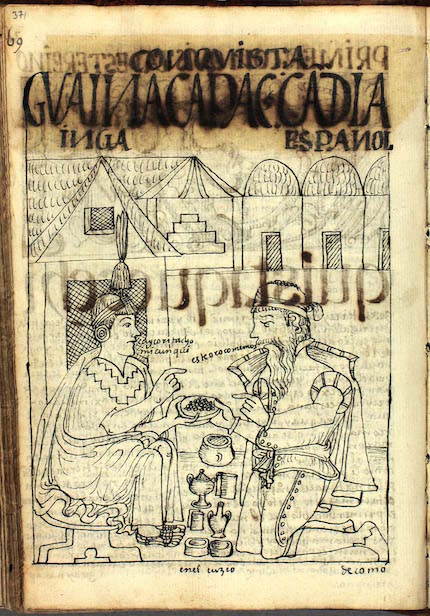
Francisco Pizarro and the conquest of Peru
In the early sixteenth century, the Inka Empire was in a state of turmoil due to a succession dispute between half-brothers Atahualpa and Huascar. They shared the same father, the penultimate Inka ruler Huayna Capac, who had died suddenly in 1527 without choosing an heir to the throne. Atahualpa, based in the northern Inka city of Quito, was in the process of consolidating the northern reaches of the empire in modern-day Ecuador and Colombia while Huascar commandeered Cuzco in the south. The half-brothers instigated a civil war that rocked the empire’s foundations to its core. Atahualpa and his powerful army ultimately managed to defeat Huascar and ascend to the throne.
It was at this very same time, however, that Spanish conquistador Francisco Pizarro arrived on South American soil. With news of white-skinned strangers arriving in the northern highland city of Cajamarca, Atahualpa traveled northward to greet the new arrivals in November of 1532. Atahualpa arrived in Cajamarca with a large retinue of attendants and soldiers. While the initial encounter between the Inka and the conquistador was an amicable one, tensions flared after the Spanish friar and translator Vicente de Valverde handed Atahualpa a breviary (liturgical book) to ascertain his receptiveness to Christianity, a religion about which the Inkas, of course, had no knowledge whatsoever.
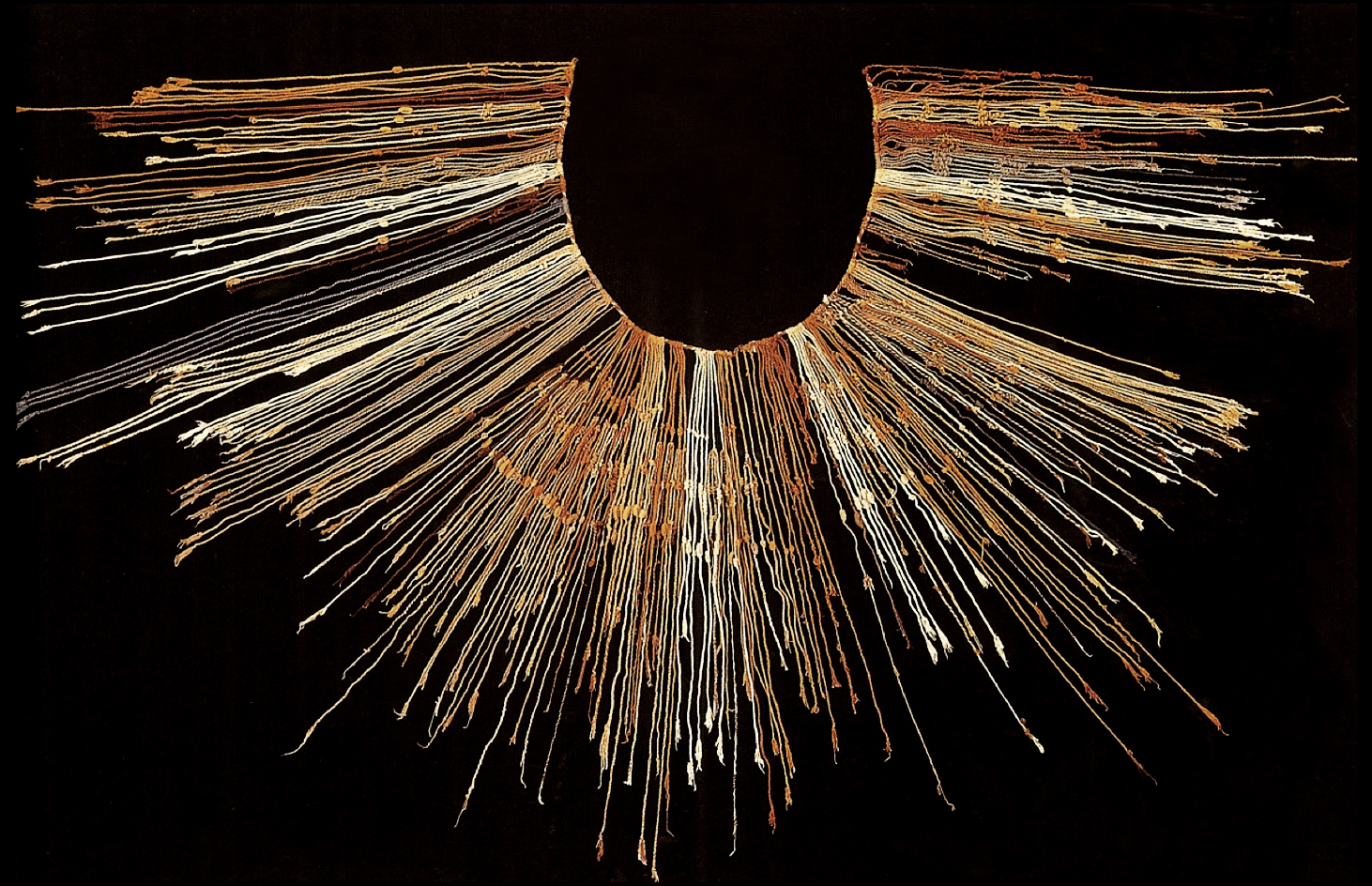
Since the quipu served as the primary system of communication in the Inka empire, Atahualpa had no concept of a “book” in the European sense of the term. According to the chroniclers of the Spanish conquest, Atahualpa threw the book to the ground. This perceived act of disrespect—of throwing the sacred book, and by extension, the word of God—to the ground provided the conquistadors with justification for ambushing the city and taking Atahualpa as their captive.
This pivotal moment in the Spanish conquest reveals the fundamental cross-cultural misunderstandings that took place during the early years of the Spanish invasion. While a number of translators facilitated dialogues between Spanish conquistadors and Quechua-speaking Inkas, their radically different world views and ways of life often defied simple linguistic translation. In his attempt to negotiate with Pizarro, Atahualpa promised to fill up a room measuring twenty-two feet long, seventeen feet wide, and eight feet high with gold and silver as ransom in exchange for his freedom. He agreed that the room would be filled entirely with gold, and then with silver twice over, all within the span of two months. The indigenous chronicler Felipe Guaman Poma de Ayala (ca. 1535–after 1616) illustrated this scene in his El primer nueva corónica i buen gobierno (The First New Chronicle and Good Government), a 1,189-page manuscript written to King Philip III (1578–1621) in protest of Spanish colonial rule.
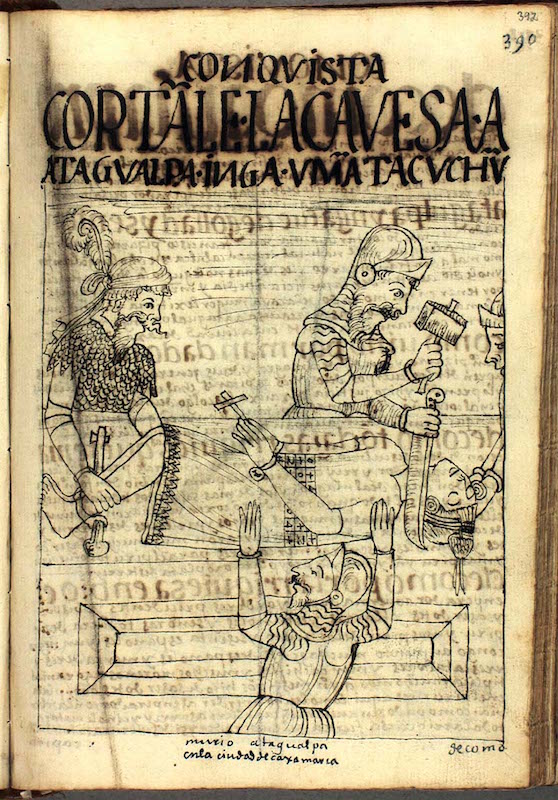
Despite Atahualpa’s miraculous success in coordinating donations of precious metals, he was publicly garroted (strangled) in 1533 on trumped up charges of idolatry and for the murder of Huascar. Pizarro’s army invaded the Inka capital of Cuzco on November 15, 1533, thus solidifying the Spanish triumph over the Inka empire. In some ways, the Spanish victory was inevitable. Inka stone and wooden weaponry were no match for Spanish metal armor, swords, and harquebuses (a type of proto-musket).
Pizarro and his army also capitalized on the deep political fractures within the Inka empire caused by the succession battle and received ample support from Atahualpa’s detractors. Nevertheless, Inka resistance delayed the full consolidation of Spanish colonial rule in the Andes until the execution of Tupac Amaru, the last ruler of the Neo-Inka state, a semi-autonomous faction that ruled from 1535 until 1572 in the secluded tropical outpost of Vilcabamba.
The effects of the Spanish conquest
The Spanish conquest of the Inka Empire brought about fundamental changes to the Andean social, political, and cultural landscape. The dismantling of Tawantinsuyu (the Quechua term for the Inka Empire) resulted in the irrevocable loss of Inka self-governance and the implantation of Spanish colonial rule. Spaniards quickly established themselves throughout the newly conquered region, often in pre-Hispanic urban centers. The former subjects of the Inka empire were forcibly resettled into indigenous settlements known as reducciones, while Spaniards settled in cities throughout Andean South America inhabited primarily by Spanish and criollo (Latin American-born Spaniards) residents. High tribute quotas were imposed on indigenous peoples that required participation in laborious public works projects and the mining of precious metals on a rotational basis. Inka religion became the target of Spanish missionaries, who associated it with idolatry and devil-worship based on a profound misunderstanding of Inka religious practice.
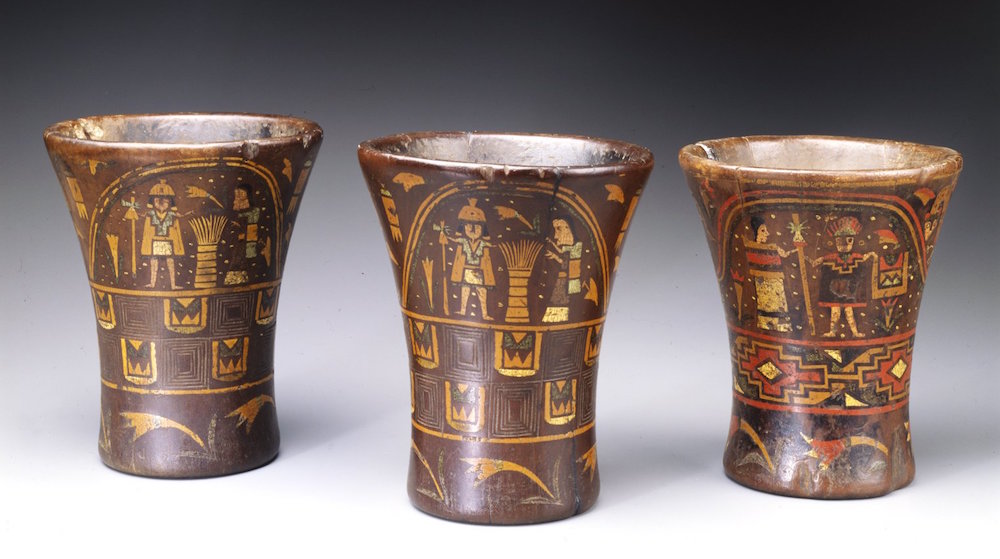
Spanish colonial rule, which lasted from 1534 into the 1820s exerted a profound and destructive impact on the lives of Peru’s indigenous inhabitants. However, the conquest and colonization of the Andes did not result in the complete eradication of indigenous peoples or indigenous practices. The visual arts of the colonial Andes stand as a testament to the resilience of native peoples in the post-conquest world. Native Andeans continued to express themselves artistically alongside and in collaboration with Spanish, mestizo, criollo, Asian, and African-descended peoples. Pre-Columbian artistic traditions cultivated over the course of several millennia entered into dynamic contact with imported European models to produce stunning and culturally complex works of art.
Establishment of the Viceroyalty of Peru and its artistic centers
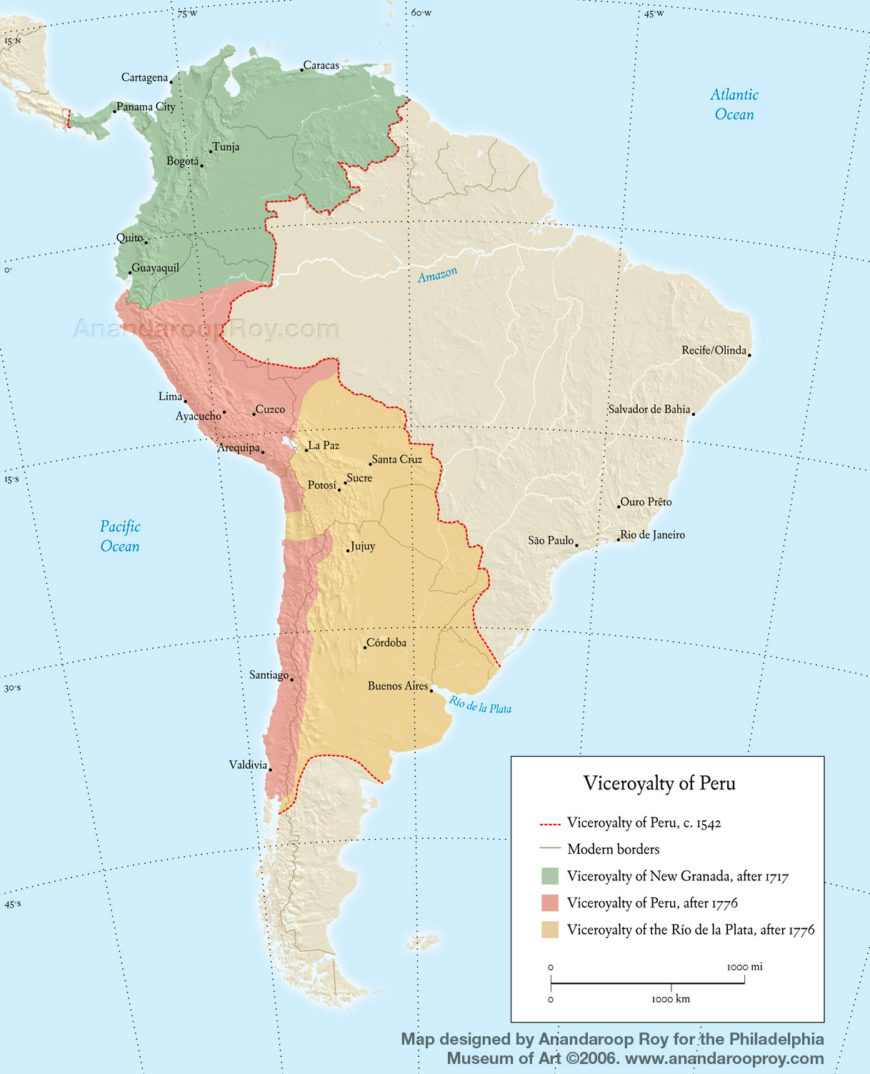
The Viceroyalty of Peru was established in 1542 and encompassed part or all of modern-day Venezuela, Panama, Colombia, Ecuador, Peru, Bolivia, Chile, Paraguay, Uruguay, and Argentina, and even some of Brazil, making it the largest viceroyalty in the Spanish Americas. By the eighteenth century, however, the Peruvian viceroyalty dramatically reduced in size with the establishment of the Viceroyalty of New Granada in 1717 and the Viceroyalty of Río de la Plata in 1776.
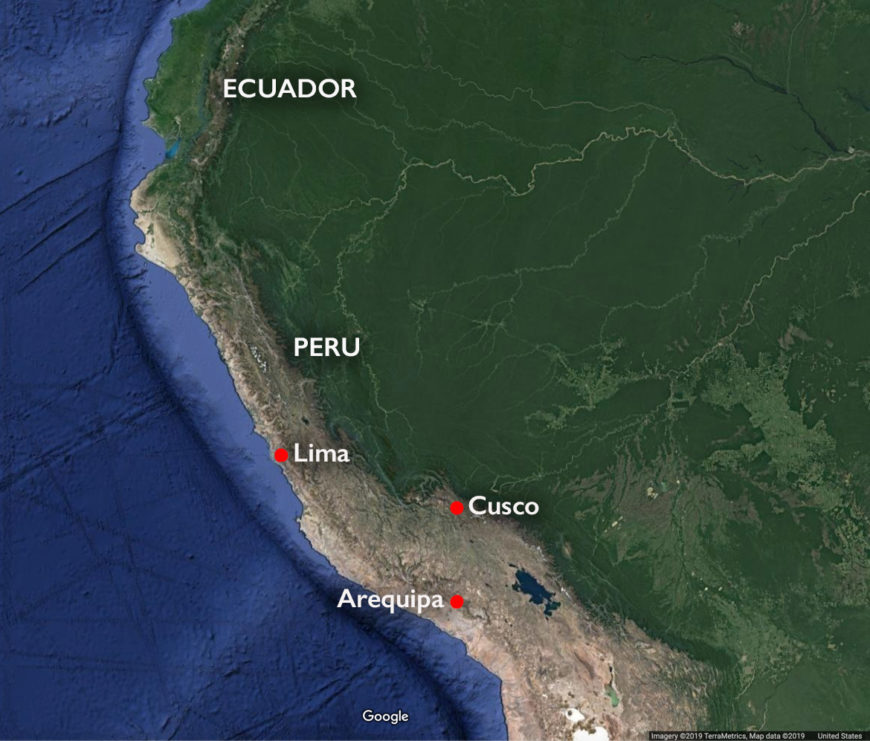
At its height, the Viceroyalty of Peru was a burgeoning administrative district and hotbed of artistic activity. The coastal city of Lima, founded in 1535 by Pizarro, was assigned the capital of the viceroyalty for its accessibility and proximity to crucial trade routes—Cuzco’s high altitude and relative isolation was deemed an obstacle to Spanish political and economic interests. Artistic centers emerged throughout the viceroyalty’s major cities, including Lima, Cuzco, and Arequipa in present-day Peru, Quito in present-day Ecuador, and La Paz and Potosí in present-day Bolivia. The new artistic and architectural traditions that emerged under Spanish rule played a critical role in ensuring that the viceroyalty’s inhabitants were devout Catholics and loyal subjects of the Spanish crown.
At the same time that the visual arts reflected Spanish colonial interests, however, they also held the power to challenge and subvert them. The visual traditions borne out of colonialism are often layered with multiple registers of meaning that transmitted different messages depending on the cultural identity of the viewer. The arts of colonial Peru are neither fully pre-Columbian nor fully European, but a dynamic combination of both.
Additional resources
Kenneth Andrien, Andean Worlds: Indigenous History, Culture, and Consciousness under Spanish Rule, 1532–1825 (Albuquerque: The University of New Mexico Press, 2001).
“South America, 1600–1800 A.D.” on the Met Museum Timeline
María Rostworowski de Diez Canseco, History of the Inca Realm (Cambridge, UK: Cambridge University Press, 1999)
Peru: Kingdoms of the Sun and the Moon (Montreal: Montreal Museum of Fine Arts, 2012)
Kris Lane, “Conquest of Peru” (Oxford Bibliographies, 2011)
Portrait Painting in the Viceroyalty of Peru
Portraiture functioned as an important artistic genre for wealthy elites to assert power and legitimacy in the Viceroyalty of Peru. From an art historical perspective, portraits also transmit a wealth of information about prevailing trends in clothing, jewelry, and other accessories with which the sitters are represented.
Portraits as visual documents
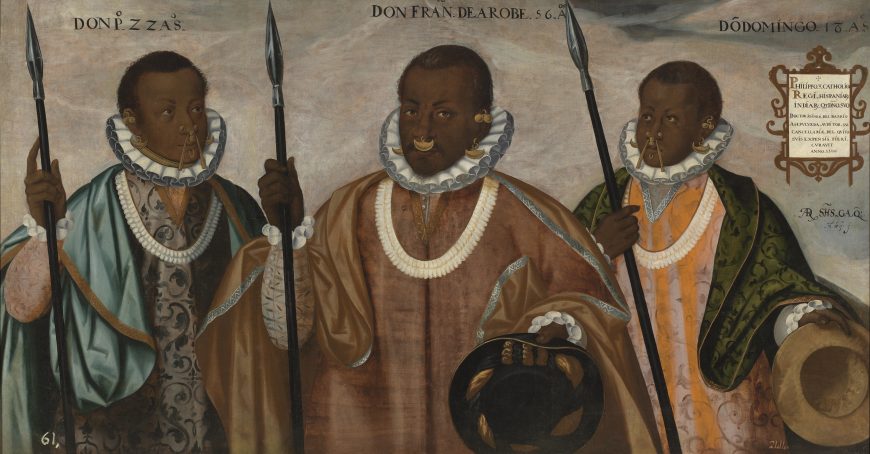
Any discussion of colonial Andean portraiture must begin with Andrés Sanchez Gallque’s Three Mulatto Gentlemen of Esmeraldas from 1599, as it is the first signed and dated canvas in South America. The indigenous Quito artist depicts three men of indigenous and African descent. Don Francisco, at center, is flanked by his sons Don Pedro on his left and Don Domingo on his right.

All three of the men wear clothing associated with varying cultural affiliations. The stiff ruff collars and sleeves (called lechuguillos, or “little lettuces”) pay homage to Spanish and Flemish styles.
All three wear Andean uncus, or tunics, but the lustrous sheen of the fabrics suggests that they were fashioned from imported silk. Their necklaces derive from shells found along the coast of Ecuador, while the elaborate gold earrings and nose rings were likely fashioned out of gold extracted from mines in Colombia.
These men, in effect, embody a global material aesthetic made possible by the Spanish colonial enterprise. Taking up nearly the entirety of the picture plane, these men appear almost larger than life. Their open stance and steel-tipped spears further communicate a sense of power and authority.
A consideration of the historical context under which this portrait was produced, however, tells a different story. Don Francisco was the cacique (local indigenous ruler) of Esmeraldas, which had previously been an independent Afro-indigenous community on the north coast of Ecuador. In 1597, he submitted to Spanish authorities and the area became incorporated into the colonial bureaucracy. The judge responsible for this transfer of power, Juan de Berrio, commissioned this portrait as a gift to the Spanish King Philip III to commemorate his subjugation of the region. The portrait reveals the tensions of power at play in the realm of visual representation; Don Francisco and his sons assert the same kind of colonial authority to which they are also subjected. This image also demonstrates the power of portraits to act not only as depictions of an individual’s likeness, but as a visual “document” employed to commemorate political deeds.
Commemorative Portraits
Portraiture also became a tool for promoting alliances between members of the Spanish and indigenous elite. Marriage of Martín de Loyola with the Ñusta Beatriz and of Don Juan de Borja with Doña Lorenza Ñusta de Loyola, an anonymous canvas dating to c. 1680 that hangs in La Compañía Jesuit church in Cuzco, commemorates two marriages between Inka-descended women and prominent members of the Jesuit order.
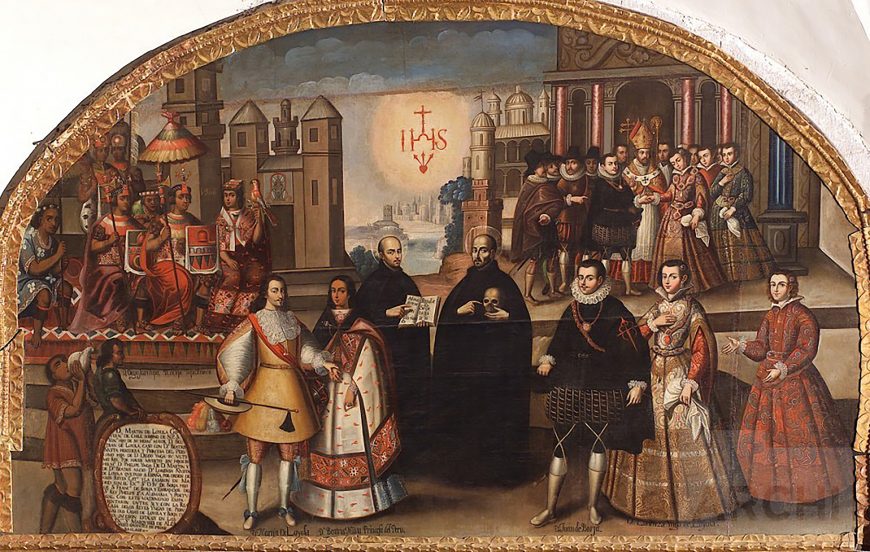
The cartouche at the lower left, a common feature in colonial paintings, provides a biographical sketch of the figures depicted in the scene. The two central figures wearing black cloaks are St. Ignatius of Loyola, the founder of the Jesuit order, and St. Francis Borgia, who holds a human skull. On the left, Martín de Loyola, nephew of St. Ignatius, is shown marrying Beatriz Coya, a direct descendant of the Inka ruler Huayna Capac. To the right, Count Juan Enríquez de Borja y Almanza, grandson of St. Francis Borgia, marries the daughter of Martín de Loyola and Ñusta Beatriz.
The painting is not a realistic portrayal of reality, given the nearly forty-year gulf that separates the two marriages. Moreover, the former marriage occurred in Cuzco’s central plaza while the latter was performed in Madrid. Both locales are depicted in the respective backgrounds of the wedded couples. Instead, it is a commemorative portrait intended to demonstrate the seamless mixture of Spanish and Inka elite blood into perpetuity.
The power of history in the eighteenth century: Inka portraits
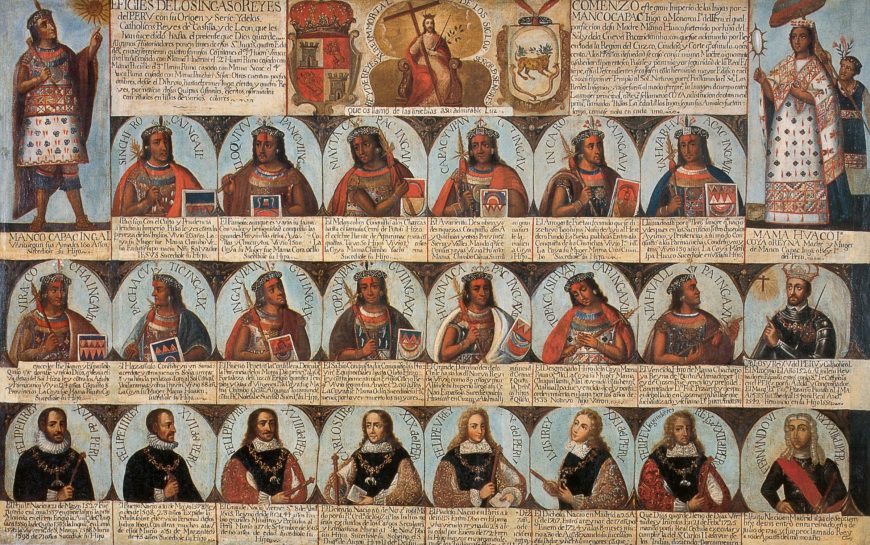
Portraits depicting the lineage of Inka and Spanish kings served as another means for solidifying links between the Inka and Spanish aristocracy. Effigies of the Inkas or Kings of Peru (c. 1725) depicts portraits of Inka kings from Sinchi Roca to Atahualpa, followed by portraits of Spanish monarchs from King Charles V to Ferdinand VI. At the top left and right are portraits of Manco Capac and Mama Huaco, the mythical founders of the Inka empire. Textual glosses identify and describe the deeds of each king. A portrait of Christ at the top center holding an olive branch, sword, and cross creates a compositional triangulation that places him at the apex of a hierarchy of rulership. Paradoxically, the Inka kings are positioned closest to Jesus rather than their Spanish successors.
The organization of the image creates a productive tension between two types of visual readings: viewing the image as composed of a tripartite spatial scheme with Christ and the Inkas occupying the “celestial” plane; or viewing it in conjunction with linear time, from left to right and top to bottom, implying a narrative of progress culminating in Spanish power.

Other aspects of the image show more definitive assertions of colonial power. The figure of the Inka king Atahualpa, located in the second-to-last cell in the middle row, looks directly at the Spanish King Charles V, pointing his lowered staff toward the Spanish king as a gesture of submission. Charles V points his finger to an illuminated cross, suspended in air to symbolize the entry of Catholicism to Peruvian lands. Atahualpa’s offering gesture served to normalize the conquest as a natural transfer of power.
These eighteenth-century lineage portraits attest to a renewed interest in the Inka past at a time when privileges granted to indigenous elites began to be curtailed under the Spanish Bourbon monarchy (1700–1808). Effigies of the Inkas or Kings of Peru asserts the primacy of the Spanish monarchy while also attesting to Inka cooperation in the creation of a Christian colony. Loyalty served as a crucial tool of political diplomacy in Spanish-Inka negotiations.
Elite criollo portraits
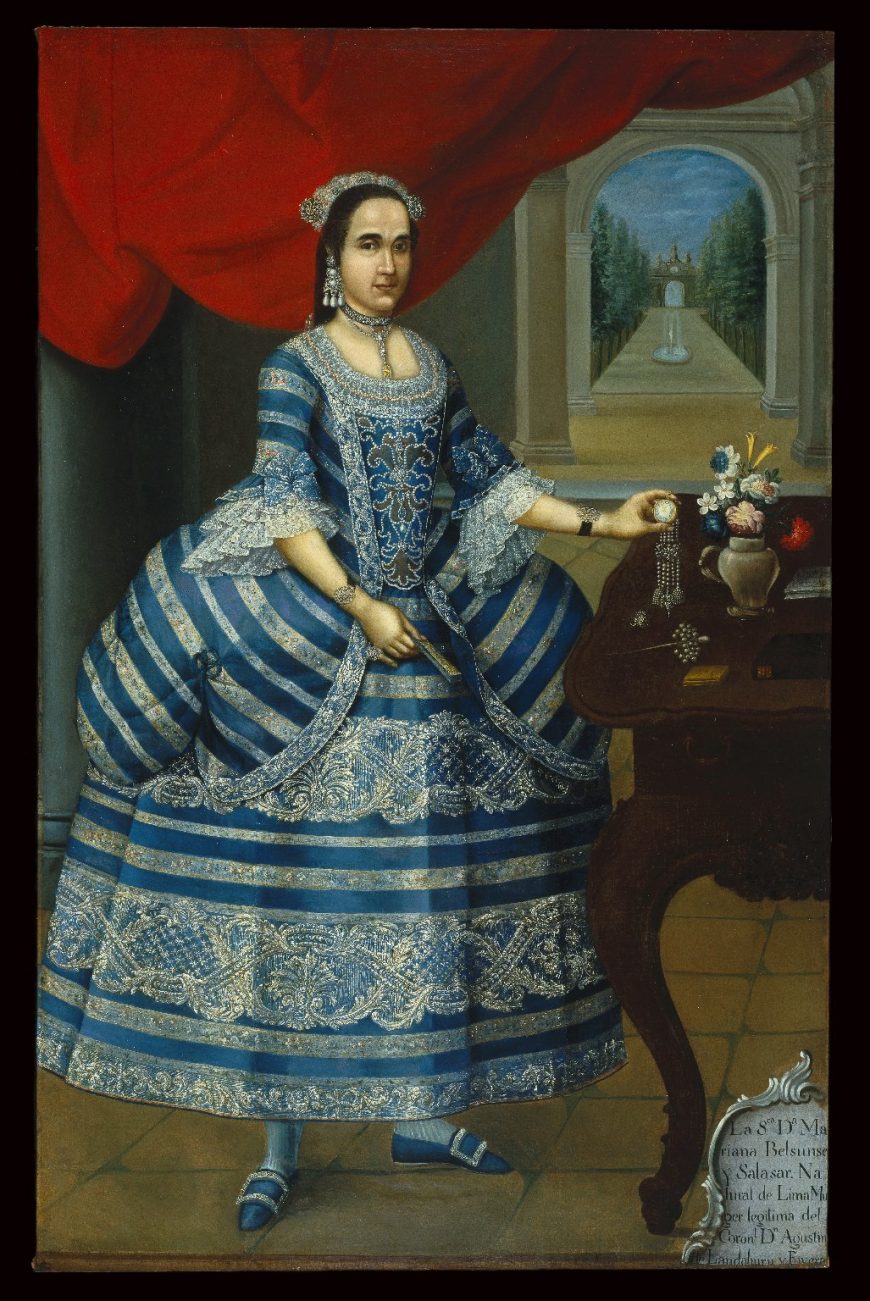
Elite criollos (people born in the Americas, but of Spanish lineage) also commissioned large-scale portraits for display within private residences. Portrait of Doña Mariana Belsunse y Salasar (c. 1780), attributed to the artist Pedro José Diaz, depicts a wealthy member of Lima society who rose to local fame due to her involvement in a marital scandal. Belsunse y Salasar was unhappily married to an older man and decided to request a one-year grace period before consummating the marriage. She spent the subsequent year as a nun in a local convent where she stayed until he died. Upon his death, she resumed her life in Lima society and married one of his younger relatives, Agustín de Landaburru y Rivera.
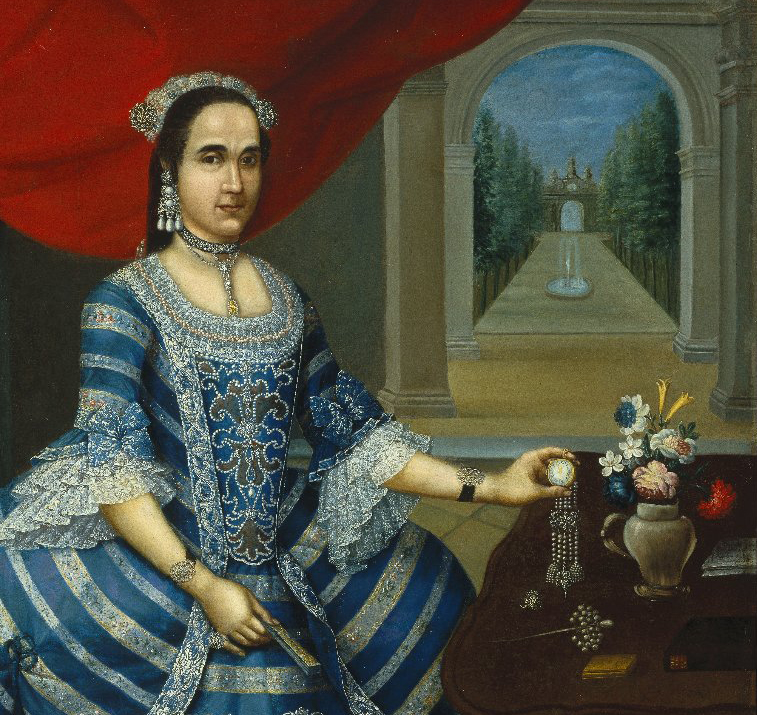
This portrait was painted after her return from the convent and displays a confident woman expressed through her three-quarter pose and direct eye contact with the viewer. Her finely detailed blue silk dress with lace sleeves reflects popular European fashions of the eighteenth century. The arched doorway looks out onto a tree-lined walkway with a fountain at the center, representing a park that she and her second husband donated to the city of Lima around 1755. This strategic inclusion in the portrait served as a means to highlight her social largesse and civic engagement. She delicately holds a fan in the right hand to connote modesty. The array of silver objects and jewelry in the portrait emphasize Belsunse y Salasar’s access to luxury goods, which she touches or wears as a means of embodying and even “performing” wealth. Unlike Effigies of the Inkas or Kings of Peru, which communicated power through recourse to history, Portrait of Doña Mariana Belsunse y Salasar remains firmly rooted in the present.
Identity and rebellion
Indeed, it was members of the criollo elite like Doña Mariana whose sights were fixed on the prospect of a future sovereign nation state — independent of Spain. At precisely the same moment when her portrait was painted in Lima, the southern Andean regions of Cuzco and La Paz were embroiled in bitter political conflict. The indigenous-led Tupac Katari Rebellion (1777–1780) in Alto Peru (present-day Bolivia) and Tupac Amaru Rebellion (1780–1783) sought to overthrow Spanish colonial rule and institute an indigenous power structure that drew inspiration from the Inka empire. The political conflict emerged largely as the result of increased economic burdens on indigenous peasant communities in the eighteenth century. These violent insurrections pitted natives against Spaniards, mestizos against criollos, and even native Andeans against each other, who were divided between Loyalist and Rebel factions.
The aftermath of the Tupac Amaru rebellion incurred around 100,000 deaths, the vast majority of whom were indigenous. These anticolonial rebellions exerted a cataclysmic impact on the colonial power structure, but they did not directly lead to independence. The movements for South American independence in the 1820s were largely dominated by criollos who resented their secondary status to peninsulares (Spaniards born on the Spanish peninsula) under the new Bourbon dynasty. The establishment of Latin American nations in the nineteenth century led to the development of new artistic genres, art academies, and arenas for the display of artworks. Nevertheless, colonial art left a longstanding legacy on the modern and contemporary arts of the Andes. Many of the portraits of South America’s liberators, for example, retain the same preference for flatness and poses found in eighteenth-century colonial portraits.
Additional resources:
Susan Verdi Webster, Lettered Artists and the Languages of Empire: Painters and the Profession in Early Colonial Quito (Austin: University of Texas Press, 2017)
Thomas Cummins, “Three Gentlemen from Esmeraldas: A Portrait Fit For a King,” in Slave Portraiture in the Atlantic World, ed. Agnes Lugo-Ortiz et al., 118-45. (Cambridge; New York: Cambridge University Press, 2013), 126-38.
Learn more about the Portrait of Doña Mariana Belsunse y Salasar
16th century
Introduction to religious art and architecture in early colonial Peru
Signaling Spanish dominance in Cuzco, Peru
The transmission of Christianity to the Andes was both an ideological and artistic endeavor. Early missionaries needed to construct new spaces of worship and create images illustrating the tenets of the faith to recent converts.
The Convent of Santo Domingo in Cuzco (also spelled Cusco) offers an early glimpse into the evangelizing zeal of Peru’s mendicant orders’ project to create Christian structures atop the ruins of this recently conquered pre-Columbian city.
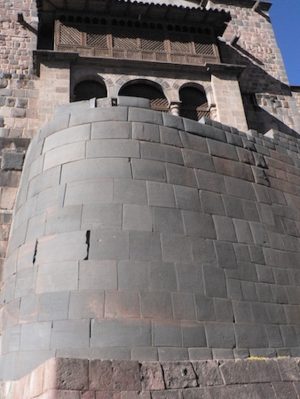
The church was founded by the Dominican order in 1534 and built directly on the remains of the Coricancha (also spelled Qorikancha, meaning “golden enclosure”), Cuzco’s most important Inka (also spelled Inca) religious temple. The remains of the Inka temple form a curved foundation for the church. A small chapel rests on top of the curved wall at the back of the main church.
The placement of a Spanish Christian structure atop a decapitated Inka temple is a symbolic act of power and subjugation. The church serves as a material manifestation of the “triumph” of Christianity over paganism, hovering over the ruins of a conquered civilization. On the other hand, the Convent of Santo Domingo pays homage to both Spanish and Inka traditions. The church has an austere fortress-like façade with a three-arched entryway supported by Solomonic columns. Above that, the shuttered balcony is reminiscent of Hispano-Islamic (often termed mudéjar) architectural antecedents. Four of the original rooms of the Coricancha became incorporated into the cloister of the Church, giving both the exterior and interior a culturally mixed architectural signature. The finely cut masonry and trapezoidal windows of the original Inka structure became juxtaposed with the convent’s Baroque architectural flourishes modeled on European churches.
The Coricancha’s former function as an Inka religious temple dedicated to the sun does not necessarily disappear with the arrival of Christianity, but rather becomes intertwined with Christian notions of divinity. By choosing the most sacred site of the former empire as a site for conversion and worship, the Dominican missionaries recognized the transcendent power the Coricancha once held, and reoriented it toward a new dogmatic enterprise.
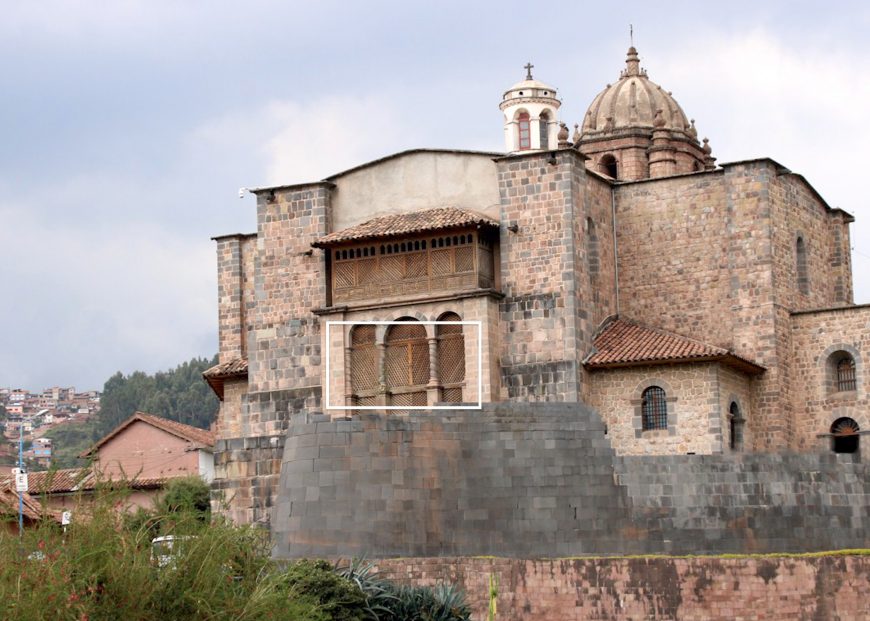
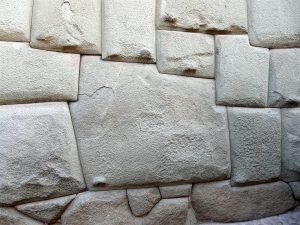
The sixteenth- and seventeenth-century chronicles of the conquest of Peru are rife with references to the unparalleled quality of Inka stonework; the Spaniards marveled at the ability of Inka stonemasons to produce mortarless structures whose stones were so closely aligned that one could not even fit a knife through their seams.
What at first sight may seem like an architectural incongruity, the interplay of Inka and Spanish stonework demonstrates the continued importance of Inka art forms in the colonial period as well as the intercultural exchanges that occurred in the making of colonial Cuzco.
Missionary spaces in the Collao region
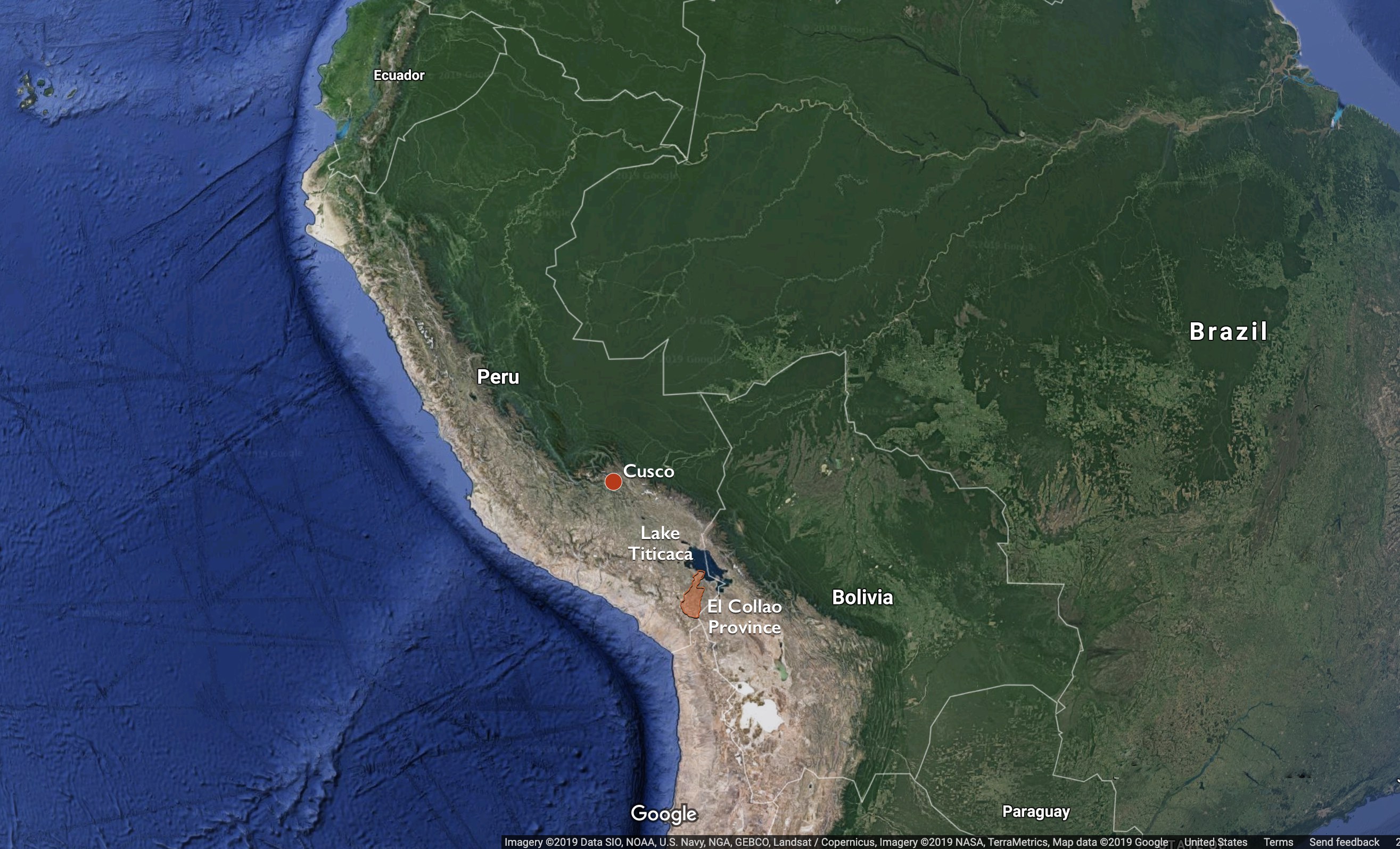
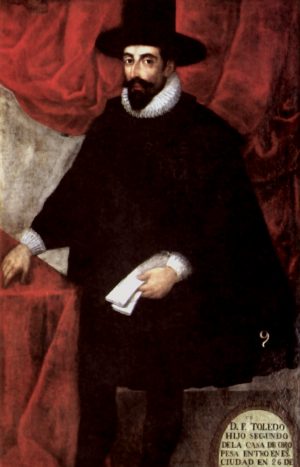
The missionary activities of the Dominican order extended far into southern Peru in the Lake Titicaca region. Clustered in this region of southern Peru, the missions of Juli, Pomata, and Chucuito share a number of similar features.
These mission churches formed a critical component of indigenous towns known as reducciones or pueblos de indios, which were instituted by the controversial Viceroy Francisco de Toledo during his appointment from 1569–1581. Reducciones were intended to isolate indigenous communities from their ancestral lands and shrines as a means of exerting political control and facilitating their conversion to Christianity.
The Church of La Asunción in the town of Chucuito, for example (in the Collao region of southern Peru) forms part of a large collection of Dominican mission complexes dedicated to the evangelization of native Andeans. The expansive adobe church emulates the large-scale mission churches of New Spain, also known as conventos. Like its colonial Mexican counterparts, the Church of La Asunción features a large atrium surrounded by a colonnade. The extensive outdoor space would have accommodated large congregations and also resonated with pre-Columbian Andean traditions of outdoor worship.
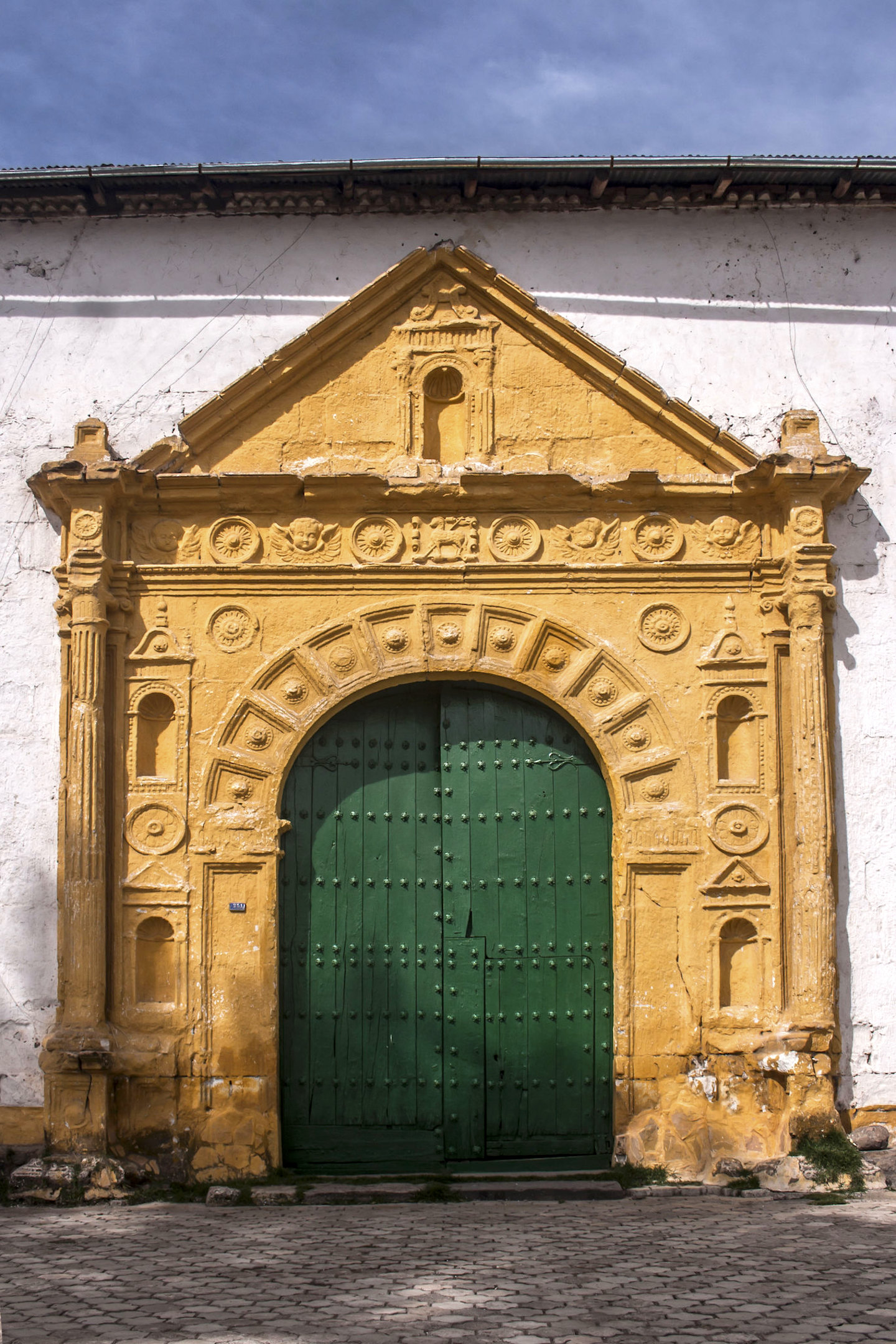
A restrained classicizing Renaissance-style carved stone façade frames the entry portal, flanked by pilasters and columns and topped with a pediment. Two carved niches on each side of the doorway may have originally contained sculptures of saints. The decorative relief carving along the arch and pediment provided an opportunity for Chucuito stonemasons to showcase their skills.
Early religious painting
Early painting of colonial Peru also served the didactic purpose of instructing indigenous people in the tenets of Catholicism through the language of images. European iconography traveled to the Andes through robust transatlantic trade networks that brought prints, pigments, paintings, brushes, and other art-related materials from Italy and Flanders by way of Seville, Spain.
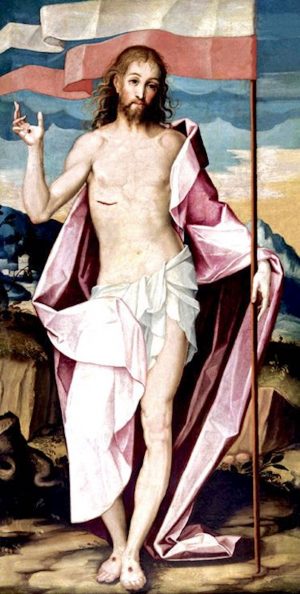
European artists also traveled to South America to help meet the growing demand for religious images. One such artist was the Italian émigré Bernardo Bitti. Bitti, a member of the Jesuit order, trained in Rome, where he spent the early part of his artistic career. He subsequently spent time in Seville before arriving in Lima in 1575. He worked throughout the Viceroyalty of Peru, completing artistic commissions in Cuzco, Arequipa, La Paz, Potosí, and Chuquisaca.
One of his best-known paintings, entitled The Resurrection of Christ and dating to 1603, hangs in the Capilla San Ignacio in Arequipa’s La Compañía church. Christ’s serpentine, elongated figure pays homage to Italian Mannerist painters such as Jacopo Pontormo and Correggio.
A number of Bitti’s disciples emulated his characteristic muted color palette consisting of pastel pinks and blues and crisply folded drapery, extending Bitti’s artistic influence far into the seventeenth century. Bitti’s uncluttered compositions transmitted Biblical themes in a direct and engaging manner.
Additional resources
SAFE (Saving Antiquities for Everyone), Cultural heritage at risk: Peru
Introduction to Andean Cultures
The lofty ambitions of the Inca, National Geographic
The Inca road, Smithsonian Magazine
Early Viceregal Architecture and Art in Colombia
In 1499, Alonso de Ojeda became the first Spaniard to step on what is today Colombian (as well as Venezuelan) soil. Often credited with circulating the myth of El Dorado, Ojeda’s expedition prompted that of later conquistadors, among them Jiménez de Quesada and Sebastián de Benalcázar. In 1525, the Caribbean coastal city of Santa Marta was established as the first Spanish settlement in Colombia, however it was the cities of Bogotá, Cartagena de Indias (commonly known as Cartagena), Tunja, and Popayán that would eventually rise to prominence.
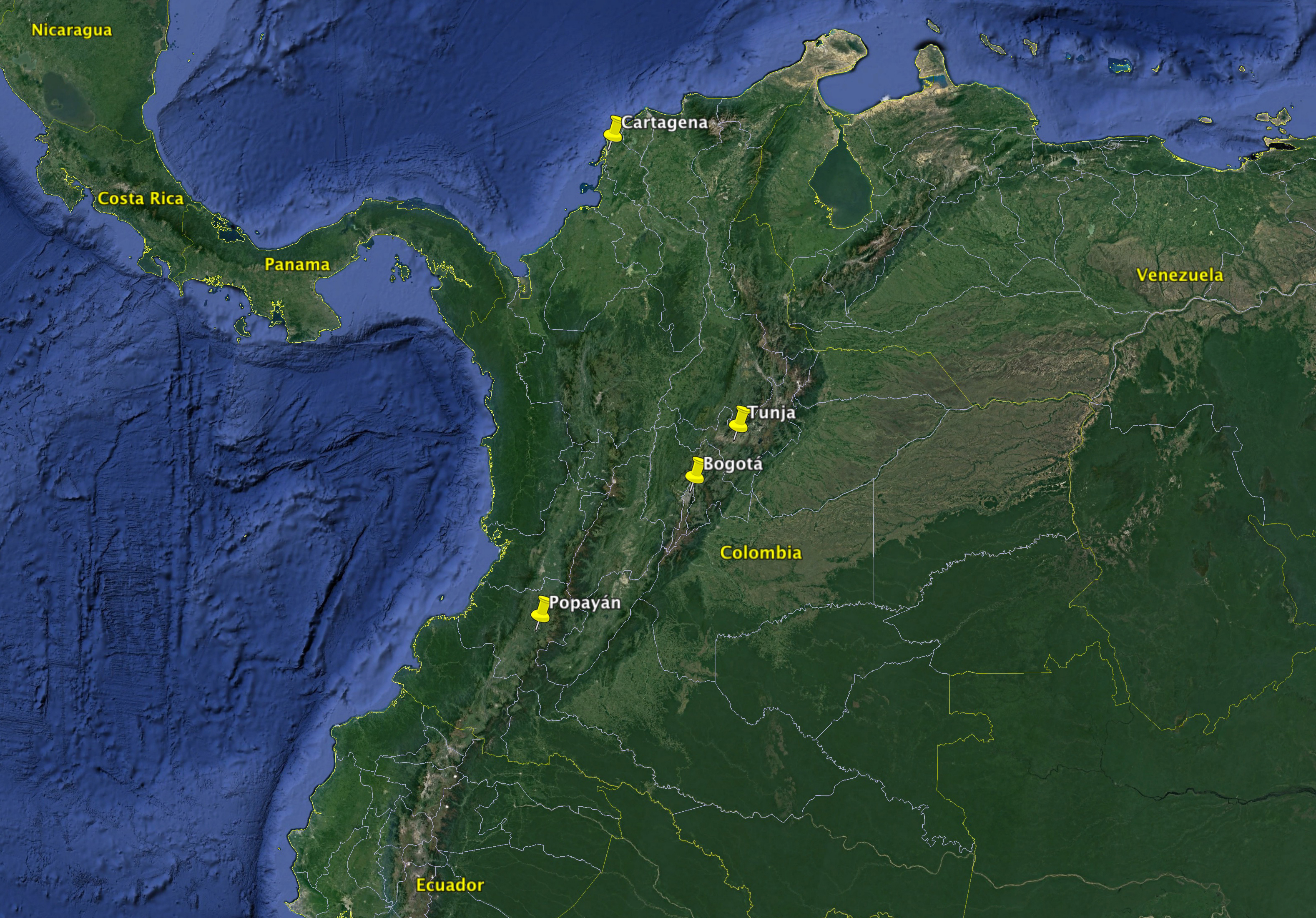
Popayán, for instance, was a highly profitable city as a result of its reliance on mining and slavery, which ensured substantial wealth for the city, and thus permitted the commissioning of impressive religious monuments. Before Bogotá was proclaimed the capital of the Viceroyalty of New Granada (the name given to the jurisdiction of the Spanish Empire in northern South America) in 1717, the city was home to the President of the Audiencia of Santa Fé, whose job was to oversee the Colombian provinces and report to the Viceroy in Lima.
An early colonial church in Bogotá
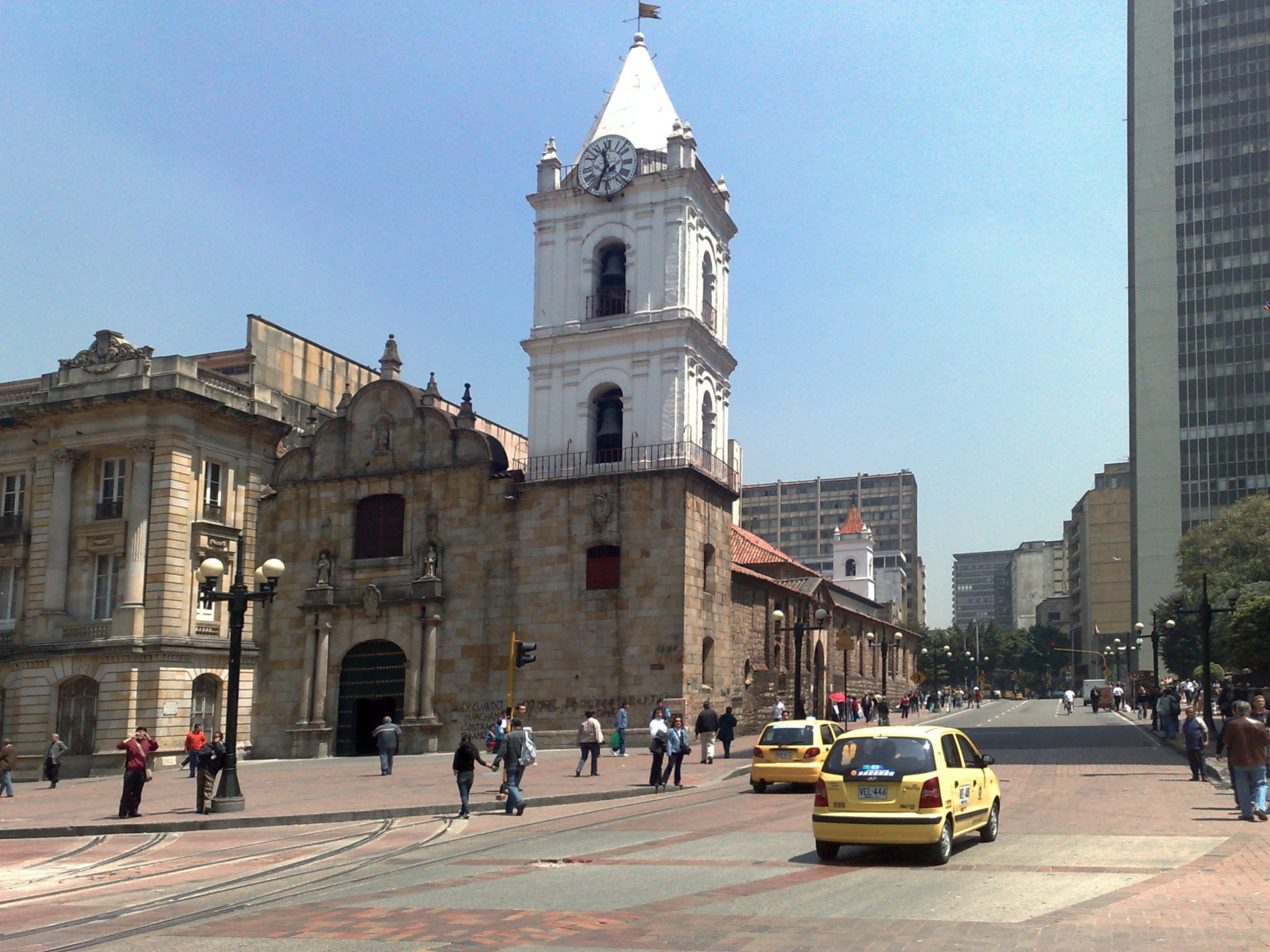
In Bogotá, the oldest surviving colonial church (1556) bears a modest façade in comparison to what is found inside. Featuring one bell tower and a single nave interior, the Church of San Francisco features an elaborate retablo (altarpiece) that invades the entire area of the apse (the semi-circular at one end of the church).
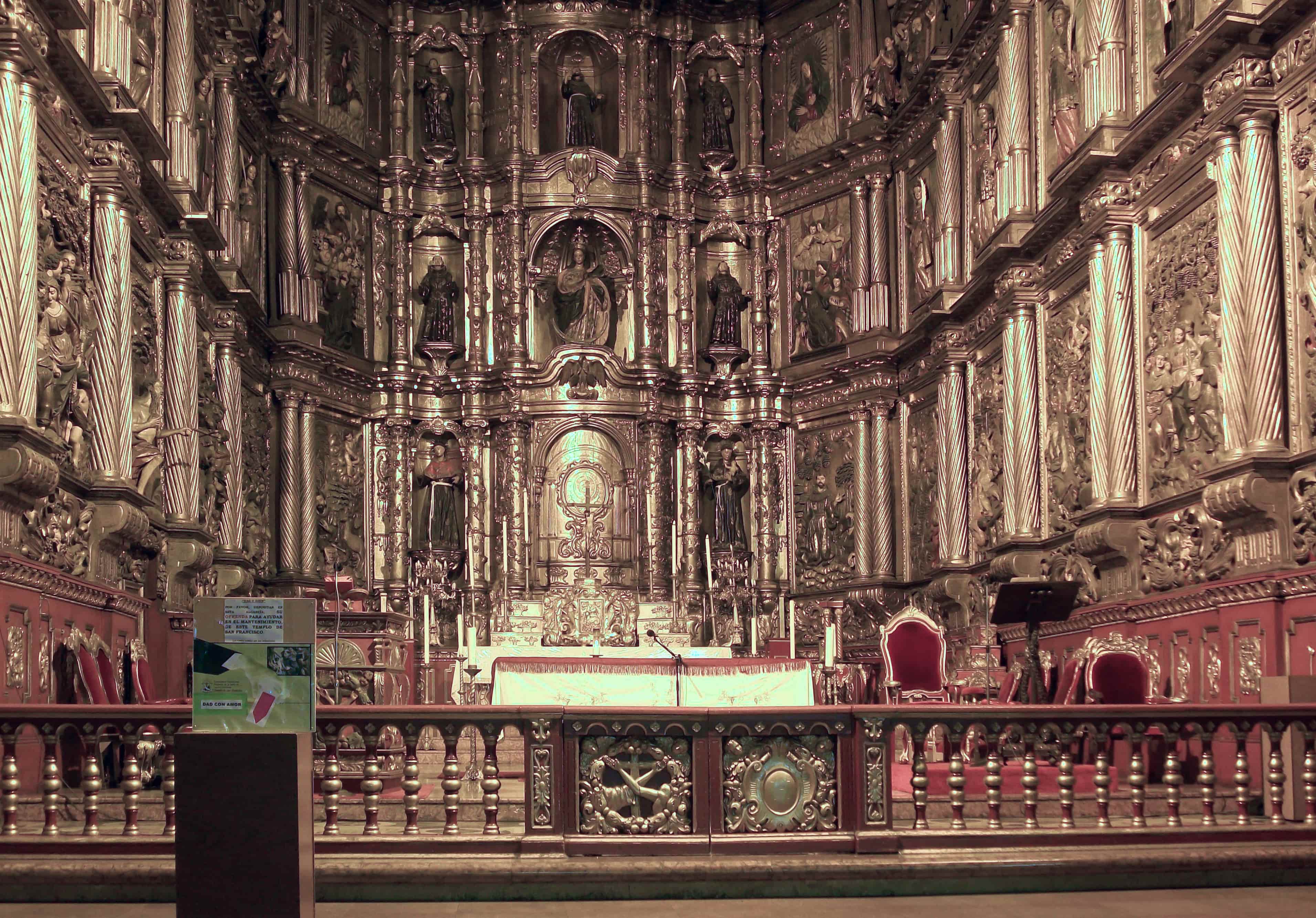
The retablo is gilded, and adorned with biblical sculptures (such as St. John writing the Apocalypse), spiral fluted columns, and indigenous plants like coconut and chontaduro palm trees (chontaduro is the fruit of a palm tree that is native to the Pacific rim of Colombia). Not only does this demonstrate that the convergence of local and foreign iconography (symbolism) was a widespread practice in the colonies, but also that it was a trademark of early colonial churches, when the process of evangelization was in its early stages.
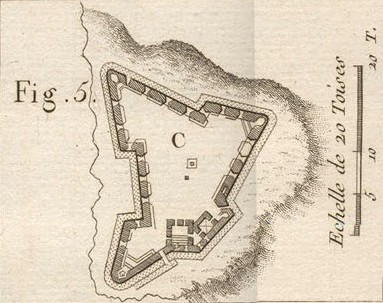
The Fortified City of Cartagena
Cartagena, founded in 1533, is located on the Caribbean coastline of Colombia. The city played an influential role in the dissemination of enslaved Africans throughout the viceroyalty. Due to its strategic position, Cartagena was not only an important trading post, but also a prime target for invaders, explaining the overwhelming presence of fortresses throughout the city. Starting in 1610, it also served as the seat of the Spanish Inquisition (founded in 1478 by Ferdinand and Isabel — King and Queen of Spain — to maintain Catholic orthodoxy in their kingdoms), which established only three Holy Offices in Latin America, one of which was Cartagena.
The city of Cartagena served as an important entry point into the Viceroyalty. Much like Veracruz, Cartagena was — and still is — an active port city. Enslaved people, gold, and silver were stored, exchanged, and shipped from Cartagena, which became wealthy and powerful during the colonial era. As a result, Cartagena, like other port cities in the Caribbean, such as La Habana and San Juan, was surrounded by thick and crenellated walls, hence its Spanish name as “la ciudad amurallada” (“the walled city”). This colonial city, contained within more than six miles of fortified walls, is unique in Latin America.

The Fortress of San Felipe, begun in 1630, was Cartagena’s main defense against French, Dutch, and English explorers, among them Sir Francis Drake, whose invasion of Cartagena in 1586 was known as the Caribbean Raid. These attacks continued into the eighteenth century, prompting various enlargements and renovations to the fortress. Located on a hilltop, the fortress provides a strategic view of both the city and port. Its thick walls (with foundations as thick as 65 feet), triangular design, and exterior ramp system make the fortress impenetrable, while a complex maze of underground tunnels connects this stronghold with the walled city.
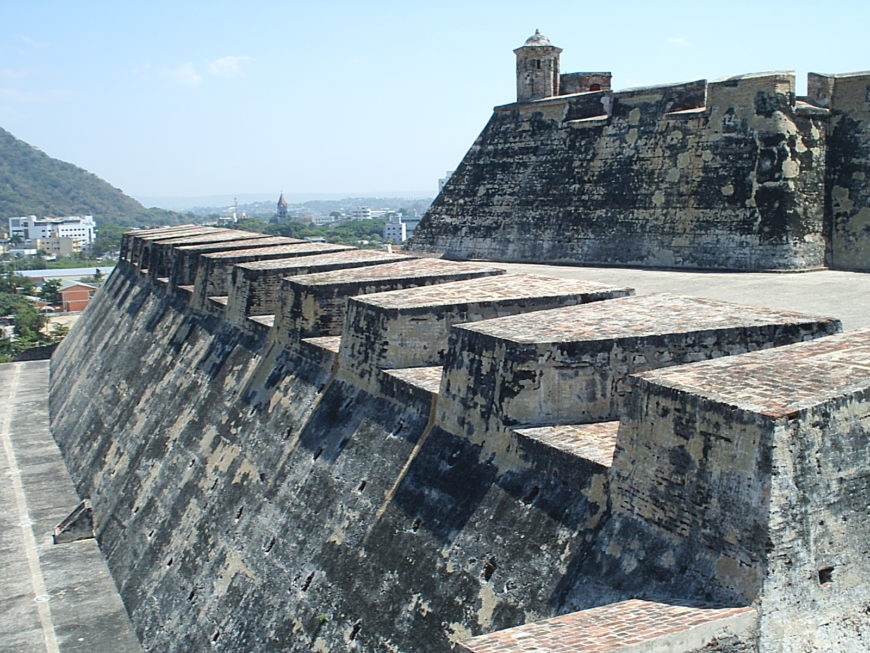
Early religious architecture in Tunja
Tunja, founded by Jiménez de Quesada in 1539, and Popayán, founded by Benalcázar in 1537, are also located in vastly different regions of Colombia. Through the efforts of important art patrons (such as Juan de Vargas, Gonzalo Suárez Rendón, and Juan de Castellanos), Tunja emerged as an intellectual and humanist center.
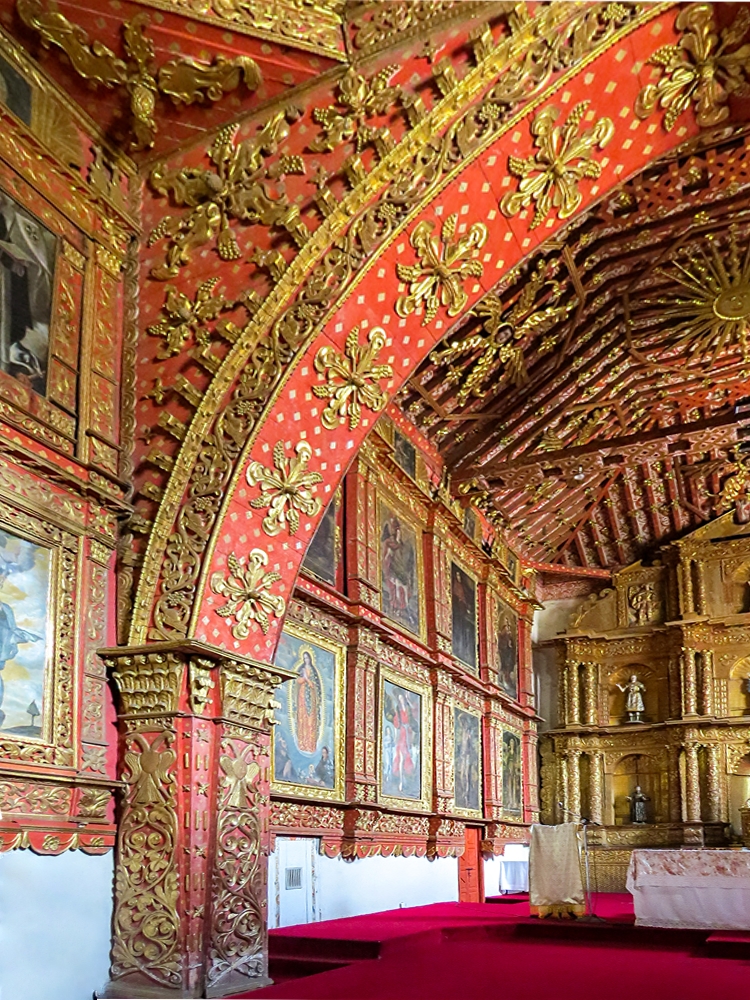

In Tunja, the Church of Santa Clara was the first convent of colonial Colombia. Its interior features, like at the Church of San Francisco in Bogotá, includes indigenous iconography. The golden sun, located prominently above the apse, held special significance for the Chibcha, who considered it their principal god, as well as life giving force.
Surrounding the golden sun, and throughout the interior of the church, bodiless angels appear to float aimlessly. With their heads located at center and surrounded by six wings, these seraphim recall the golden sun.
The fact that these solar symbols were made explicit both on the walls of the church, as well as on liturgical pieces, demonstrates the importance of hybrid iconography in the evangelization process, while their repetition might suggest insistency and forcefulness.
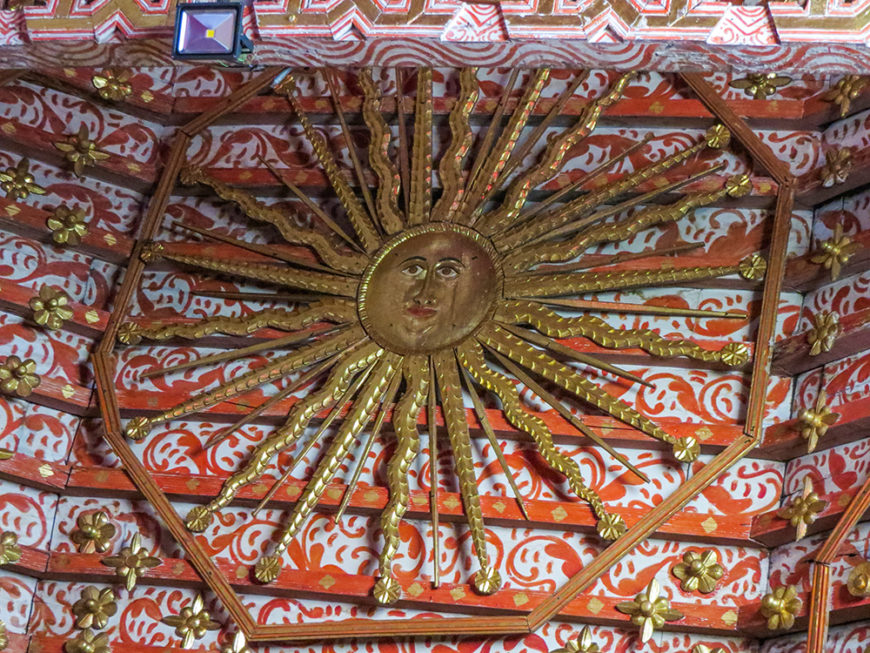
The House of the Scribe in Tunja
Iconography also played an important role in domestic architecture, particularly that of the renowned scribe Juan de Vargas. Commonly known as the House of the Scribe, it served as the home of the Vargas family, who arrived to New Granada in 1564. Under the patronage of Vargas, as well as that of the Spanish priest Juan de Castellanos and the founder of Tunja, Gonzalo Suárez Rendón, a humanist tradition began to brew in Tunja.
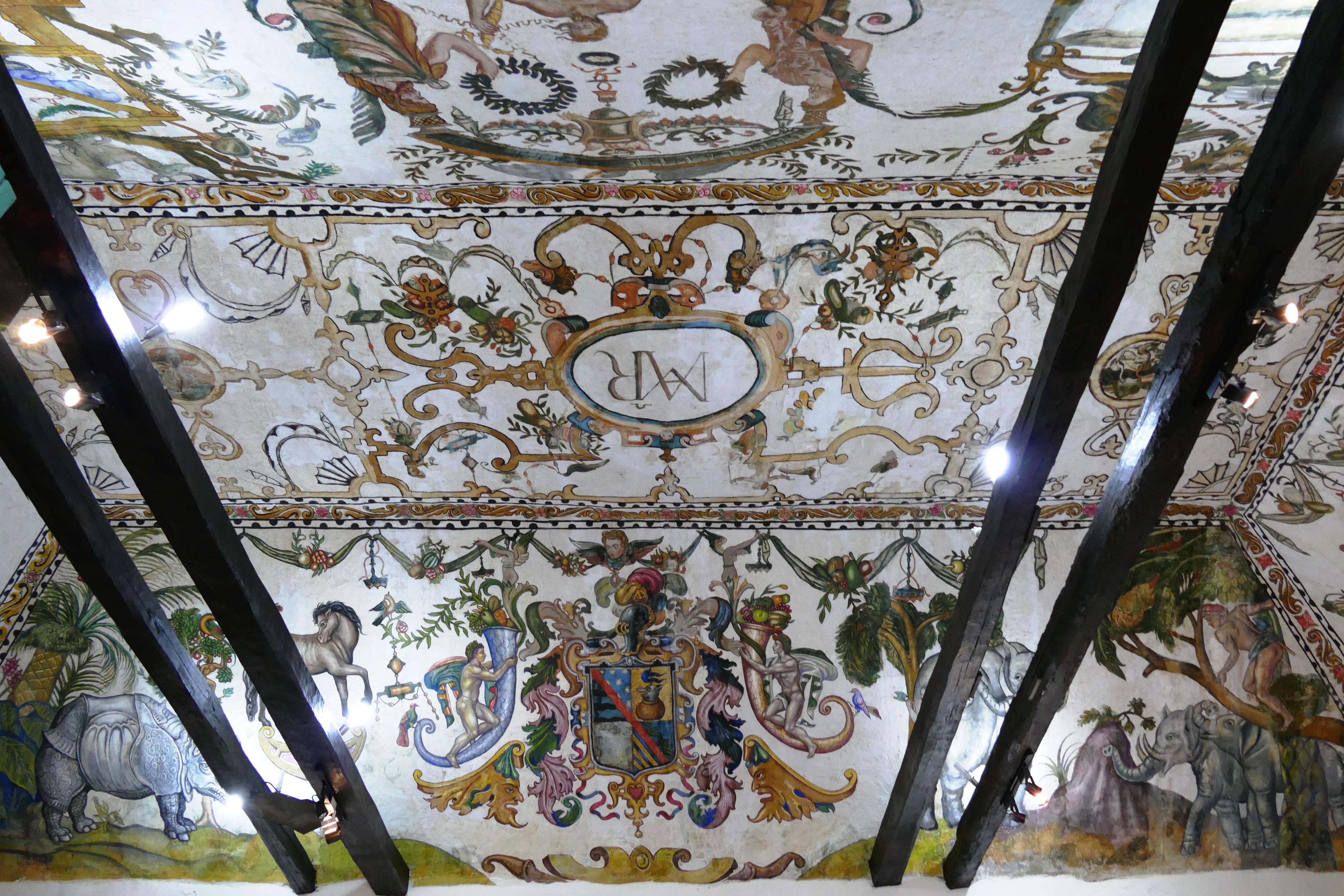
Similar to what had occurred in Renaissance Europe, the teachings of the Church were combined with the ideas of classical philosophy, creating a culture that was as much intellectual as it was religious. This was reflected not only in the private libraries of Vargas and Castellanos, which contained books, prints, and manuals (many of them from Europe), but also in their art collection. At the home of Juan de Vargas for instance, an extensive mural program features a unique conflation of Roman mythology, Christian iconography, and European painting.
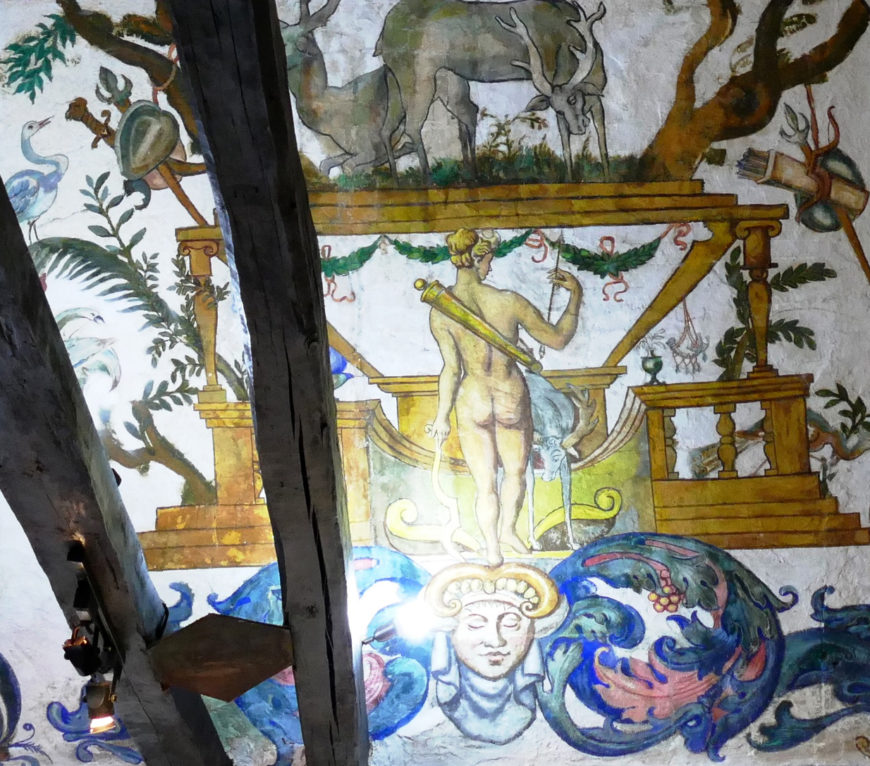
The mural features an iconography unlike any other in New Granada, and less common across the American continent at the time. It includes depictions of the Roman Goddess of Wisdom, Minerva, and the Goddess of Hunt, Diana, combined with religious symbols such as the Latin cross.
Even more interesting is the fact that these recognizable icons are set in a landscape of exotic flora and fauna, including a rhinoceros, which is not indigenous to Colombia. It is believed to have been copied from either an Albrecht Dürer print or from a copy of Dürer’s print by the Spanish engraver Juan de Arfe, published in De Varia Commensuración para la Escultura y Architectura (1587).
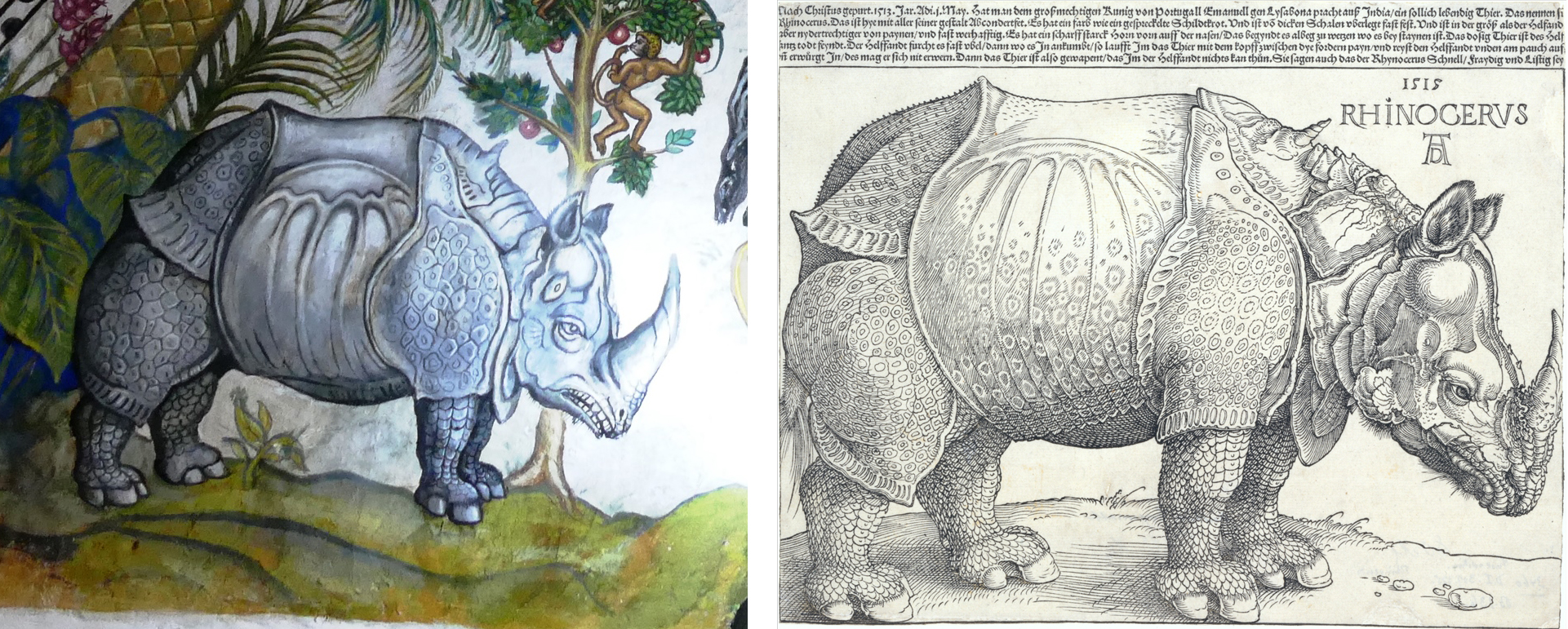
The end result is an eclectic combination of mythological and religious narratives set against a landscape of exotic figures, animals, and plants — revealing the cultural convergence that characterized the art of Spanish America.
Textiles in the Colonial Andes
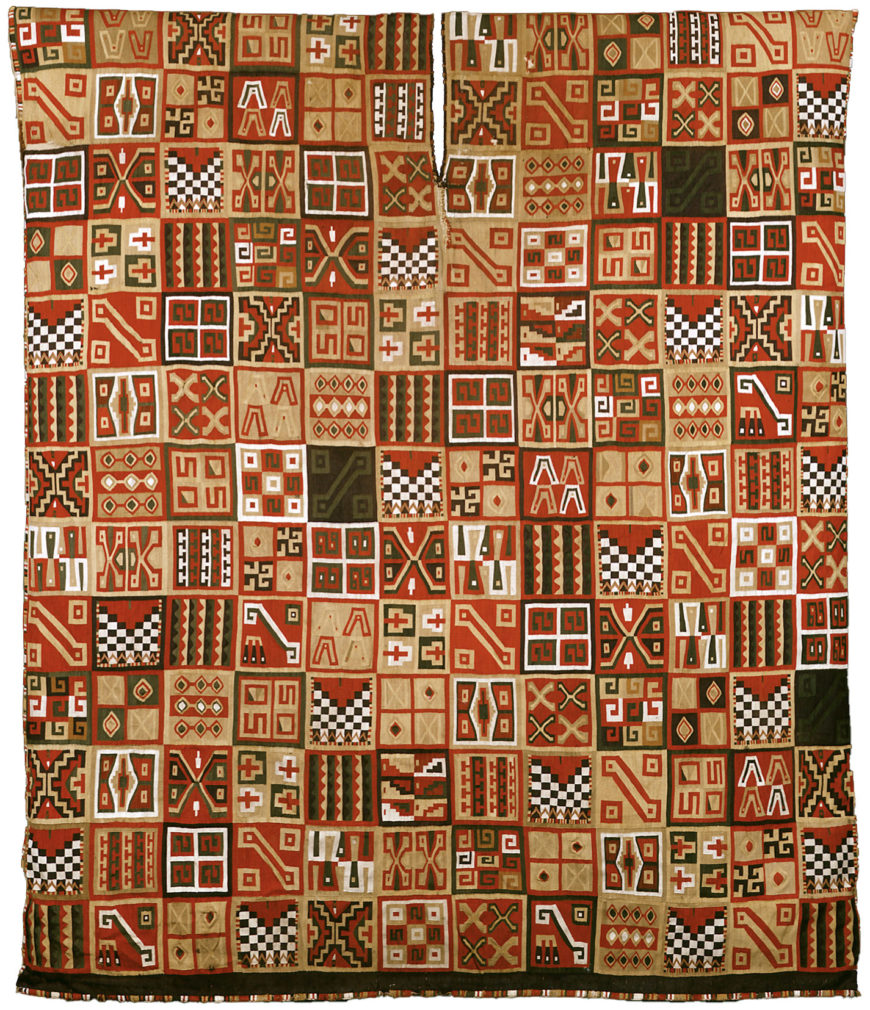
As in the sacred temples of the Christians, and in the Apostolic Palace of the Pope of Rome, the royal or imperial palaces [of the Inkas] were commonly whitewashed with gesso or lime, and during solemn festivals they were accustomed to adorning them with beautiful and rich tapestries, and for those of the greatest solemnity they would add brocades and fabrics of gold.Gonzalo Fernández de Oviedo, Historia general y natural de las Indias (General and Natural History of the Indies), 1492–1549
This statement, made by the Spanish naturalist and historian Gonzalo Fernández de Oviedo, describes the public use of textiles among the Inka in his Historia general y natural de las Indias (General and Natural History of the Indies), written between 1492–1549. Textiles were important in Inka culture, with the highest quality examples worth more than gold or any other luxury item.
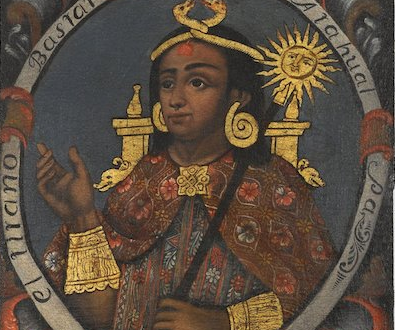
Textiles remained important items after the Spanish conquest in the Viceroyalty of Peru. In general, non-religious art enjoyed widespread consumption among the Viceroyalty of Peru’s diverse populace. Clothing, tapestries, drinking cups, and portraits helped express social identities as well as the negotiation of cultural boundaries. Many pre-Columbian artistic traditions continued into the colonial period and became invigorated with new materials and systems of manufacture. This was certainly true of textiles.
Unkus
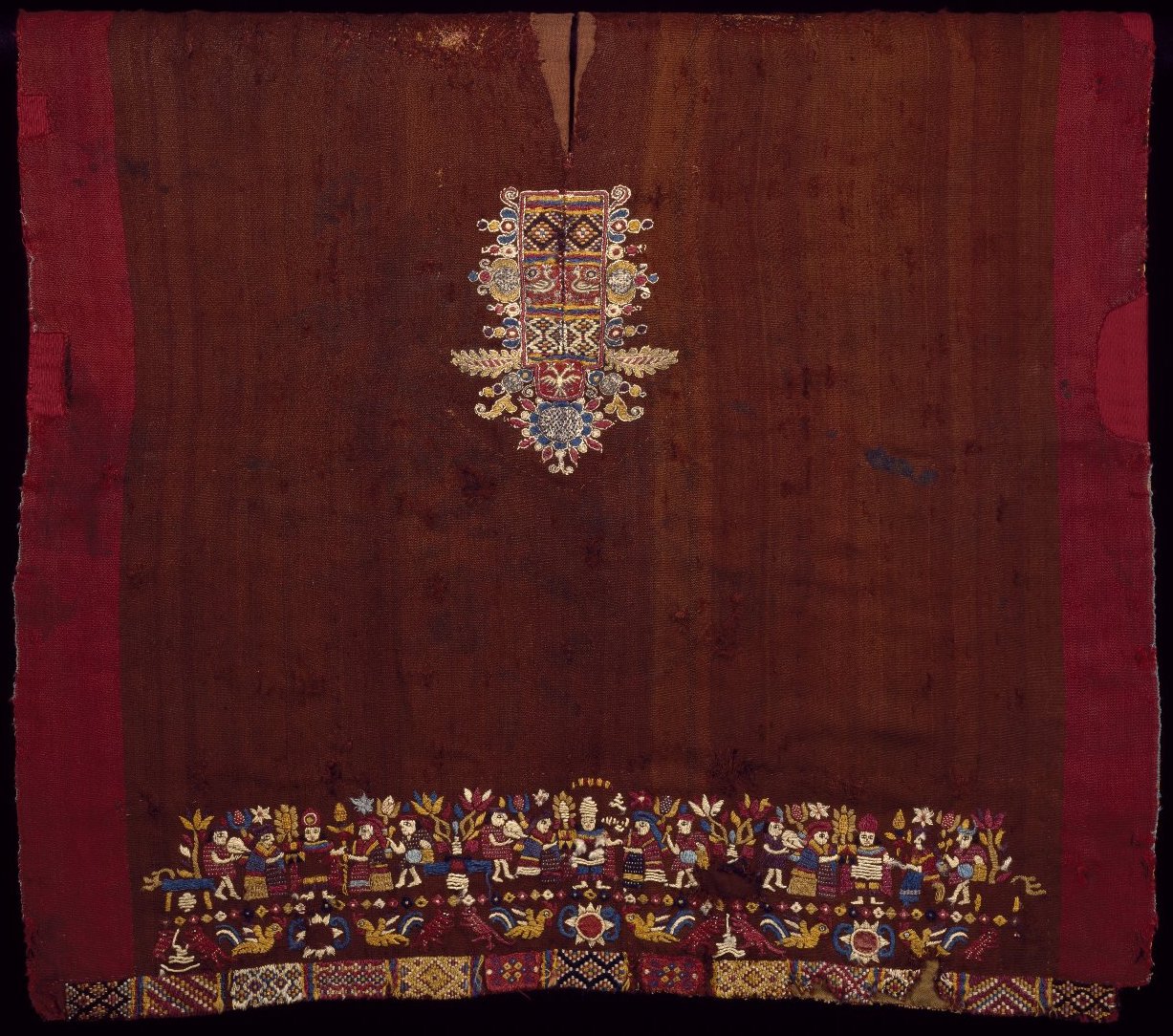
Although indigenous men were expected to adopt European-style dress, specialized weavers continued to produce uncus, or tunics, for special ceremonial occasions. A man’s tunic (above) dating to the seventeenth century features a colonial reinterpretation of a pre-Columbian weaving tradition. The tunic contains a band of tocapu along the bottom edge, which may symbolize the wearer’s geographical or ethnic affiliation.
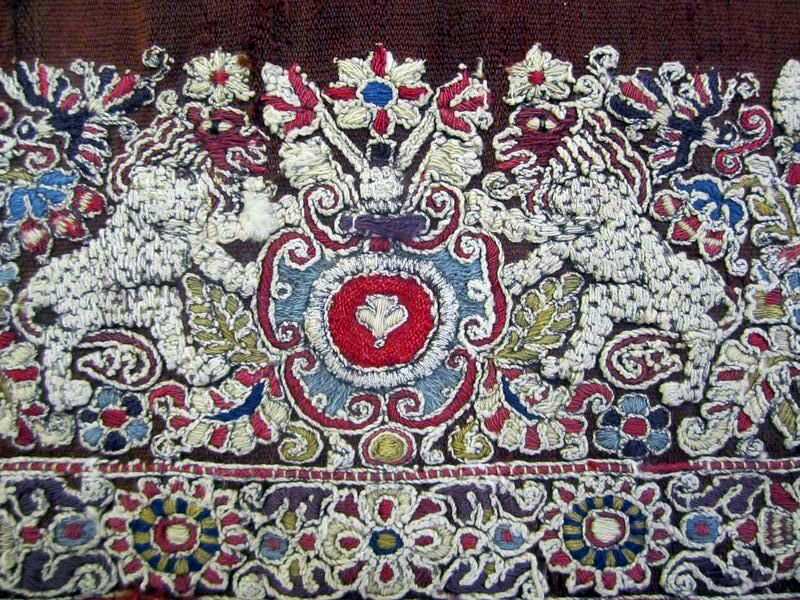
Some of the colonial tocapu seem to lack any specific meanings and appear somewhat generic, leading some scholars to suggest that tocapu became associated with a generalized notion of “Inkaness” used as a way to assert elite indigenous status. A set of rampant lions with raised paws is embroidered along the bottom edge of the backside of the tunic, betraying its colonial manufacture. Lions are animals commonly used in European art whose iconography circulated throughout the Americas after the Spanish conquest.
This type of tunic would have been commissioned by members of the indigenous elite and worn during ceremonial occasions such as civic processions and religious festivals including the feast of Corpus Christi. We see individuals wearing specialized tunics in paintings showing the procession during this feast. Tunics woven in an Inka style allowed native Andean elites to reenact and reinvent Inka power within a new colonial context.
Tapestries
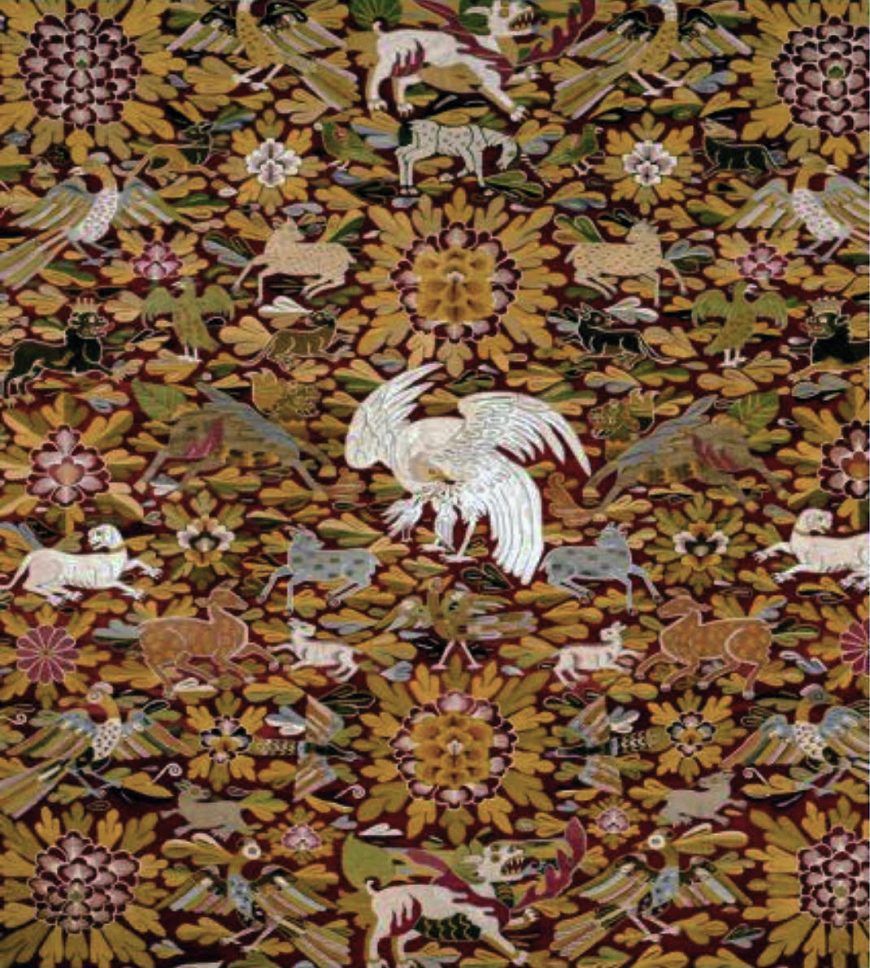
Tapestries also reveal a great deal about artistic cross-fertilization in the colonial Andes. Inka tunics belonged to a small segment of the population who claimed ties to the indigenous elite, while tapestries were enjoyed by a broader cross-section of the population (albeit the wealthy who could afford luxury goods). Textiles such as Tapestry with Pelican adorned the interiors of private residences as wall hangings or served as backdrops for religious and civic processions. The tapestry, which dates to the late seventeenth or early eighteenth century, attests to the robust trans-Pacific Manila galleon trade with which the Viceroyalty of Peru was engaged.
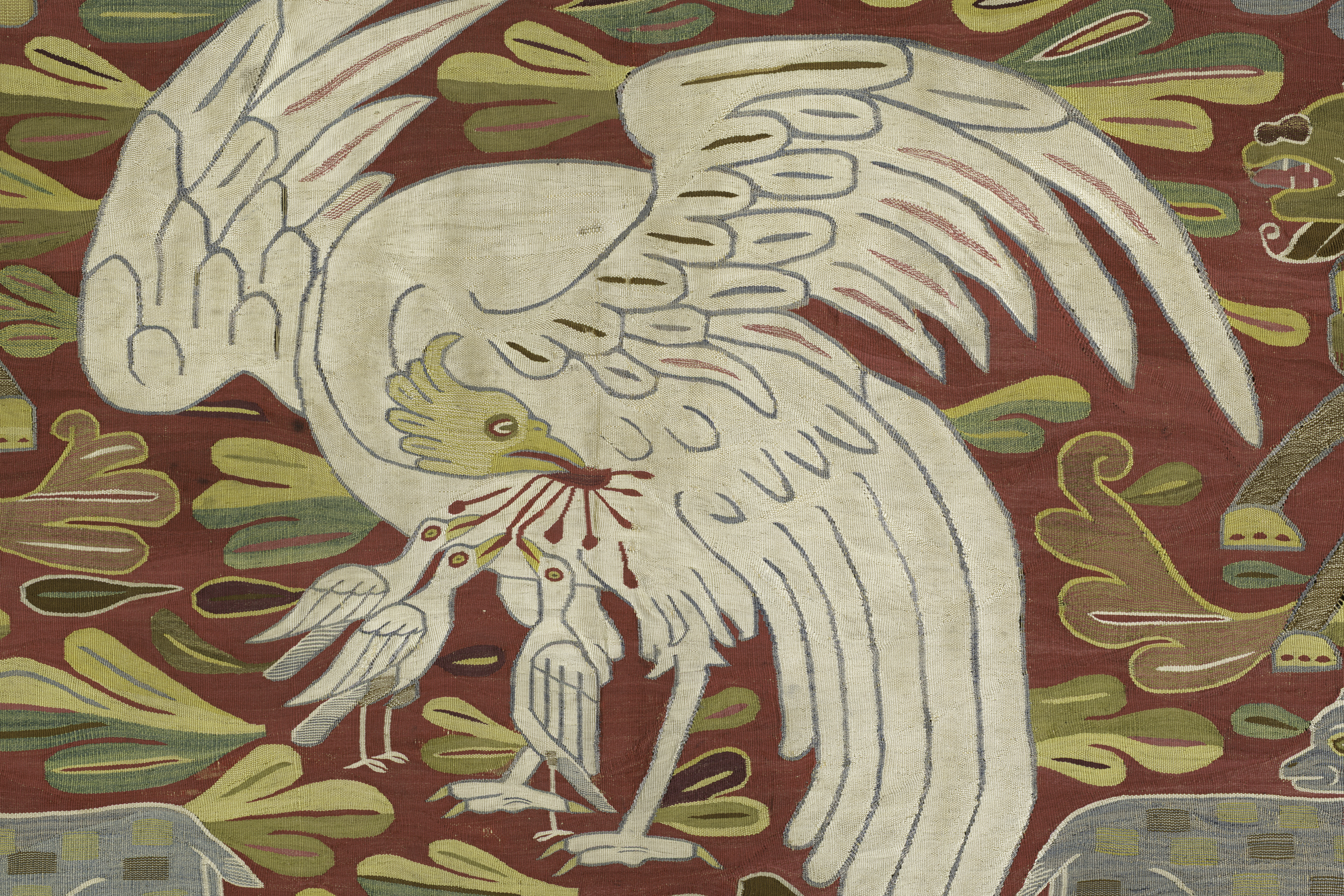
The iconography of the tapestry derives, in part, from embroidered Chinese silks that arrived in the Americas in large numbers after the fall of the Ming Dynasty in 1644. The pelican is depicted feeding her young with droplets of her own blood. As art historian Elena Phipps points out, this represents the Pelican in Her Piety, a common symbol employed by missionaries to represent Christ’s sacrifice. This serves as a reminder of the frequent presence of Christian themes even among artworks intended for private, non-religious consumption. The colorful tapestry also contains dogs, rabbits, parrots, horses, and Chinese mythological animals nestled among flowers and foliage giving it the appearance of a supernatural forest.
Textile murals
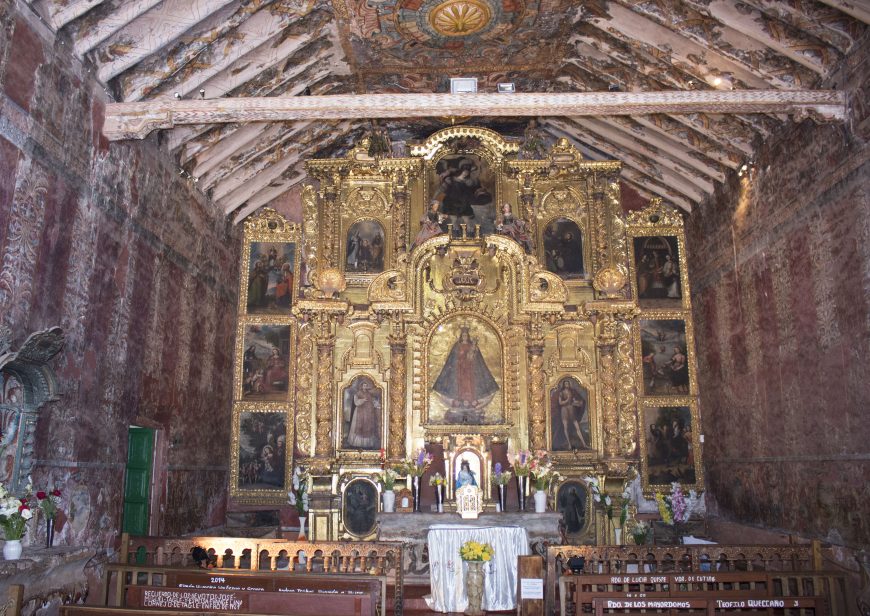
Tapestries figured so prominently in colonial Andean life that artists adapted their designs to a variety of artistic media. By the late seventeenth century, a number of rural churches throughout the Cuzco diocese featured “textile murals” that mimicked expensive brocades, laces, and tapestries but depicted with tempera paint applied to the walls in fresco secco (mural painting on dry plaster) technique.
One of the most impressive examples of a textile mural can be found at the chapel of Canincunca dedicated to Nuestra Señora de la Candelaria in the Quispicanchi Province just twenty miles southeast of the city of Cuzco. The entire interior of the chapel appears to be “draped” with sumptuous wall hangings, which upon closer inspection are in fact trompe l’oeil paintings that imitate the design and texture of cloth. The textile patterns consist of urns with flowering bouquets and counterposed s-shaped curves with leafy appendages. The patterns and color scheme resemble surviving examples of colonial textiles with interlaced vegetal motifs and floral ornamentation.
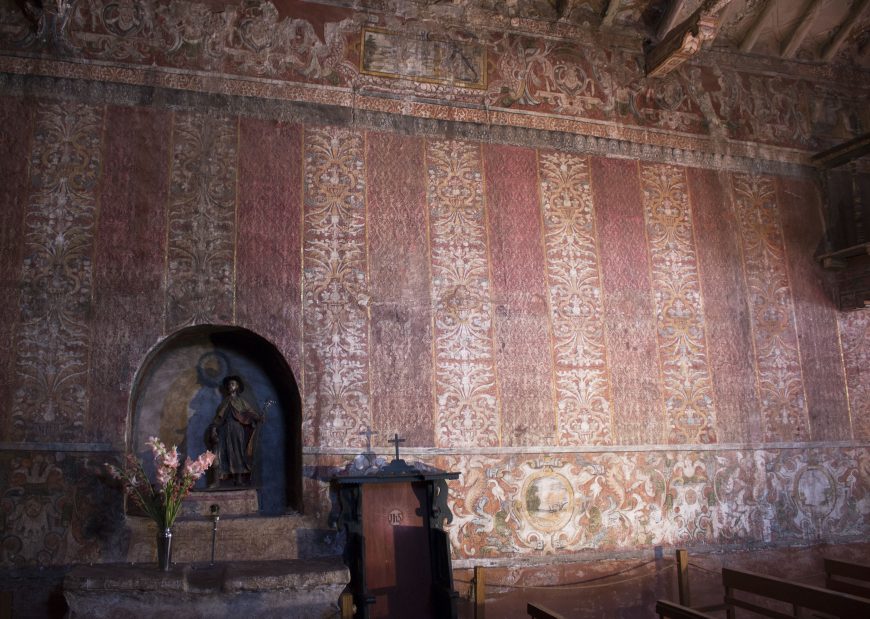
Although the textile murals at Canincunca are in the religious context of a church setting, the designs themselves are abstract and contain no explicit references to Christianity. Textile murals hovered at the intersection of religious and secular art, endowed with sacredness by virtue of their location within religious spaces. The notion of “clothing” a church with painted simulations of cloth may have also participated in the personification of the church as a living, bodily entity, whose resonances with Andean beliefs around the animated quality of the natural world would have been especially palpable.
Additional Resources
Elena Phipps, Johanna Hecht, and Cristina Esteras Martín, eds., The Colonial Andes: Tapestries and Silverwork, 1530–1830 (New Haven: Yale University Press and The Metropolitan Museum of Art, 2004)
Ananda Cohen Suarez, Heaven, Hell, and Everything in Between (Austin: The University of Texas Press, 2016)
Ananda Cohen Suarez, Painting Beyond the Frame: Religious Murals of Colonial Peru, on MAVCOR
17th and 18th centuries
Guaman Poma and The First New Chronicle and Good Government
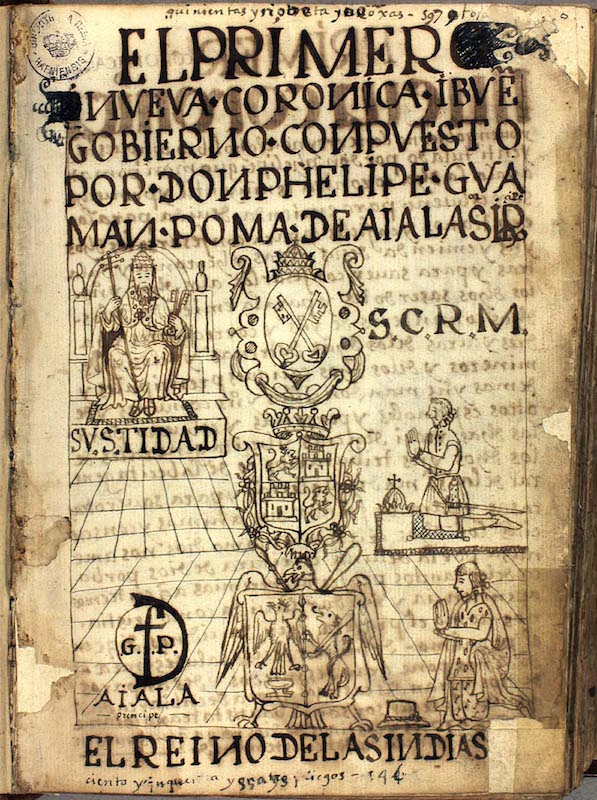
A very long letter
If you love to write letters, imagine writing one that is almost 1200 pages—complete with 398 full-page illustrations. Sound ambitious? Well, in the late sixteenth and early seventeenth century, the indigenous Andean man, don Felipe Guaman Poma de Ayala, actually wrote such an extensive letter in pen and ink addressed to the Spanish king (at one point Philip II, and then Philip III). It was called The First New Chronicle and Good Government (or El primer nueva corónica y buen gobierno, c. 1615). Guaman Poma wrote about Andean peoples prior to the arrival of Europeans in the 1530s as well as documented the current colonial situation (“Andean” refers to the Andes mountains, in what is today Peru). He was keen to record the abuses the indigenous peoples suffered under the colonial government, and hoped that the Spanish king would end them. Guaman Poma hoped to have New Chronicle printed when it arrived in Europe, and for this reason he borrowed from type-setting conventions when writing the textual inscriptions accompanying his illustrations, such as those on the frontispiece to his letter (above). It also explains why he left his images in black-and-white.

While the first part of the manuscript addresses Andean life and culture prior to the invasion of the Spaniards, the second half focuses on viceregal life and administration (viceregal refers to the administrator who ruled the Spanish colony in the name of the king from the Conquest of 1534 until independence from Spain in 1820). For the viceregal section of the letter, Guaman Poma discusses topics as broad as parish priests and local native administrators to religious and moral considerations and viceregal towns and cities. So New Chronicle is not only ambitious in length, but also in scope!
Significance
This amazing letter is special for several other reasons. First, it is the most famous manuscript from South America dated to this time period in part because it is so comprehensive and long, but also because of its many illustrations. Few illustrated manuscripts survive from this time period, and Guaman Poma’s has no rival. Second, it is important for what it tells us about pre-Hispanic Andean peoples, especially the Inka. While the Inka had an advanced recording system that used knots on cords, called khipus, researchers have not yet been able to translate them. Guaman Poma’s discussion of Inka culture provides us with information that would otherwise be lost to us, even if we have to be aware that he wrote this information a generation after the Spaniards defeated the Inka. Finally, the letter is written in Spanish, two indigenous languages (Quechua and Aymara), and Latin—highlighting the various languages Guaman Poma knew. One might even consider the many images a fifth, purely visual language, one that combined Andean and European systems of representation.

A brief biography of Guaman Poma
Born around 1525, Guaman Poma was a descendent of the royal Inka on his mother’s side and the pre-Inka Yarovilka dynasty on his father’s side. He had a half-brother, Martín de Ayala, who was a mestizo (meaning that one of his parents was Spanish) and worked as a priest, eventually converting Guaman Poma’s family to Christianity. He claims that his brother also taught him to read and write.
Because he could read and write in several languages, Guaman Poma worked as an administrator and scribe in the Andean colonial government. On several occasions he attempted to have lands near Huamanga (today, a province in Peru), which were at the center of a dispute, returned to his family. Ultimately, he was exiled from Huamanga after he was charged with falsely claiming he was a noble entitled to these lands.
Guaman Poma also worked with the Mercedarian friar, Martín de Murúa, who had traveled from Spain in the 1580s to Peru to help convert the native peoples of the Andes to Christianity. Murúa completed two different historical chronicles, which included color illustrations, the Historia general del Piru (General History of Peru) and the Historia del origen y genealogía de los reyes Incas del Piru (History of the origin and genealogy of the Inka Kings of Peru, 1590. Guaman Poma completed some of the images in the manuscript known as the Galvin Murúa—attesting to the productive working relationship between these two men (despite Guaman Poma expressing some dissatisfaction with Murúa in his New Chronicle). A distinct advantage of working with Murúa, however, was that it afforded Guaman Poma access to his library—influencing some of the information and drawings contained in his letter to the King.
Guaman Poma the artist
Guaman Poma’s illustrations offer insight into his perception of the Andean past and colonial present. They don’t simply duplicate the text, but often complement it. Throughout his letter, Guaman Poma’s drawings pay scant attention to the details of individual faces, though he does render detailed clothing. For example, some of the most famous illustrations from New Chronicle are those depicting the male Inka rulers (called the Sapa Inka).
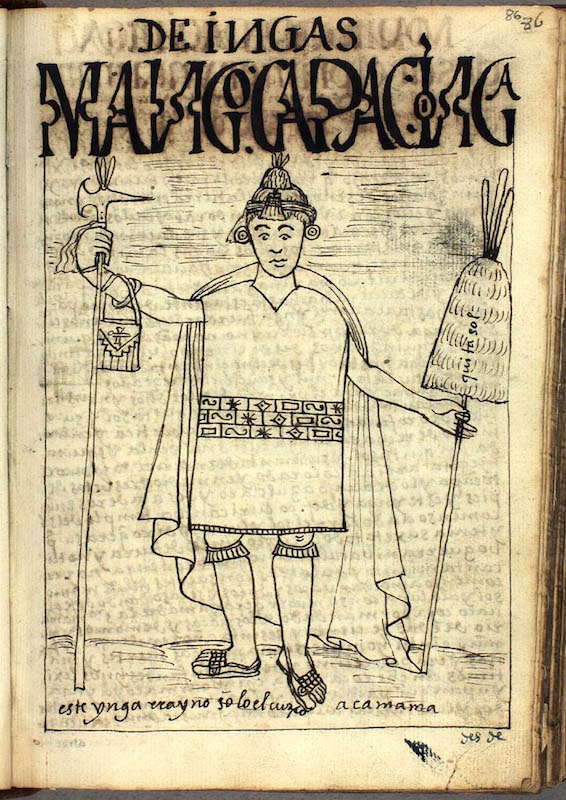
The image of the first Sapa Inka (above), called Manco Capac, shows the ruler standing in the center of the page, dressed in the appropriate regalia for a Sapa Inka. He wears a man’s tunic, called an unku, that has an elaborate, decorative band around his midsection. This is the tocapu, and it is reserved for the Inka ruler as a way to identify him and signal his special status. Manco Capac also wears elaborate sandals, earspools, and a special fringed ornament on his head, called the mascaypacha (and only worn by the Sapa Inka). A cape frames him from behind, and he holds a special staff and a weapon in his outstretched arms.
Maps
One of the most fascinating images from the manuscript depicts what Guaman Poma titles a “mappa mundi of the kingdom of the Indies” in other words, the Andean region (mappa mundi means “map of the world”).
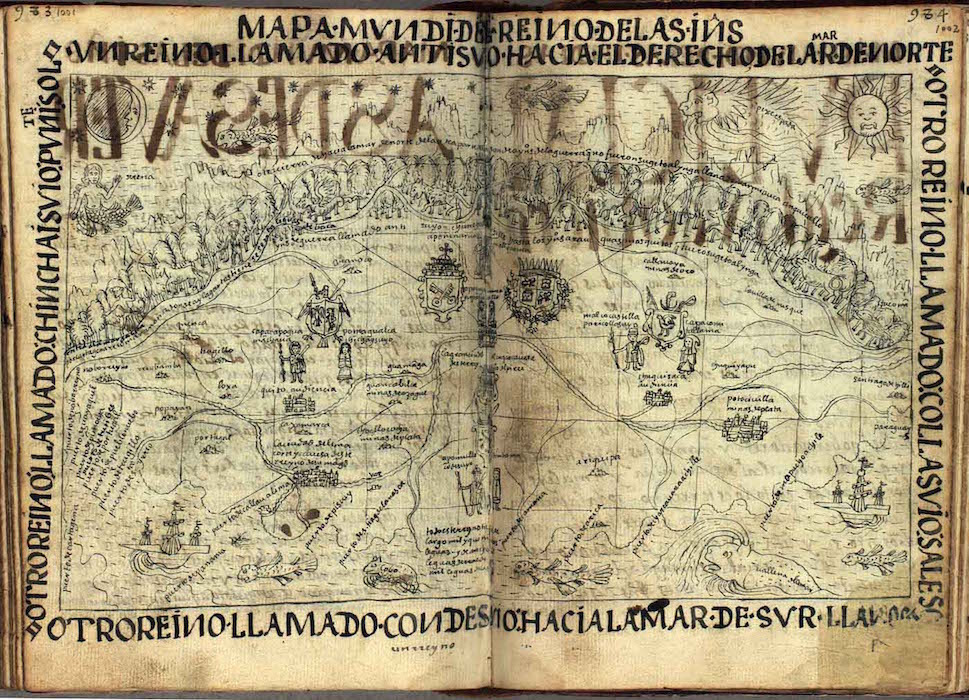
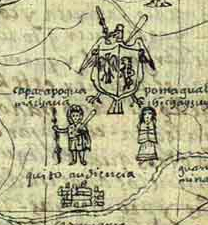
Guaman Poma’s map shows the Andean “Indies” divided into four parts, with the Spanish Crown’s coat of arms and the papal (Pope’s) coat of arms at the center. The four parts of the world are based on the earlier Inka division of their empire, known as Tawantinsuyu, or realm of the four quarters. Each realm had a different name, and was associated with specific ethnic groups. In Poma’s mappa mundi, we see each region represented by a male and female couple, along with a coat of arms representing the quarter. Important cities are labeled, along with rivers and mountains.
For example, in the realm to the left of center, known as Chinchaysuyu, we see the Audiencia of Quito (an administrative unit in the Spanish Empire) labeled just below the ruling couple (left). Fantastic beasts like unicorns, monkeys, hairy men, and creatures reminiscent of dragons and large flying fish, dot the fringes of the land. A mermaid waves below the moon on the upper left corner. While some of these spatial conventions and fantastical creatures borrow from medieval European mapping traditions, Guaman Poma blends them with Andean concepts of space and symbols.
The Symbolism of Space
Throughout his manuscript, Guaman Poma uses space to communicate Andean notions of power—specifically the complementary concepts of hanan (upper) and hurin (lower). The mappa mundi offers a nice example of these concepts. The couple in the center is the Sapa Inka Tupac Yupanqui (an early Inka king) and his coya (queen consort) Mama Ocllo (who was also his sister). The suyus, or regions, of Chinchaysuyu and Antisuyu represent hanan (upper) positions, while Cuntisuyu and Collasuyu are hurin (lower). While the hanan regions are considered superior, they also complement the lower regions. Neither could exist without the other, and represent broader binary yet complementary concepts like male/female or left/right. Another example of this complementary relationship between hanan and hurin can be seen in the plan of the Inka capital Cusco.
Guaman Poma uses these spatial concepts in other ways in his manuscript—sometimes to draw attention to someone’s importance. For instance, on the frontispiece of the manuscript (top of page) the pope is in the hanan position (reader’s left, but right side of the page), while the Spanish king and Guaman Poma are in the hurin position. In this way, Guaman Poma likely intended to convey the superiority of the Pope.
The Conquest, Civil War, and Revolts
In chapter 19 of New Chronicle, Guaman Poma recounts the Spanish Conquest and ensuing civil wars that erupted in the Andes. The images accompanying the text reveal the Spanish lust for gold and some of the key events of the Conquest.
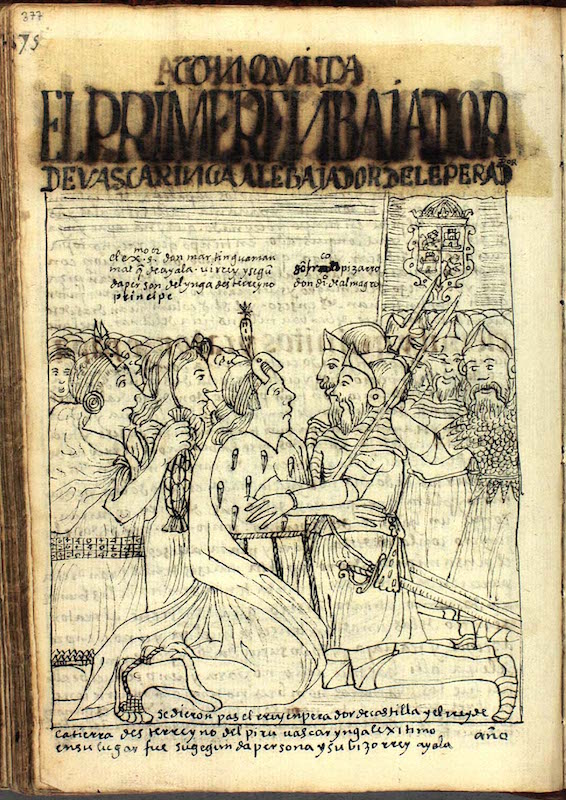
In one we see the Spanish conquistadors Francisco Pizarro and Diego Almagro, dressed in Spanish armor and leading troops (p. 373). Another image (above) shows the same conquistadors as they interact with Guaman Poma’s father, Don Martin de Ayala, who is noted as an ambassador to the Sapa Inka, Huascar Inka.

One of the most disturbing scenes of the Conquest is the beheading of Sapa Inka Atahualpa in the city of Cajamarca (above). Huascar Inka and Atahualpa were brothers who both sought to control the Inka Empire after their father died. Eventually, Atahualpa would defeat his brother during a civil war, and Atahualpa would then be captured by Pizarro. The illustration of Atahualpa’s execution shows him bound on a hard surface, his hands clasping a cross—a reference to his conversion to Christianity just prior to his death. A Spanish soldier holds a knife to his neck, as well as a mallet. Atahualpa’s eyes are closed, signaling that he is dead. The illustrations from this chapter portray the complexity and chaos of this time.
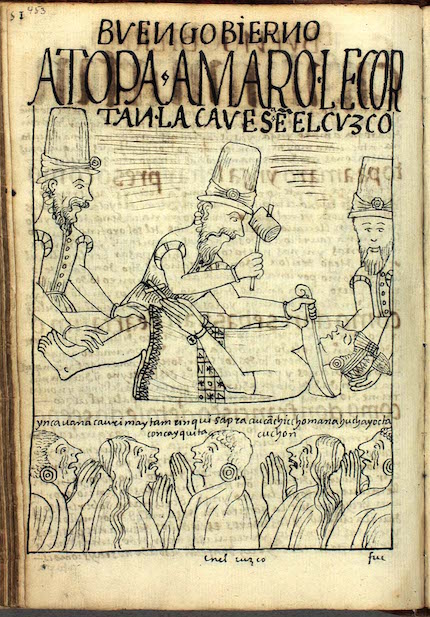
The following chapter details “good government” after the Spanish Conquest. In one illustration, we see the capture of Tupac Amaru Inka (p. 451), who led a series of revolts against the Spaniards as he and others attempted to retain an Inka state or empire free of the Spaniards.
Another image (left) shows Tupac Amaru’s execution in 1572, which mimics the death of Atahualpa Inka during the Conquest. Guaman Poma used the same basic composition and motifs, but this time with Tupac Amaru’s prone body resting above a group of weeping Andean peoples to highlight their suffering.
Tupac Amaru’s death is considered the end of the Conquest though he would remain a symbol of protest and revolt in the Andes throughout the colonial period, specifically the uprising led by Tupac Amaru II in the eighteenth century. (Fun fact: the hip-hop artist Tupac Shakur was named after Tupac Amaru II).
It is impossible to discuss all aspects of Guaman Poma’s Chronicle, but hopefully this essay provides a sense of the importance of his letter as a resource for learning about Inka and colonial Andean culture. While it never made its way into the hands of the Spanish king, and was never published and distributed as Guaman Poma intended, today the manuscript is available in its entirety online from the Royal Library of Denmark, where the original Chronicle is kept.
Additional resources:
A facsimile of the Historia general del Piru (also called The Getty Murúa)
Essays on The Getty Murúa from the Getty Museum
Rolena Adorno, Guaman Poma: Writing and Resistance in Colonial Peru (Austin: University of Texas Press, 2000).
Felipe Guaman Poma de Ayala, The First New Chronicle and Good Government, trans. Roland Hamilton (Austin: University of Texas PRess, 2009).
Guaman Poma de Ayala: The Colonial Art of an Andean Author (NYC: Americas Society, 1992).
“Bad Confession” in Guaman Poma’s The First New Chronicle and Good Government
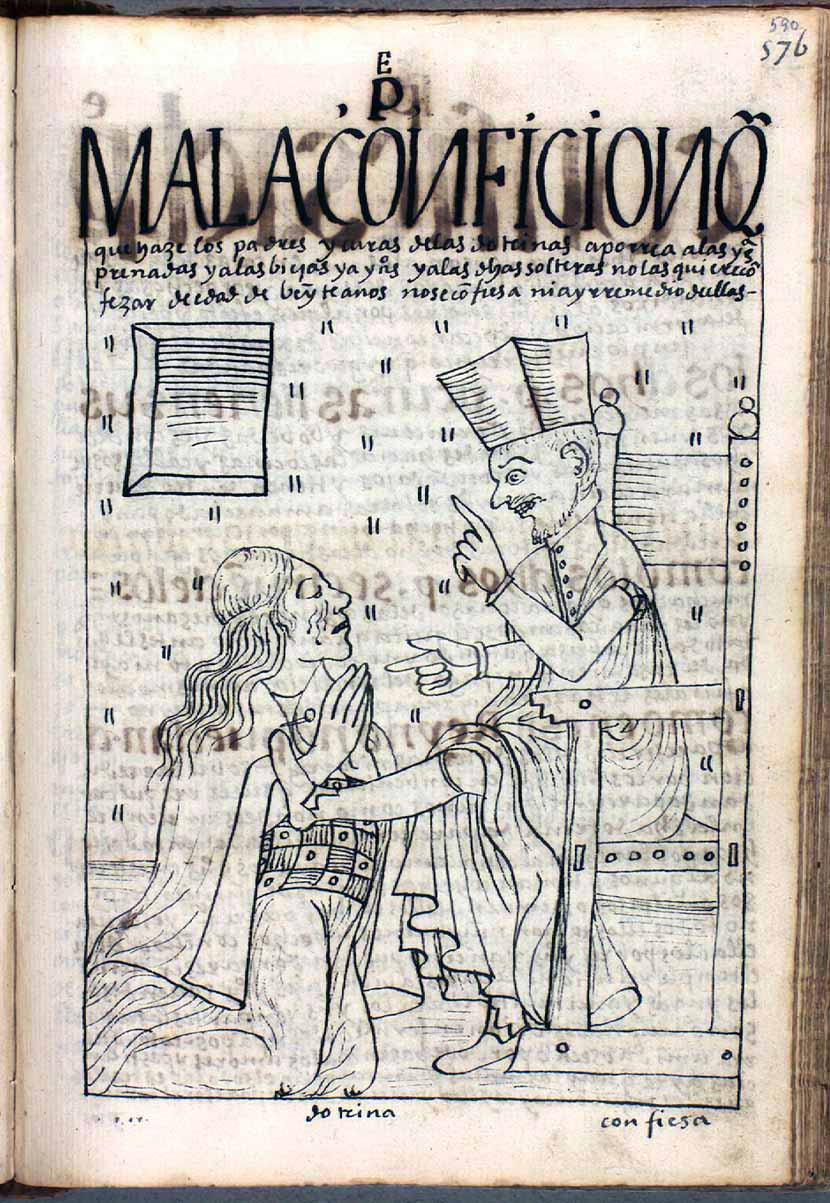
“The Bad Confession”
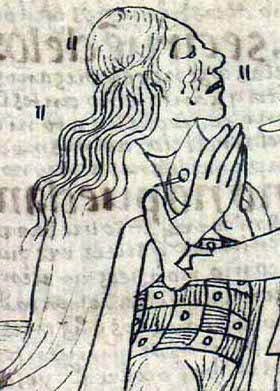
An Andean woman kneels with her hands clasped in prayer. Her indigenous identity is conveyed by her style of dress; she wears a lliclla (shawl) fastened with a tupu (garment pin) that opens to reveal tocapu-like designs on her dress underneath. She looks up at the priest, with tears in her eyes, as he rams his left foot in her abdomen. The violent image becomes all the more poignant on closer inspection of her swollen belly, indicating the woman’s pregnancy, which is described in the accompanying text.
This image, entitled “The Bad Confession,” is in Felipe Guaman Poma de Ayala’s illustrated manuscript, known the The First New Chronicle and Good Government (El primer nueva coronica i buen gobierno), dated to around 1615. The first half of Guaman Poma’s illustrated manuscript provides a comprehensive description of Inka imperial history as well as an encyclopedic account of life under Inka rule, covering topics as diverse as the ritual calendar, agricultural practice, religious beliefs, different ways of burying the dead, and the various professions of the empire’s inhabitants. The second half of the manuscript details the abuses committed by the Spaniards during the early period of colonial rule in the Viceroyalty of Peru. Guaman Poma’s vivid imagery provides some of the only surviving visual sources that reveal the often violent treatment that indigenous people endured under their Spanish rulers.
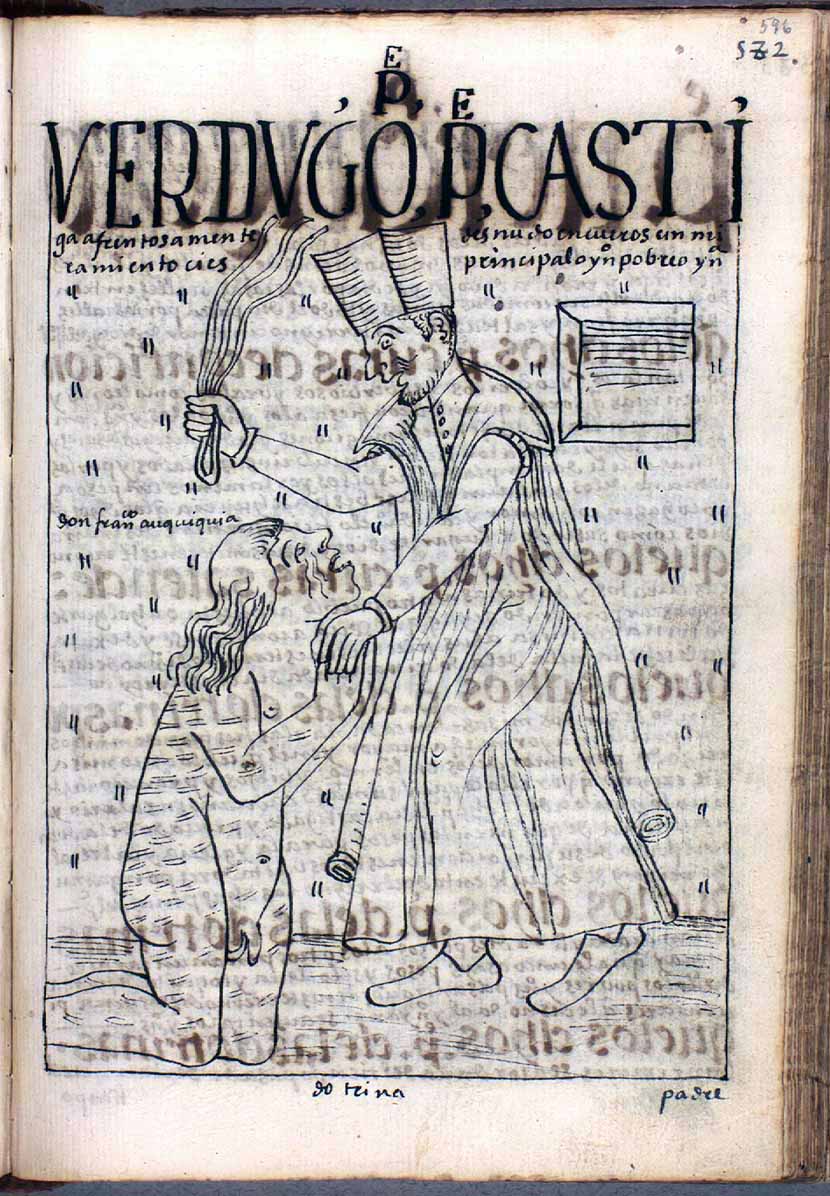
“The Bad Confession” image participates in a larger visual and textual argument about the ability for native Andeans to rule themselves without Spanish intervention. Indeed, Guaman Poma presents the colonial period as a “Pachacuti,” a Quechua term that he uses to refer to a world turned upside down. As part of his plea to King Philip III, Guaman Poma strategically argues that Christianity existed in the Andes long before the Spanish invasion and that it is the Spaniards who are the exemplars of “bad Christians.” The visual mechanics of “The Bad Confession” support this thesis.
Hanan and hurin
The drawings in The First New Chronicle and Good Government often correspond to the Andean spatial hierarchies of hanan and hurin. Hanan is associated with dominance, masculinity, and superiority while hurin holds the connotations of weakness and femininity. [1] Within an Inka context, hanan and hurin were not conceived as occupying dichotomies of superior and inferior but were instead considered complementary relationships bound through systems of reciprocity. In this new colonial context, however, Guaman Poma has strategically deployed these concepts to highlight the depravity of the Spaniards.

In “The Bad Confession,” the woman occupies the hanan part of the composition (the internal right) while the priest is situated in the hurin segment (the internal left), thus displaying the moral superiority of the Andean woman, who is inflicted with physical violence in her most vulnerable region. In this “world upside down,” the priest, the supposed embodiment of morality, succumbs to a morally reprehensible act.
Illustrated manuscripts in early colonial Peru
There only exist three known illustrated manuscripts produced in early colonial Peru: two versions of Mercedarian friar Martín de Murúa’s account, separately titled History of the Origin and Royal Genealogy of the Inka Kings of Peru (Historia del origen y genealogía real de los reyes ingas del Perú, c. 1590–1615) and History of Peru (Historia del Pirú, 1616). The latter, which contains thirty-eight stunning watercolor illustrations depicting the lives of the Inka nobility, has recently undergone extensive conservation at the Getty Research Institute in Los Angeles. The third and most well-known of the three is Guaman Poma’s New Chronicle (1615). The dearth of Peruvian manuscripts stands in stark contrast to the 1,000+ illustrated manuscripts that survive from colonial Mexico. The likely reason for this is because there did not exist a manuscript tradition in the pre-Columbian Andes as there did in pre-Hispanic Mesoamerica. The notion of drawing images and writing on paper had no precedent in the Andes until the arrival of the Europeans.
Nevertheless, these three manuscripts offer a compendium of Andean life both before and after the conquest of the Inkas. The wealth of information they provide has been of critical importance to archaeologists, historians, art historians, and anthropologists as a means to understand Inka history as well as the lived experience of indigenous peoples in the early years of Spanish colonial rule.
Notes:
[1] See Mercedes López-Baralt, “From Looking to Seeing: The Image as Text and the Author as Artist,” in Guaman Poma de Ayala: The Colonial Art of an Andean Author, ed. Rolena Adorno et al. (New York: Americas Society, 1992), pp. 14–31.
Additional Resources
A facsimile of the Historia general del Piru (also called The Getty Murúa)
Essays on The Getty Murúa from the Getty Museum
Scientific Investigation of Martín de Murúa’s Illustrated Manuscripts (Getty)
Rolena Adorno, Guaman Poma: Writing and Resistance in Colonial Peru (Austin: University of Texas Press, 2000)
Felipe Guaman Poma de Ayala, The First New Chronicle and Good Government, trans. Roland Hamilton (Austin: University of Texas Press, 2009)
Guaman Poma de Ayala: The Colonial Art of an Andean Author (NYC: Americas Society, 1992)
Lisa Trever, “Idols, Mountains, and Metaphysics in Guaman Poma’s Pictures of Huacas,” RES: Anthropology and Aesthetics, no. 59/60 (2011): 39–59.
The Church of San Pedro Apóstol de Andahuaylillas
Video \(\PageIndex{1}\): The Church of San Pedro Apóstol de Andahuaylillas, 1570-1606, stone, adobe, kur-kur, Andahuaylillas (Peru)
Additional resources
Luis de Riaño and indigenous collaborators, The Paths to Heaven and Hell, Church of San Pedro de Andahuaylillas
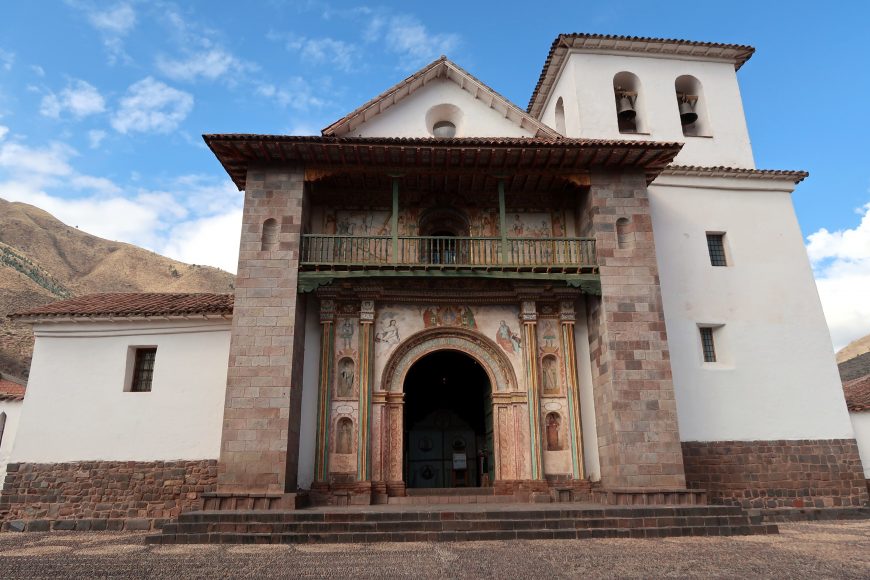
The Sistine Chapel of the Americas
The Church of San Pedro de Andahuaylillas located outside of Cuzco contains an expressive decorative program that has earned it the title of the “Sistine Chapel of the Americas.” Filled with canvas paintings, statues, and an extensive mural program, the level of artistry and extravagance afforded to this church certainly rivals its counterparts in Renaissance Italy.
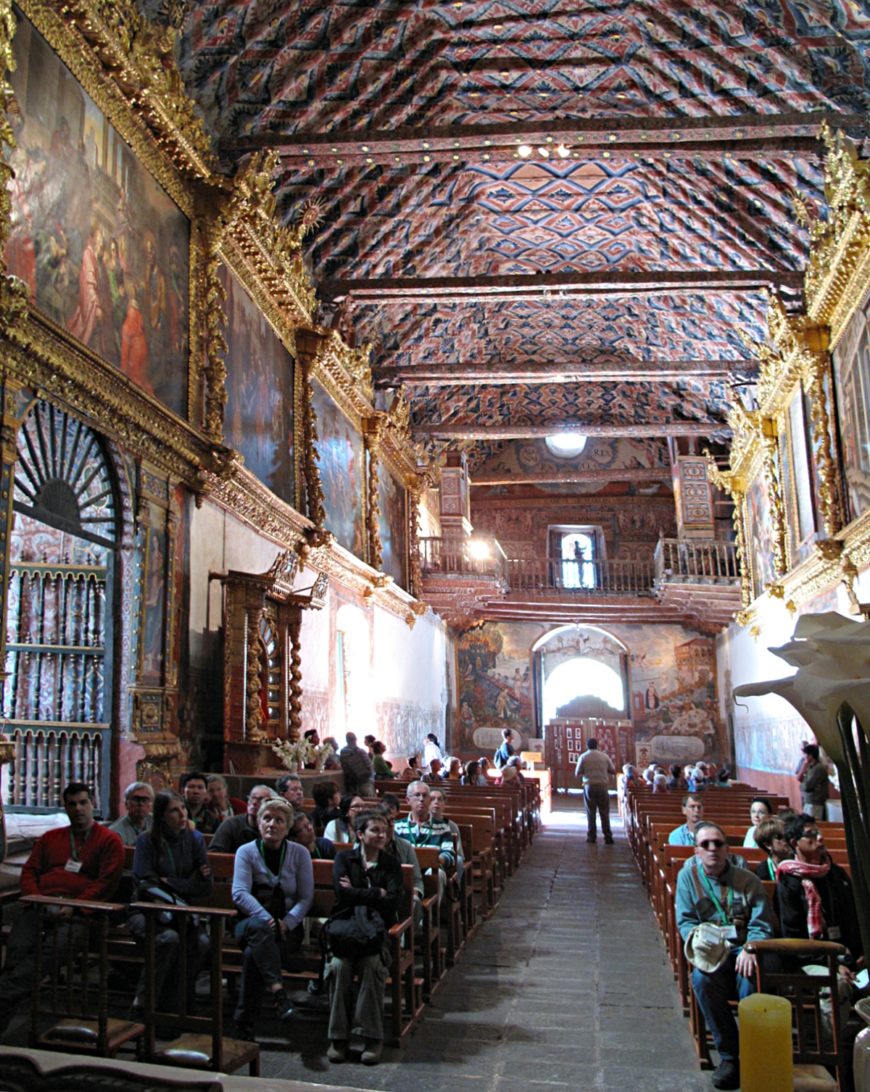
One of the church’s most well-known images is the mural painted on the interior entrance wall depicting an allegory of good and bad faith.
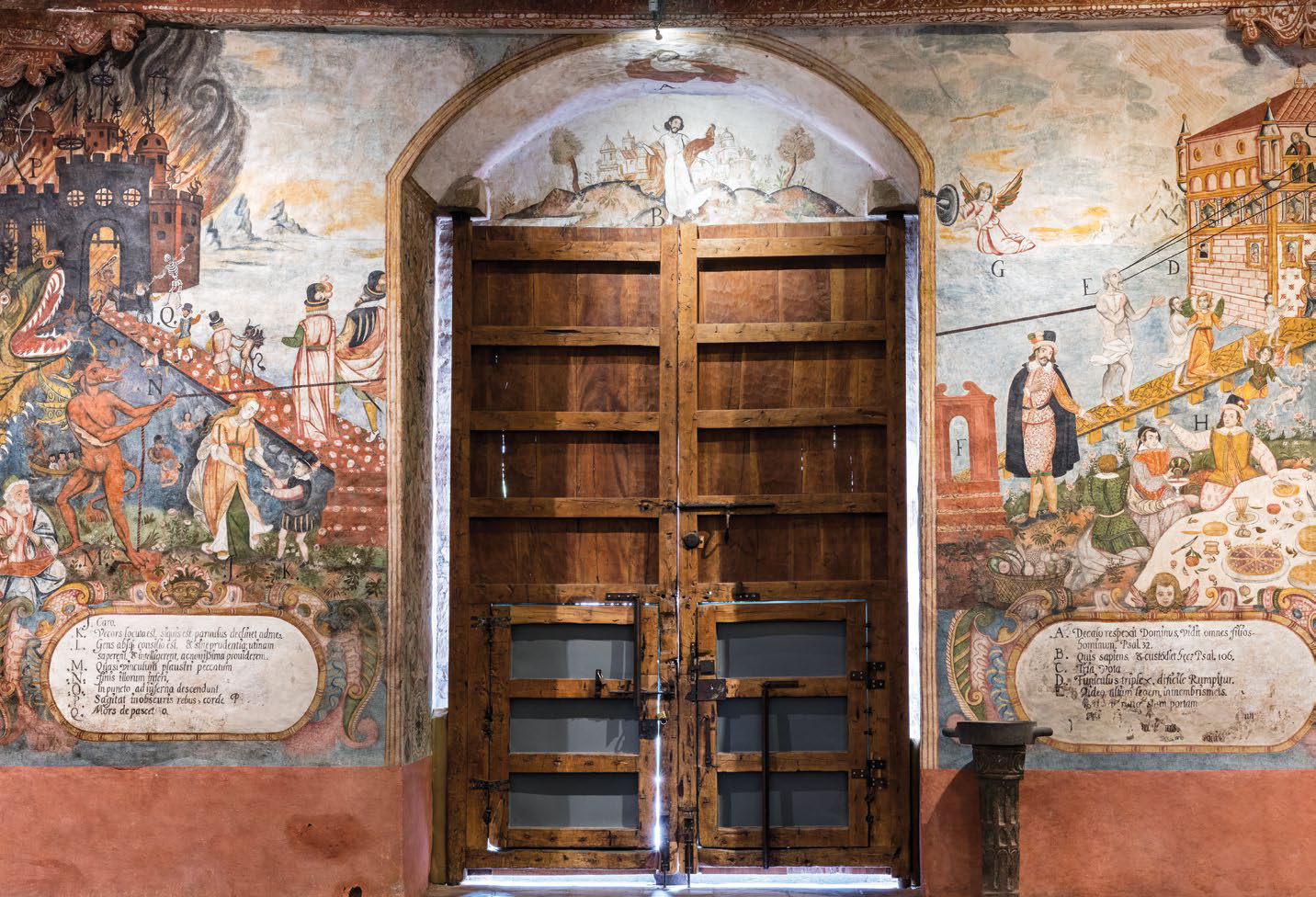
The subject matter
Painted by the criollo artist Luis de Riaño and indigenous assistants, The Paths to Heaven and Hell transmits an important message to parishioners as they exit the church of the moral decisions they will confront on their spiritual journey. The two paths refer directly to a biblical passage which states,
Enter through the narrow gate. For wide is the gate and broad is the road that leads to destruction, and many enter through it / But small is the gate and narrow the road that leads to life, and only a few find it.
Matthew 7:13–14
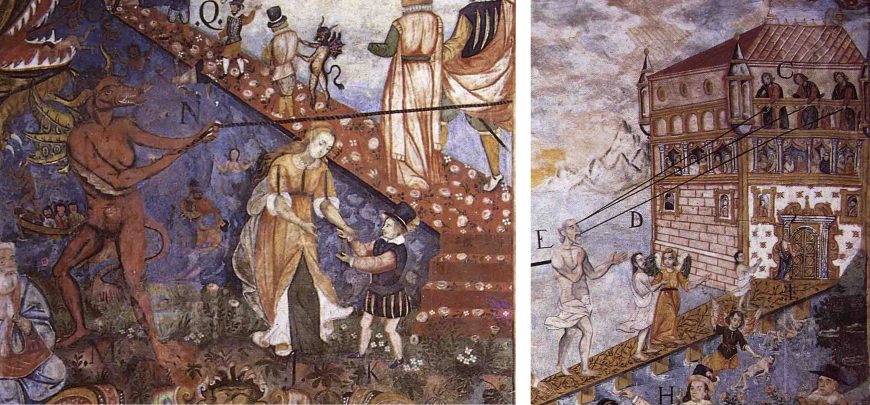
A nude figure wearing nothing but a white sheet around his waist walks cautiously down the narrow and thorny path to the Heavenly Jerusalem, with three lines emanating from his head that lead to a representation of the Holy Trinity as three identical male figures. A thick rope also connects his back to the composition on the left of the doorway, where the Devil attempts to pull him over to the left side.
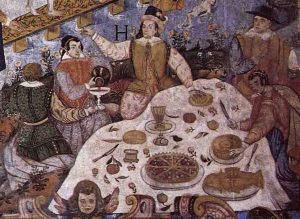
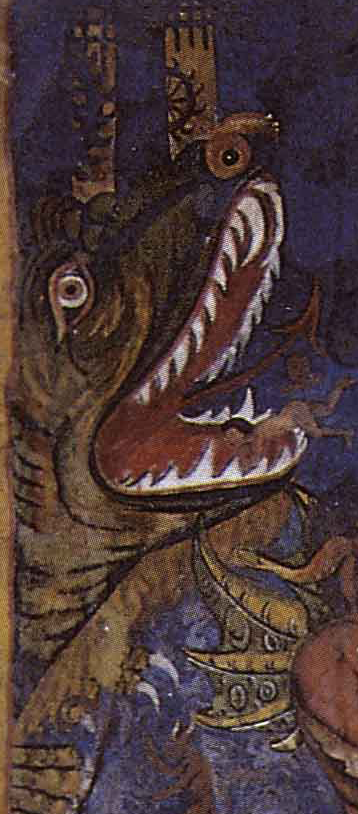
At the foreground of the scene is a banquet attended by four individuals feasting on wine, fish, bread, pie, and fruits. A mouth of Hell rears its head to the left of the path to Hell, its mouth agape with a naked sinner falling into his maw.
At the forefront of the scene is an allegorical female figure guiding a young man standing directly below the rope held by the devil. The path culminates at a castle engulfed in flames guarded by deer poised on the roof with bows and arrows.
The paths to Heaven and Hell were familiar tropes in medieval Christianity, with frequent representations in paintings, manuscript illuminations, and stage sets. Despite its decline in popularity in Europe by the Renaissance, this type of allegorical imagery carried great import in the colonial Andes.
The didactic iconography, painstakingly labeled with relevant biblical passages, was ideal for preaching Catholic doctrine to Andean parishioners. In fact, it is highly likely that Juan Pérez Bocanegra, the parish priest who commissioned the murals and accompanying decorative program, would have conducted his sermons using the murals as a focal point.
A New Jerusalem in the Andes
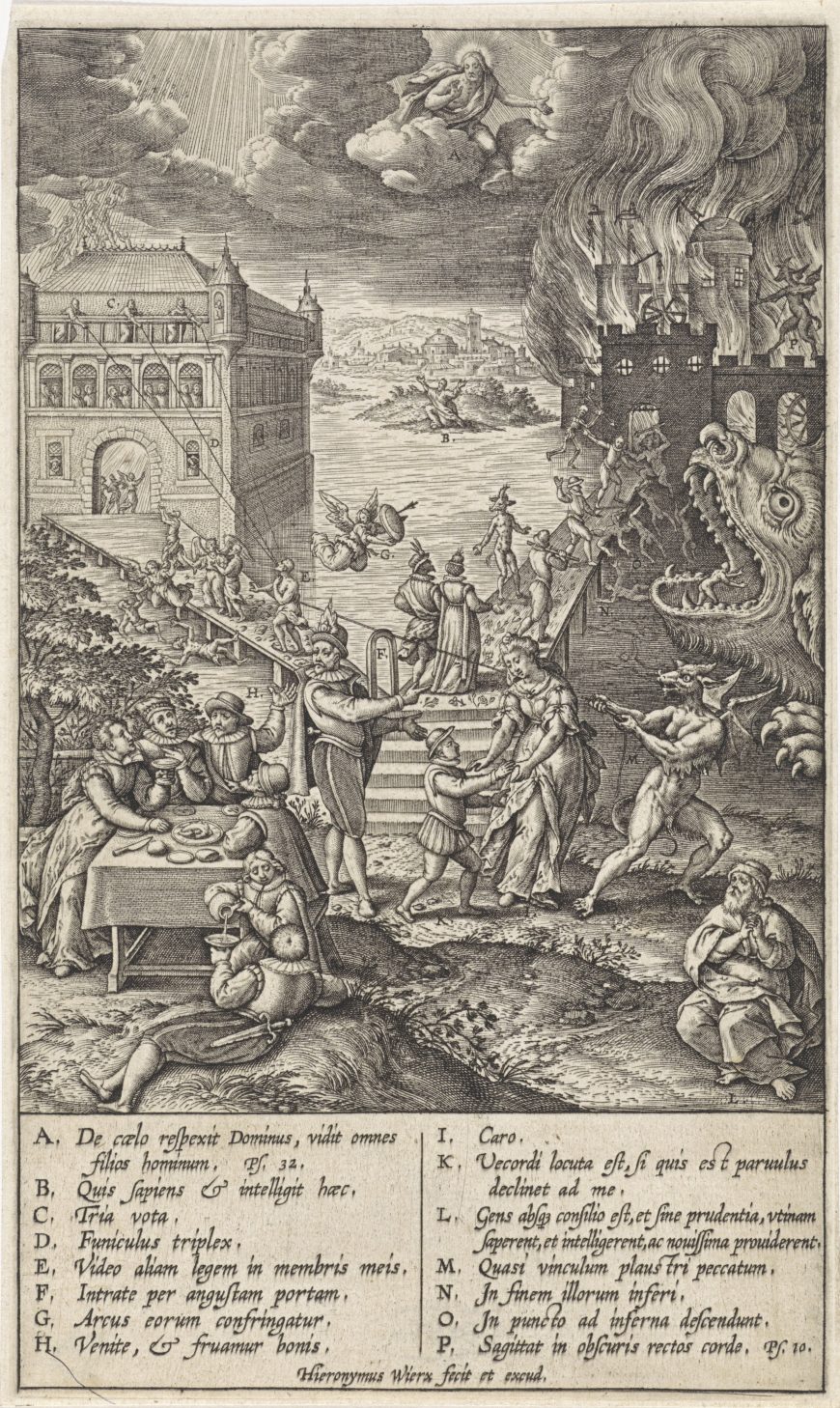
The mural is based on a print by Hieronymus Wierix entitled The Narrow and Wide Path, which Riaño copies relatively faithfully. One significant modification, however, can be found in the depiction of the path to Heaven. In the mural version, Riaño has added an additional figure at the doorway to the Heavenly Jerusalem holding a key. This individual likely represents Saint Peter the Apostle, the patron saint of Andahuaylillas. As the universal head of the church, Saint Peter held the keys to the kingdom of Heaven. Parishioners were thus given the implicit message that the church of their very community constituted a New Jerusalem on Andean soil. Indeed, the act of entering and exiting the church left congregations with a palpable reminder of the spiritual pilgrimage necessary for attaining salvation—and one that could be understood within the immediate parameters of their existence rather than as a place only to be visualized and imagined.
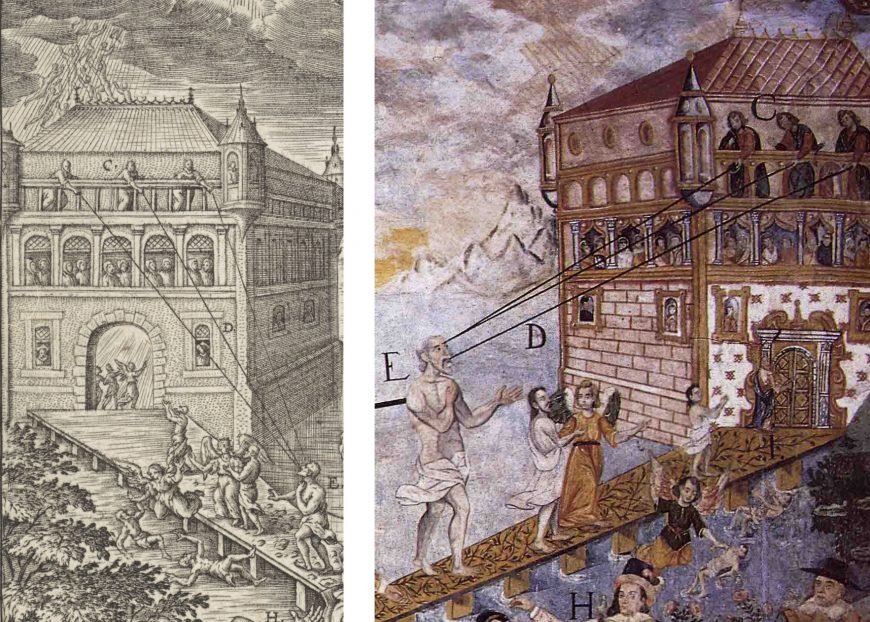
The path to Hell also contains an intriguing detail that is only visible upon close inspection of the mural. Three barely visible figures are seated in a devil-driven canoe beneath the mouth of Hell. The central figure wears an Inka-style tunic with a checkerboard pattern around the collar. Such regalia would have been worn by curacas, or local indigenous leaders. Another nearby indigenous figure ingests liquid from an Inka-style aryballos vessel called an urpu, probably filled with chicha. The figures differ dramatically from the rest of the mural in both content and style. They are painted using rougher strokes, indicating the hand of an assistant to Riaño. Moreover, the cultural specificity of the figures, linking them directly to the Inka past through objects and regalia, suggest that the assistant was of indigenous background.
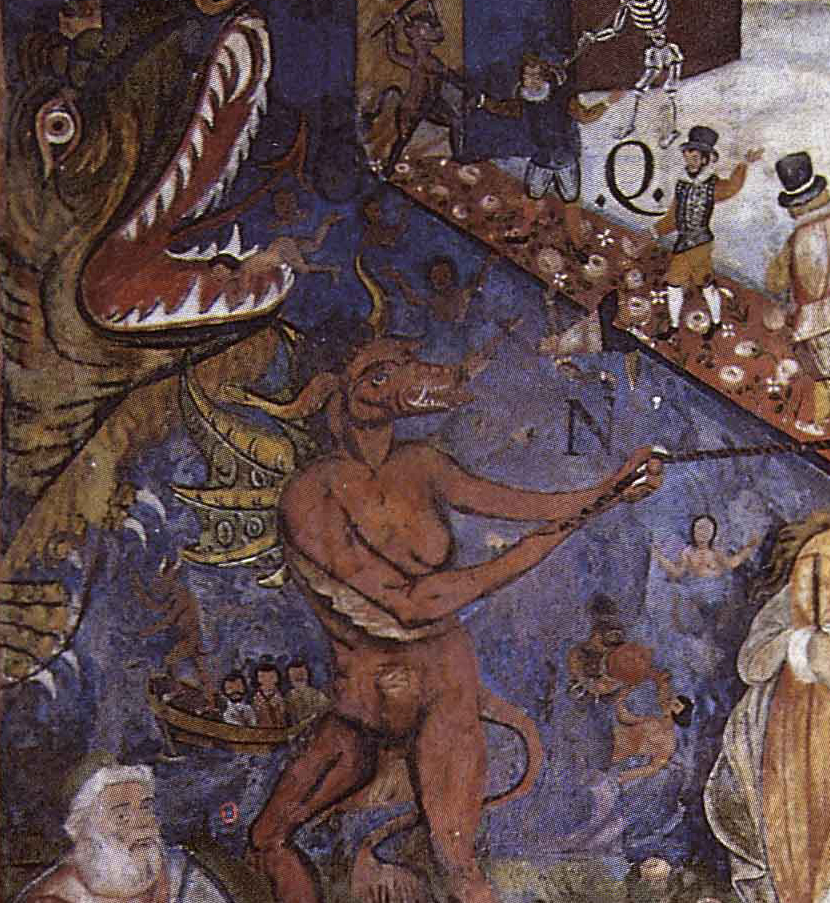
Despite the obvious visual conflation of Andean ritual practices in association with the Christian concept of Hell, these figures were granted visibility in a religious arena that sought to eradicate Andean ancestral cultures. The Paths to Heaven and Hell infuses Christian iconography with local referents to facilitate a more personalized and culturally meaningful point of access for the seventeenth-century parishioners of Andahuaylillas.
Additional resources:
Ananda Cohen-Aponte, Heaven, Hell, and Everything in Between: Murals of the Colonial Andes (University of Texas Press, 2016)
More about the paintings in San Pedro Apóstol de Andahuaylillas
San Pedro Apóstol de Andahuaylillas at the World Monuments Fund
Bernardo Bitti, Coronation of the Virgin
European-style paintings in colonial Lima
In the Peruvian city of Lima, a visitor will encounter a bustling modern city, the natural beauty of the coast, and numerous references to the city’s layered past, including the ruins of structures made by indigenous cultures, and churches built during the colonial period. Filling those churches are paintings and sculptures that call to mind a tradition not born in South America, but in western Europe — that of the Renaissance, with its illusionistic devices, technical virtuosity, and figural narratives. Some of these paintings (along with books and prints) were imported from Spain, Flanders, and Italy. Some were painted by émigré artists resident in Lima. But why were European artists making paintings in colonial Lima?
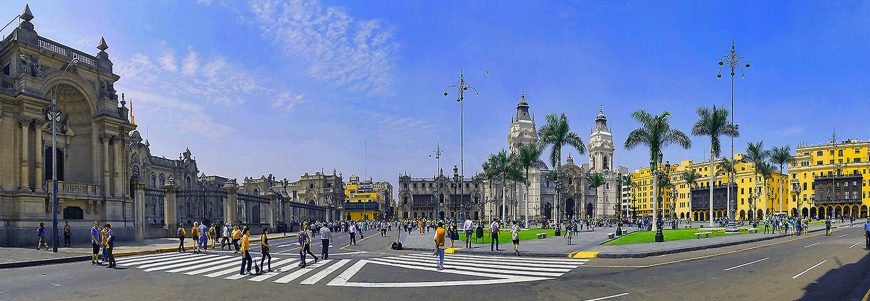
Bernardo Bitti was one of many artists who made the journey across the Atlantic in this period as part of the Spanish Crown’s effort to colonize and evangelize the indigenous populations of what is today Mexico, Central America, and parts of South America. Bitti was a sixteenth-century artist from Camerino, Italy, in the Marches region, who produced paintings for churches throughout the Peruvian viceroyalty. He arrived in Lima, the viceroyalty’s capital, in 1575. Looking at Bitti’s work in Peru offers an opportunity to better understand the practice of evangelization. It also helps us to recognize that what we consider as Italian Renaissance art was not just a European phenomenon, but a global event.
An international Renaissance
The year 1492 is firmly planted in the western consciousness, as the fateful year that Christopher Columbus accidentally landed in Santo Domingo in what is now called the Dominican Republic. It also happens that this thing we call the Renaissance, an influential period of artistic and cultural achievement, took place contemporaneously, in the fifteenth and sixteenth centuries. What then happens when we begin to consider this period of art making in correspondence with the beginnings of international encounters? The resulting collisions of belief, history, and art allow us to consider the period as one that was not localized in places like Italy and Flanders, but was in fact international in its scope.
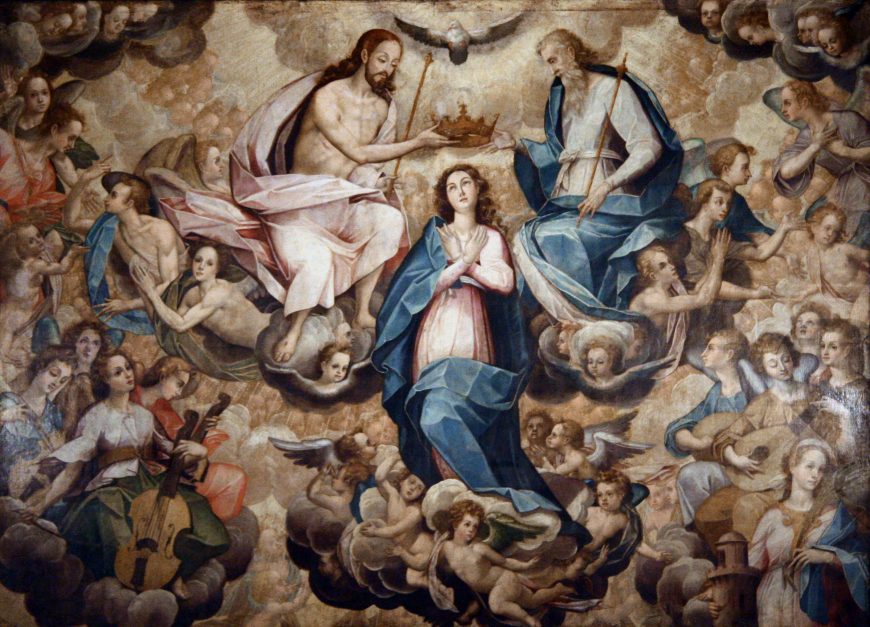
The Coronation of the Virgin
Bitti’s first project in Lima was a large altarpiece depicting the Coronation of the Virgin, for the Jesuit Church of San Pedro. The subject matter is fairly straightforward, an image of the Virgin Mary rising into the heavens, to be crowned by Christ to her right, God the Father to her left, and a dove representing the Holy Spirit overhead, while angels playing musical instruments gather in celebration.
![Diego Valadés, Rhetorica christiana : ad concionandi et orandi vsvm accommodata, vtrivsq[ue] facvltatis exemplis svo loco insertis, 1579](https://smarthistory.org/wp-content/uploads/2019/08/friar-preaching-870x1284.jpg)
The painting would have been an important opportunity for the Jesuits to offer an appropriate representation of Christian doctrine to a potentially diverse audience of Lima’s citizens, which would have included viewers of many cultural backgrounds. Due to the diversity of the audience and the language and faith barriers between them, missionaries in Latin America relied on European imagery as tools for communication. In an image from Diego de Valades’s Rhetorica Christiana, printed in 1579, a Franciscan friar stands at a pulpit preaching, while simultaneously pointing to images displayed around the space to illustrate his points.
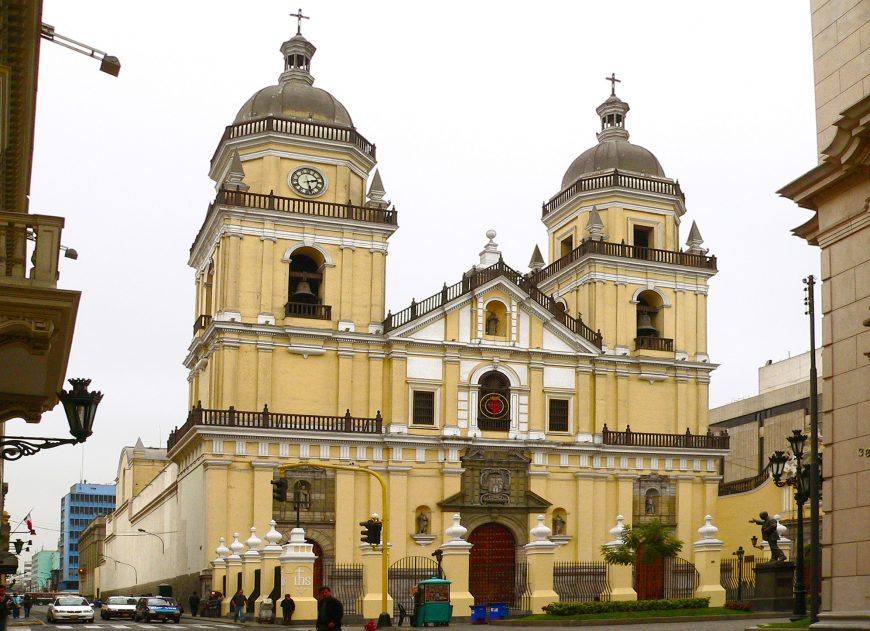
The context of the Counter Reformation
Bernardo Bitti was a painter, but also a Jesuit, who traveled to Lima as part of the order’s evangelization efforts. The Jesuits were at the forefront of global missionary efforts during the sixteenth and seventeenth centuries. Issues and ideas from Europe intersected with the agenda of missionaries in Latin America. Throughout colonization, the Catholic Church remained embroiled in the Counter Reformation, a campaign to reinvigorate the Church and reform, where necessary, after suffering the criticisms of the Protestant Reformers in Northern Europe. Bitti’s Coronation of the Virgin did contribute important narrative information about Christian belief, but it also served as visual propaganda of the Catholic Church’s reform.
There are several elements to this painting that highlight Bitti’s attention to the Counter-Reformation agenda. Most important is the glorification of the Virgin Mary. The painting serves as a reminder of her divinity and an encouragement to worship her as queen of heaven. In this period, the Catholic Church re-asserted its dedication to the Cult of the Virgin, partly in response to criticisms from the Protestant Reformers. Between 1545 and 1563, the Council of Trent (a meeting of Church officials, convened to address the crisis of the Reformation, and among many other proclamations), affirmed the value of worshipping the saints, and the Virgin Mary. The Council also instructed that sacred art was a valid and appropriate undertaking.
Bitti’s painting would have served as a Counter-Reformation example of how art should serve its didactic and devotional functions. It is clear and legible. The composition is symmetrical, with the most important figures easy to locate, and their significance over the other figures made clear by the attention paid to them by surrounding angels. Additionally, the painting represents the Virgin’s crowning, not by just Christ, or God the Father, but by the Holy Trinity, the inclusion of the white dove completing this all important triad. Bitti’s inclusion of the Trinity as three separate entities was a critical iconographic choice. European commentators were careful to instruct artists of this period to be clear in their depictions of the Trinity, never as three identical figures, or one body with multiple faces, but as an older man, a younger man, and a dove. For Bitti, painting in Lima for a diverse audience of Europeans and newly converted indigenous viewers, the accurate depiction of the Trinity would have been of particular importance.
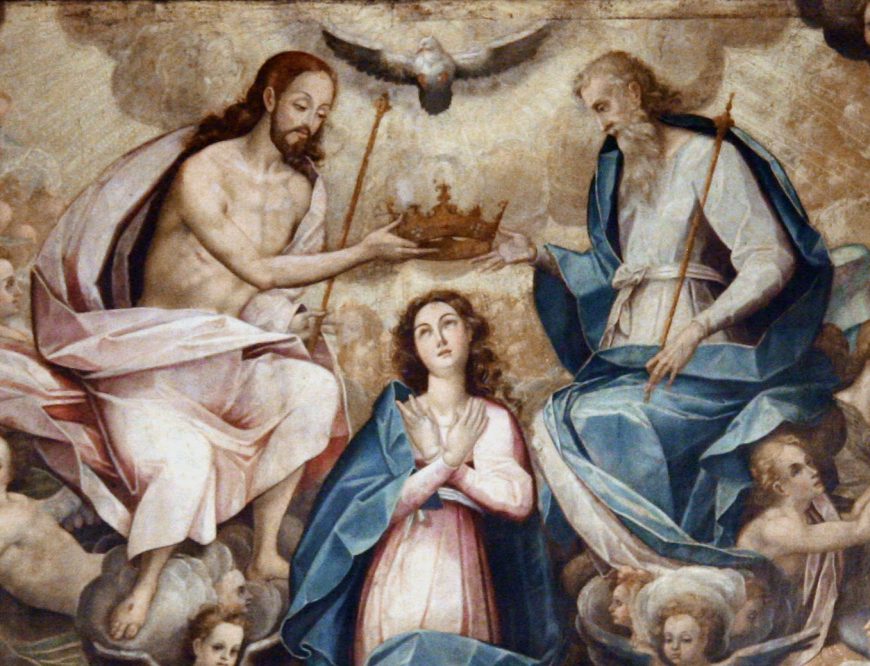
Representations of the Trinity were potentially problematic in the Andes, where the indigenous populations had for centuries followed polytheistic religions. Christian missionaries sought to stamp out any residue of such pagan beliefs and traditions. A painting presented by Christian clergy of three beings, representative of God, could be confusing for the local indigenous converts. These same missionaries vehemently prohibited the worship of multiple gods.
The matter was further complicated when Europeans learned that some Andean religions pictured their gods in threes. For example, three statues of the god representing the Sun stood in Cuzco; Apointi, Churiinti, Intiquaqui were the father Sun, the son Sun, and the brother Sun. Upon learning of this predisposition for a conception of a trinity in the local indigenous religions, the clergy attempted to use this potential complication to their advantage. They preached the idea that the pre-Christian existence of a trinity was merely a precursor for the true Trinity that the indigenous populations were now learning about. For them, the truth had been laying in wait, but obscured, for centuries. Images of the Trinity would become common in Spanish colonial art as tools to engage the locals with a familiar image but ones that needed to be appropriately presented according to Catholic doctrine.
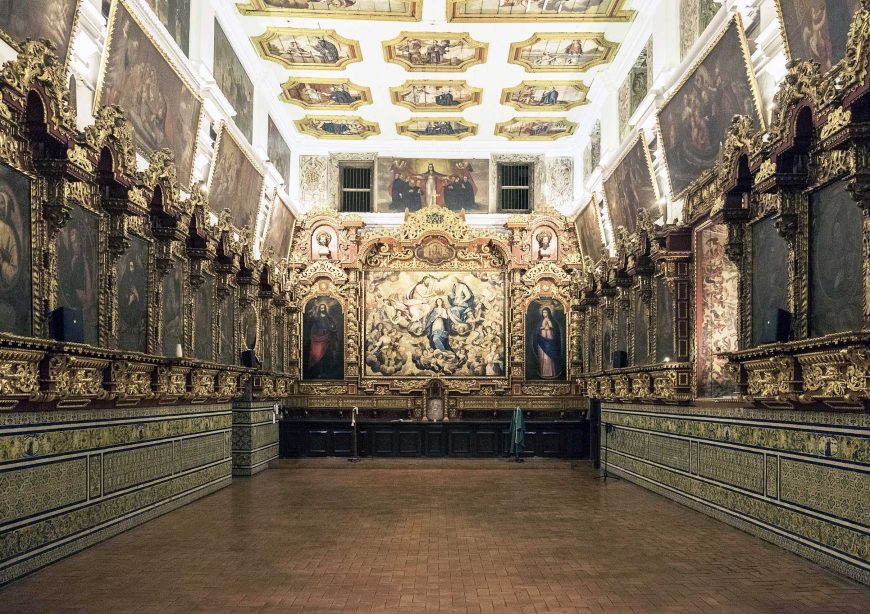
Bitti’s paintings were also tools implemented to aid in the imposition of western European culture onto the indigenous Andean people. Bitti’s figural, narrative, illusionistic style of representation was steeped in the traditions of Italian Renaissance aesthetics. It was informed by the concept of Leon Battista Alberti’s “painting as window,” which contrasted violently with the centuries old visual traditions of the Andes, where art tended to be more abstract, geometric, and not representational. So, while it was certainly important for Bitti to use his altarpiece to communicate Christian narrative appropriately, this painting was also a weapon used by the Europeans in their campaign to replace ancient Andean beliefs and culture with their own understanding of the world.
Diego Quispe Tito, Last Judgment, 1675
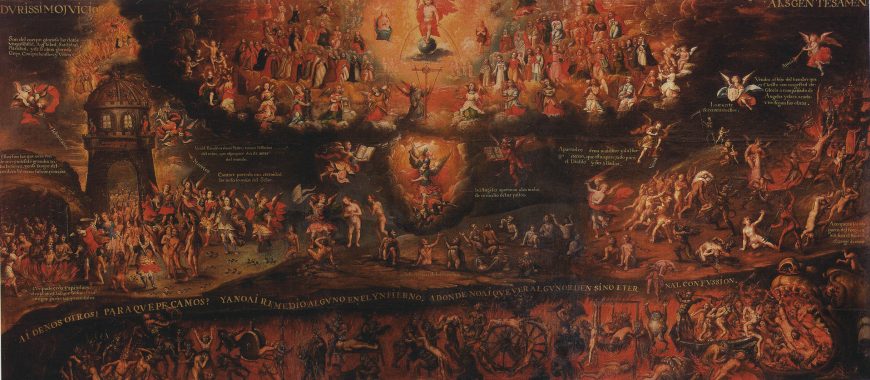
Indigenous Andean painters such as Diego Quispe Tito reinvigorated Cuzco’s artistic scene after the death of the Italian Jesuit painter Bernardo Bitti and other Spanish and Italian painters who traveled to the Viceroyalty of Peru in the late sixteenth century to establish their artistic careers. Quispe Tito imbued his compositions with powerful religious imagery that combined Italian, Flemish, and Indigenous pictorial traditions.
The end of time
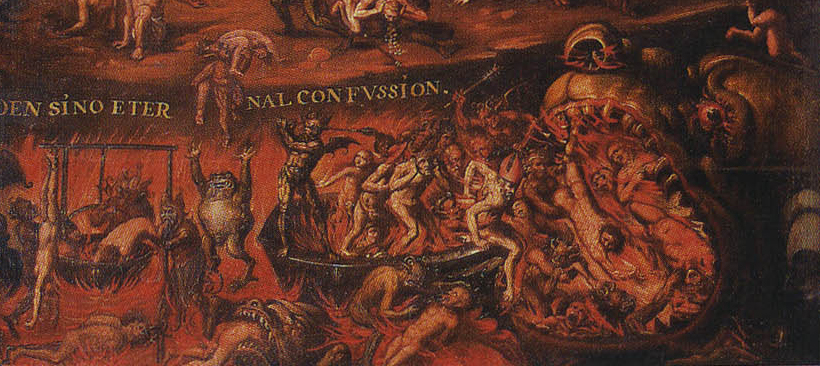
His painting of the Last Judgment from 1675 located in the Convento de San Francisco in Cuzco provides an enduring reminder of the fate of humanity on Judgment Day. Sinners in hell depicted along the lower register of the composition receive an array of bodily tortures — we see individuals stretched across medieval breaking wheels, burning in bubbling cauldrons, and engulfed within the jaws of a Hell mouth. The souls in heaven (at the top), by contrast, surround the ascended Christ in an orderly formation.

Word and image
Quispe Tito’s canvas retains a strict tripartite scheme of Heaven, Purgatory, and Hell through the use of textual glosses to delimit the painting’s three compositional layers. The texts describe their accompanying scenes in vivid detail, thereby creating a strong interaction between linguistic and visual representation. The glosses add an additional layer of meaning to the image that would have been accessible only to the privileged few that were literate in Spanish. Nevertheless, the visual cues alone provide ample information about Christian eschatology (End of Days) for the purposes of instruction and evangelization.
![Diego Quispe Tito, detail, "there is no longer any remedy in hell, where there is no order to be had but [instead] eternal confusion" Last Judgment, oil on canvas, 1675](https://smarthistory.org/wp-content/uploads/2019/10/Quispe-Tito-LJ-d3-870x113.jpg)
European models through prints
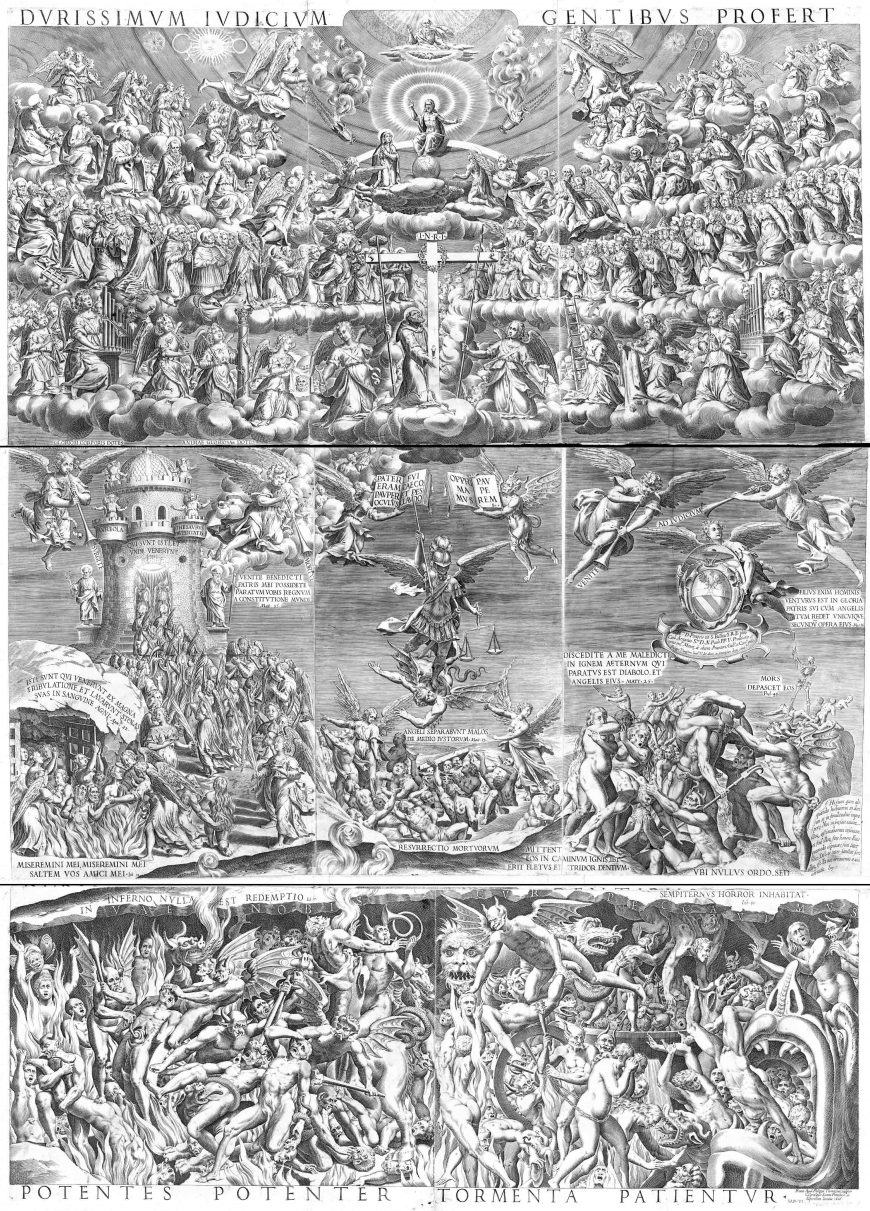
The Last Judgment is modeled from a 1606 engraving by Philippe Thomassin, a French-born engraver who spent the majority of his life in Rome. It remains unclear whether Quispe Tito had access to Thomassin’s original engraving or a seventeenth-century copy by the Flemish engraver Matthaeus Merian. Regardless of the precise source used by Quispe Tito, his Last Judgment reveals the importance of European models in colonial Andean painting, while at the same time demonstrating the creativity of seventeenth-century artists in determining the painting’s color palette and incorporating unique compositional details.
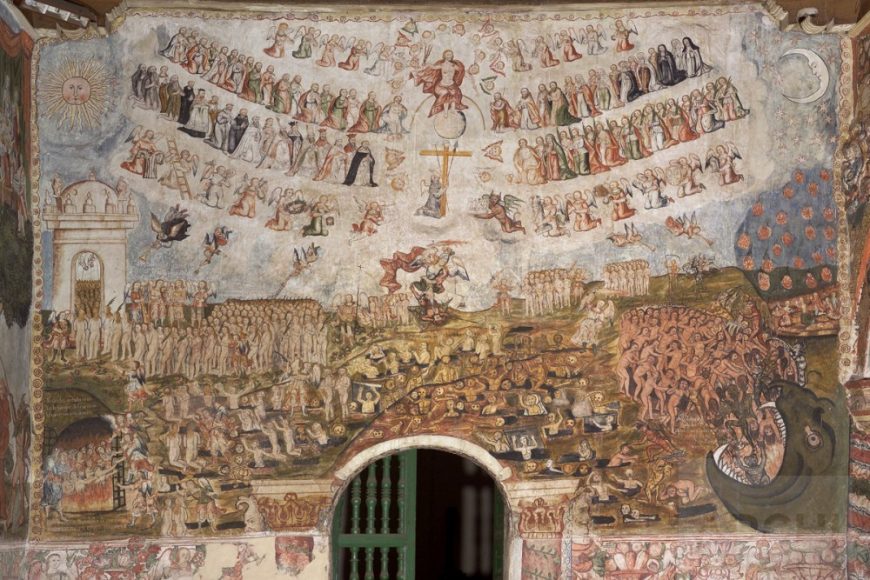
Christian themes related to the End of Days continued to preoccupy Andean patrons and artists throughout nearly the entirety of the colonial period. For example, the mestizo artist Tadeo Escalante produced a mural painting of the Last Judgment in 1802 at the church of Huaro located just outside of Cuzco.
Escalante’s and Quispe Tito’s compositions share the very same print source, despite being produced over a century apart. Escalante’s bright color palette and preference for flattened, simplified forms, however, signals a major turning point in colonial Andean painting that occurred shortly after Diego Quispe Tito completed his painting.
Additional Resources:
Ananda Cohen-Aponte, Heaven, Hell, and Everything in Between: Murals of the Colonial Andes (University of Texas Press, 2016)
Rodríguez Romero, Agustina & Siracusano, Gabriela (2010) “El pintor, el cura, el grabador, el cardenal, el rey, y la muerte. Los rumbos de una imagen del Juicio Final en el siglo XVII.” Eadem Utraque Europa 6 (nos. 10-11): 9-29.
Read more about the arts of the Spanish Americas
Learn more about engraved sources for paintings in colonial Andean art on Project on the Engraved Sources of Spanish Colonial Art
Parish of San Sebastián, Procession of Corpus Christi series

Worlds collide
Inka, Spanish, and Christian traditions come together in this 17th century painting of a religious procession in Cusco (in present day Peru). At the time, much of South America was a Spanish colony governed as a viceroyalty (a viceroy was someone who ruled as a representative of a monarch—in this case, the King of Spain). Cusco was part of the Spanish viceroyalty of Peru which lasted from the 16th to the 19th century. To make matters more complicated, Cusco was also the former capital of the Inka Empire.
Parish of San Sebastián is part of a series of eighteen canvases (sixteen of which survive) that depict the religious festival of Corpus Christi in Cusco. These large paintings (they range from 6 feet square to 7 x 12 feet) were painted by at least two artists and were made for the Santa Ana parish church in Cusco, located in the Andes mountains.
The procession

Corpus Christi, meaning “body of Christ” in Latin, is a celebration of the Catholic doctrine of transubstantiation—the transformation of the wine and bread of the Eucharist into the actual blood and body of Christ. The religious processions that accompany this festival have been compared to ancient Roman triumphs, which generally celebrated military victories. The triumphal Corpus Christi processions celebrate Christ as victor and metaphorically allude to the triumph of Christianity over pagan religions (the Corpus Christi festival is still celebrated in Cusco today).
In the painting, we see the Eucharistic host (the sacramental bread) along with a statue of a saint, paraded along a processional path. A bishop on the far right (see image left) carries a monstrance containing the Eucharistic host (a monstrance is a vessel used to display the host). In addition to the bishop, other members of the San Sebastián parish community—including clergy members, government officials, and leaders of the indigenous Inka population—were included in the procession, while elite citizens of Cusco witness the procession from their windows. This annual triumphal procession signaled the dominance of Spanish colonizers over the indigenous population. Conveniently, Corpus Christi coincided with the Inka solstice celebration of Inti Raymi, or “Festival of the Sun,” leading to conflation of these festivities and aiding Christian conversion efforts.


In addition to the figures, we see a processional cart in the center, on top of which appears a statue of Saint Sebastian. These carts appear throughout the series and were based on structures used for religious processions in Spain celebrating the festival of Our Lady of the Immaculate Conception. The carts resemble ships’ hulls and are modified from illustrations the artists in Cusco saw in a Spanish festival book (left). In this case, Saint Sebastian, who appears tied to a tree and pierced with arrows to represent his martyrdom, has replaced the Virgin Mary.
Leading the procession is an Inka kuraka who acts as a standard bearer (see bottom image). Also referred to as caciques, these local rulers of indigenous descent were granted privileges (cacicazgos) by the Spaniards and allowed to maintain a position of leadership after the Spanish conquest in the Andes. By the early-seventeenth century, twenty-four caciques held this hereditary office—making this an exclusive position. In exchange for their acculturation and adoption into the Spanish hierarchy, caciques were required to implement Spanish law among the indigenous population.

To maintain their status, it was necessary for caciques to prove their indigenous heritage. Caciques were often the subject of portraits that sought to authenticate their sitters’ political position. These images derive from traditional Spanish portraiture (the visual representation of rulers was not an established tradition in Inka culture). Cacique portraits, such as the Portrait of Don Marcos Chiguan Topa, included panels of text that referenced the subjects’ indigenous heritage. Additionally, elements of traditional Inka costumes were often employed to emphasize the caciques’ Indian-ness and therefore validate their positions as kurakakuna.
Caciques were sometimes depicted wearing tunics that evoke indigenous textiles through their intricate designs, as well as crowns that included a mascapaycha, a red-colored fringe that covered the forehead that was traditionally a symbol of Inka royalty. It was traditionally worn on the crown of the Sapa Inka (or “unique Inka,” the preeminent ruler during pre-Hispanic times). Breeches and long sleeves with lace were often added as traditional Spanish elements.

Costume: Inka + Spain
The cacique depicted leading the procession in the Parish of San Sebastián canvas wears an Inka tunic (uncu) with modifications to incorporate Spanish costume elements, like lace sleeves. The highly detailed garment, which includes a sun face on the front, is meant to indicate Andean nobility. The cacique’s crown also features a mascapaycha to distinguish his status. The crowns of the caciques depicted in the series were accompanied by other details such as feathers, flowers, birds, and rainbows. This particular mascapaycha in Parish of San Sebastian features a rainbow topped with a silver globe with feathers and banners, as well as two curiquenque birds, all typical of pre-Hispanic Inka noble insignia.
The mascapaycha as an emblem of Inka royalty was adopted by caciques during the colonial period to reference their descent from previous Inka rulers and imply their legitimate status. This detail marks the cacique as an Inka elite, yet acts as a sign of difference between this indigenous figure and his Spanish colonizer to whom he is subjected. Through participation in these Corpus Christi processions, caciques were able to bear the emblems of their indigenous heritage while proclaiming their loyalty to the Spanish state.
Incorporating the viewer
In the foreground of the painting we see fourteen people of diverse ethnicities, alluding to the heterogeneity among the population of Cuzco. While the procession’s standard-bearer wears regalia indicating his pre-Hispanic roots and political status, the figures in the foreground do not appear in Inkaic costume. These citizens seem distanced from the elite cacique who actively participates in the festivity because of their lack of status symbols, as well as their cropped appearance at the bottom of the composition. Because of this distinction in social status, the onlookers at the bottom of the canvas, along with the viewers outside the canvas, participate only indirectly in this procession.
Performance in colonial Spanish America
The participation of caciques in Christian festivities like Corpus Christi may be read as a performance of their “otherness” as distinct from their Spanish colonizers. This performance aided in converting the indigenous populations to Catholicism and strengthening Spanish control. By wearing the mascapaycha and other traditional costume details, these Inka elites embody the pre-Hispanic rulers from whom they claim to descend. This depiction of indigenous performance in a European, Christian festivity draws attention to the conflation of Inka and Christian traditions that may allude to both a celebration of indigenous heritage as well as subordination to Spanish dominance.
Additional resources:
Watch Corpus Christi in Cusco (May 2013)
Read more on indigenous elites in the Colonial Andes
Thomas B. F. Cummins, “We Are the Other: Peruvian Portraits of Colonial Kurakakuna,” in Transatlantic Encounters: Europeans and Andeans in the Sixteenth Century, ed. Kenneth J. Andrien and Rolena Adorno (Berkeley: University of California Press, 1991), pp. 203-231.
Carolyn Dean, Inka Bodies and the Body of Christ: Corpus Christi in Colonial Cuzco, Peru (Durham, NC: Duke University Press, 1999).
Master of Calamarca, Angel with Arquebus

Guns, angels and fashion—three unexpected elements that co-exist in the Master of Calamarca’s painting Archangel with Gun, Asiel Timor Dei. Depictions of androgynous, stunningly attired, harquebus (a type of gun) carrying angels were produced from the late-seventeenth century through the nineteenth century in the viceroyalty of Peru (a Spanish colonial administrative region which incorporated most of South America, and was governed from the capital of Lima, c. 1534–1820). First appearing in Peru these images were widespread throughout the Andes, in places such as La Paz, Bolivia, and as far as present-day Argentina. Representing celestial, aristocratic, and military beings all at once, these angels were created after the first missionizing period, as Christian missionary orders persistently sought to terminate the practice of pre-Hispanic religions and enforce Catholicism.

The harquebus is a firearm with a long barrel created by the Spanish in the mid-fifteenth century. It was the first gun to rest on the shoulder when being fired and was at the forefront of military weapon technology at the time. During the early eighteenth century, the Bolivian painter, the Master of Calamarca—identified as José López de los Ríos—or his workshop created a well known series of paintings depicting angels with harquebuses, which included Archangel with Gun, Asiel Timor Dei. The Latin inscription of Archangel with Gun, Asiel Timor Dei indicates the name of the angel, Asiel, and a particular quality: Fears God. This painting was found by itself, but was likely part of a larger series that included angels performing other activities such as drumming and holding lances.
Celestial beings

The Catholic Counter Reformation held a militaristic ideology that portrayed the Church as an army and angels as its soldiers. The armed angel in Asiel Timor Dei represented this philosophy: its gun and mere existence protects faithful Christians. Although the Council of Trent (1545–1563) had condemned all angelic depictions and names but those of Michael, Gabriel, and Raphael in the mid-sixteenth century, this ban was observed neither in the Viceroyalty of Peru nor in Baroque Spain. In fact, angels appeared in paintings in the royal convents of Las Descalzas Reales and Encarnación in Madrid, Spain. Some of the angels in the paintings of both these convents (painted by Bartolomé Román in the early seventeenth century) were reproduced and sent to the Jesuit Church of San Pedro in Lima, Peru. The workshop of the famed Spanish artist Francisco de Zurbarán also sent paintings of angels to the Monastery of Concepción in Lima. The Spanish Inquisition later prohibited the cult of angels in the mid-seventeenth century, but depictions of angels still flourished in the “New World.”

Prints by Flemish engraver Jerome Wierix depicting the seven archangels—Michael, Gabriel, Raphael, Uriel, Jehudiel, Barachiel, Sealtiel, all of whom appear in the Book of Enoch—may have circulated throughout the Andes in the seventeenth century, and influenced angelology discourse in the Americas. European prints were widespread in the Americas because they were cost effective and circulated easily. However, the attire, name, and pose of angels such as the one in Asiel Timor Dei separate such angelic depictions from European prints, making it specifically American.
In Catholic teachings, angels explained the spiritual function of the cosmos, and thus could easily stand in for sacred indigenous beings. The asexual body of the angel in Asiel Timor Dei is consistent with biblical descriptions. Conversely, early American images often alluded to angels’ connection to certain indigenous sacred planets and natural phenomena, such as rain, hail, stars and comets.
The Aymara and Quechua peoples in the Andes may have associated the harquebus-bearing angel with Illapa, the Andean deity associated with thunder. Catholic angels were also equated with Inka tradition through the myth of the creator god Viracocha and his invisible servants, the beautiful warriors known as huamincas. The Latin inscriptions in the upper left corner of the painting Asiel Timor Dei are approximates of the original names of angels, and were related to the names of planetary and elemental angels in indigenous religions.
Military beings

Firearms did not exist in the Americas before the Spanish conquests, and there is evidence suggesting indigenous people saw guns as supernatural manifestations. Paintings of angels with guns were perhaps representative of both the power of the Spaniards over indigenous people and protection offered to faithful Christians. Prints from the 1607 series, The Exercise of Arms, by the Dutch Mannerist engraver Jacob de Gheyn, may have inspired paintings such as Asiel Timor Dei. These prints were models for specific military positions and demonstrated how to fire a gun. However, the Andean paintings differ from the prints, since they combine local dress and do not present realistic military positions. The angel in Asiel Timor Dei holds the gun like a professional, close to his chest. Although the gun is ready for firing, the angel does not hold the trigger, nor does he hold it at eye level. Contrary to the aggressive face of Gheyn’s soldier, the face of the angel is serene. The figure is graceful and almost looks like a dancer. The extended lines of the angel’s body recall the Mannerist style still preferred in the Americas in the seventeenth century (Mannerism was a style that came after the Renaissance, in the early 1500s).
Aristocratic beings
The dress of the angels with guns corresponds to the dress of Andean aristocrats and Inka royalty, and is distinct from the military attire of Gheyn’s harquebusiers. The dress of Asiel Timor Dei was an Andean invention that combines contemporary European fashion and the typical dress of indigenous noblemen. While colonial gentlemen were aware of fashion trends in Europe through the dissemination of prints, they invented certain outfits that came from Spanish America, such as the overcoat with large balloon-like sleeves. The excess of textile in Asiel Timor Dei indicates the high social status of its wearer. The elongated plumed hat is a symbol of Inka nobility, as feathers were reserved for nobles and religious ceremonies in pre-Hispanic society. The broad-brim hat on which the feathers are planted was in style in France and Holland around 1630.

During the first half of the eighteenth century, when Asiel Timor Dei was painted, the use of gold and silver became prohibited in the clothing of nobility. The military was, however, exempt from this rule. The angels with guns personify at once the military, aristocracy, and sacred beings, and were adorned with the most lavish attire. Francisco de Ávila, a priest in Peru who studied native customs, described the second coming of Christ as an event during which an army of well-attired angels with feathered hats would descend from the heavens. Ávila’s writings directly allude to the angels with guns, and to the late Viceregal belief that portrayed the first conquistadores as messengers from God.
Additional resources:
Kelly Donahue-Wallace, “Religious Art, 1600-1785,” Art and Architecture of Viceregal Latin America, 1521-1821 (Albuquerque: University of New Mexico Press, 2008).
Eleanor Goodman, “Portraits of Empire: Notes on Angels and Archangels in the Spanish World,” in Art in Spain and the Hispanic World: Essays in Honor of Jonathan Brown, ed. Sarah Schroth (London: Pal Holberton, 2010), 395-411.
Julia P. Herzberg, “Angels with Guns: Image and Interpretation,” Gloria in Excelsis: The Virgin and Angels in Viceregal Painting of Peru and Bolivia, Barbara Duncan, ed. (New York: Center for Inter-American Relations, 1986).
Ramón Mujica Pinilla, “Angels and Demons in the conquest of Peru,” Angels, Demons and the New World, eds. Fernando Cervantes and Andrew Redden (Cambridge University Press, 2013).
Our Lady of Cocharcas and the Cuzco School of Painting
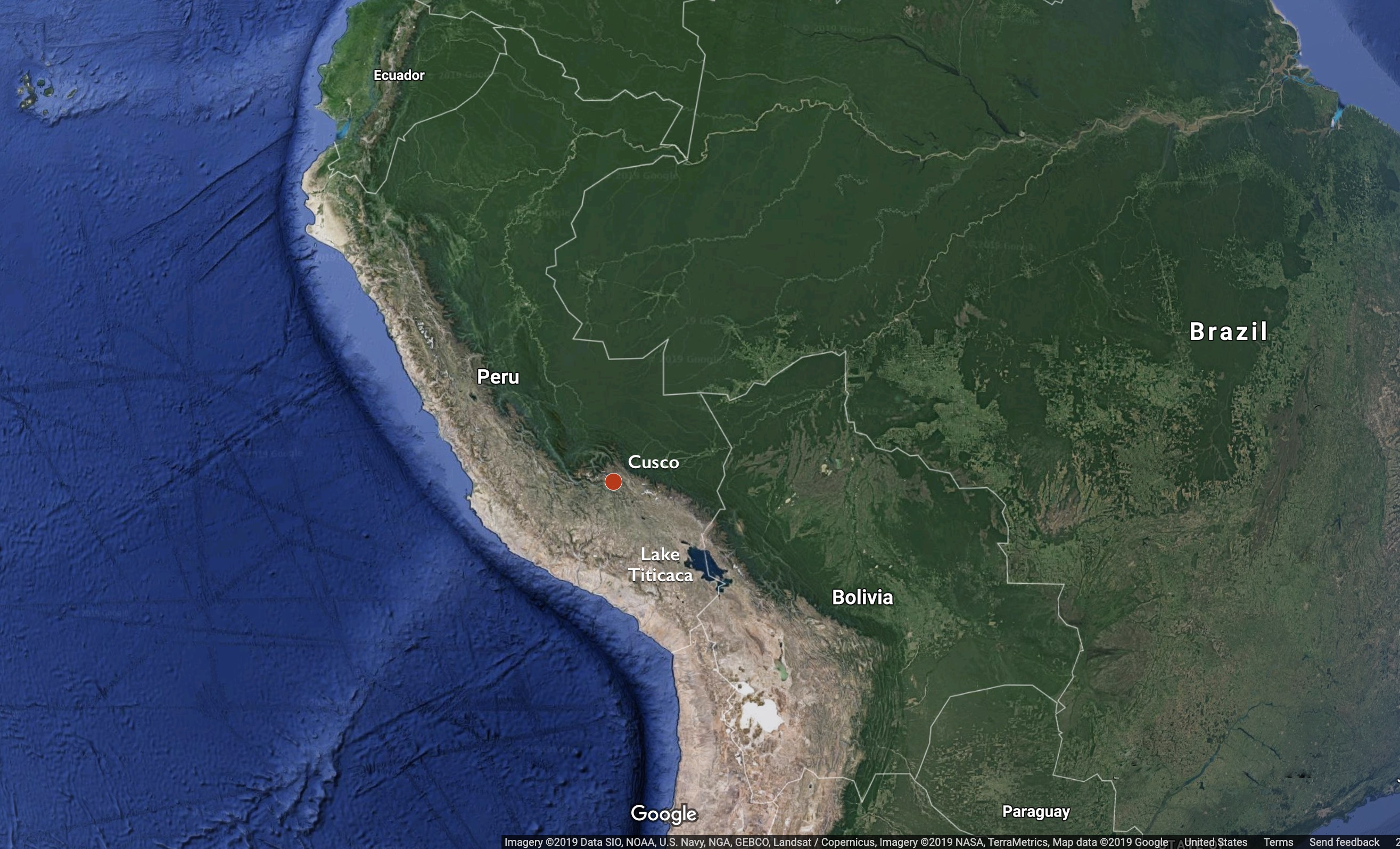
The Cuzco School of Painting
In 1688, a group of indigenous artists initiated a legal battle that would change the course of artistic production for the rest of the colonial period. Tensions between Spanish and indigenous artists working within the same guild came to a head eleven years earlier, when a group of native artists withdrew from participation in the creation of a triumphal arch for Cuzco’s Corpus Christi procession (a feast commemorating the institution of the Holy Eucharist). Both parties accused the other of drunkenness and a poor work ethic, undoubtedly fueled by the tensions that arose from Cuzco’s hierarchical guild system, which prevented non-elite indigenous artists from assuming master status.
This ultimately led to the formation of an independent indigenous painting workshop known as the Cuzco School of Painting. The legal success of the indigenous painters liberated them from the strict dictates of the Europeanizing styles they were expected to emulate. The Cuzco School developed a unique artistic signature characterized by a bright color palette, flattened forms, indigenous symbolism, and a profusion of gold ornament.
Cuzco School paintings came into such high demand that they were exported to patrons residing in far-flung cities located in present-day Chile and Argentina. In a 1788 publication entitled Fundación de la Real Audiencia de Cuzco (Foundation of the Royal Audience of Cuzco), the author even mentions the existence of a market for Cuzco School paintings in Italy.
Our Lady of Cocharcas
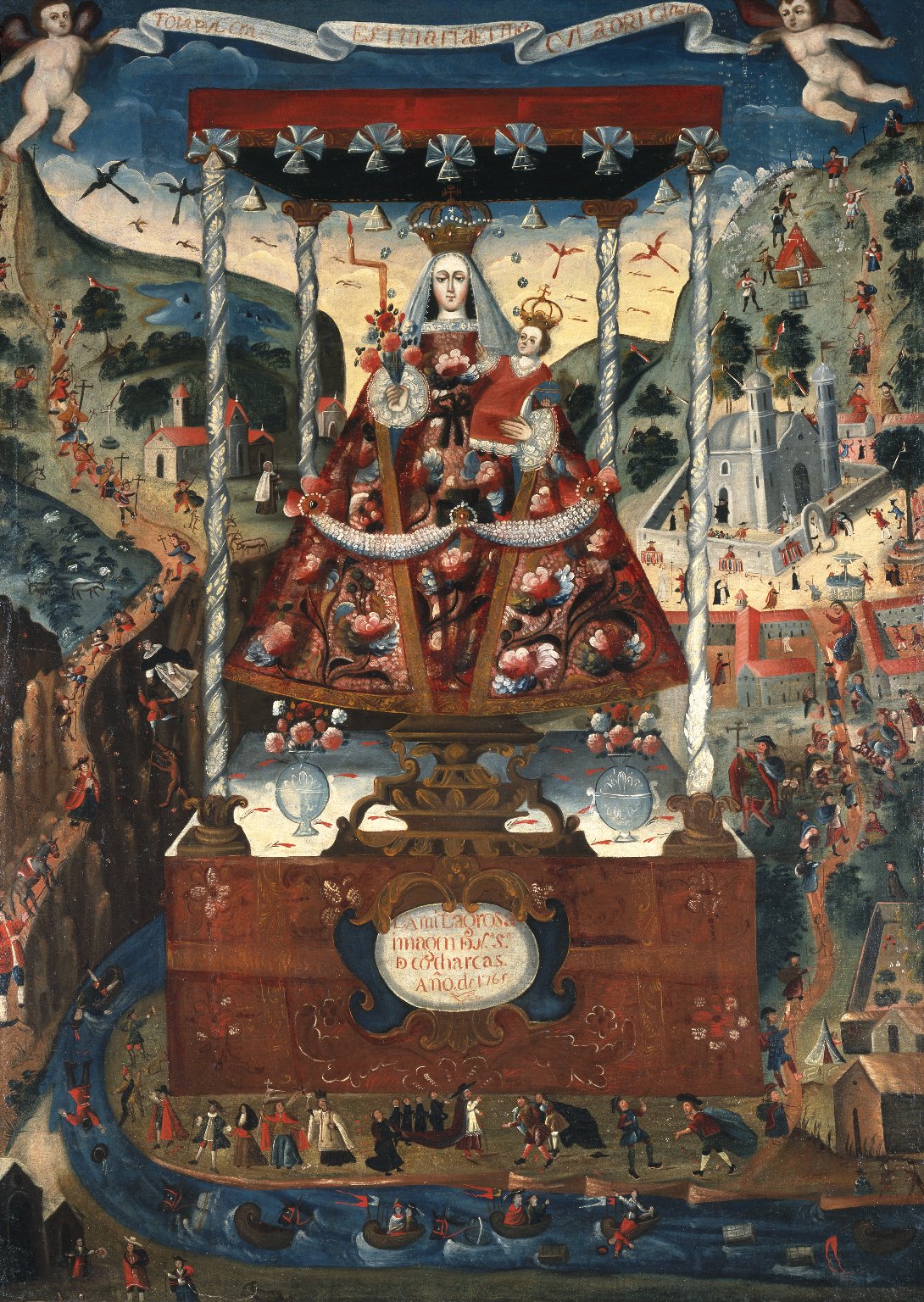
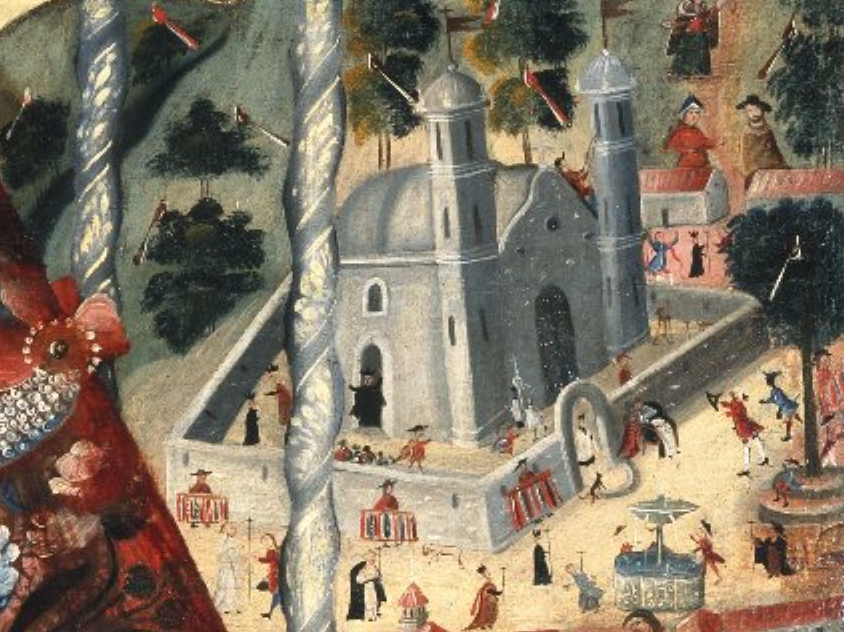
One iconic example of this new Cuzco school aesthetic is an eighteenth-century painting, Our Lady of Cocharcas, which depicts the Virgin within an elaborate canopy. The painting commemorates the inauguration of the Sanctuary of Our Lady of Cocharcas in 1623. She wears a mountain-like conical dress that visually referenced the Virgin’s association with Pachamama, the Andean mother earth. The gold leaf appliqué draws the eye to the center of the composition, highlighting the Virgin’s resplendent vestments.
The artist does not attempt to model the dress’s gold and beaded ornamentation around the body; the Virgin looks stiff and flat. This does not by any means take away from the vibrancy of the composition, however. The scene teems with life, populated by hordes of pilgrims paying their respects to the Virgin. Religious and secular themes seamlessly coexist in the background, which features faithful devotees alongside playful scenes of everyday life.
Paintings of sculptures
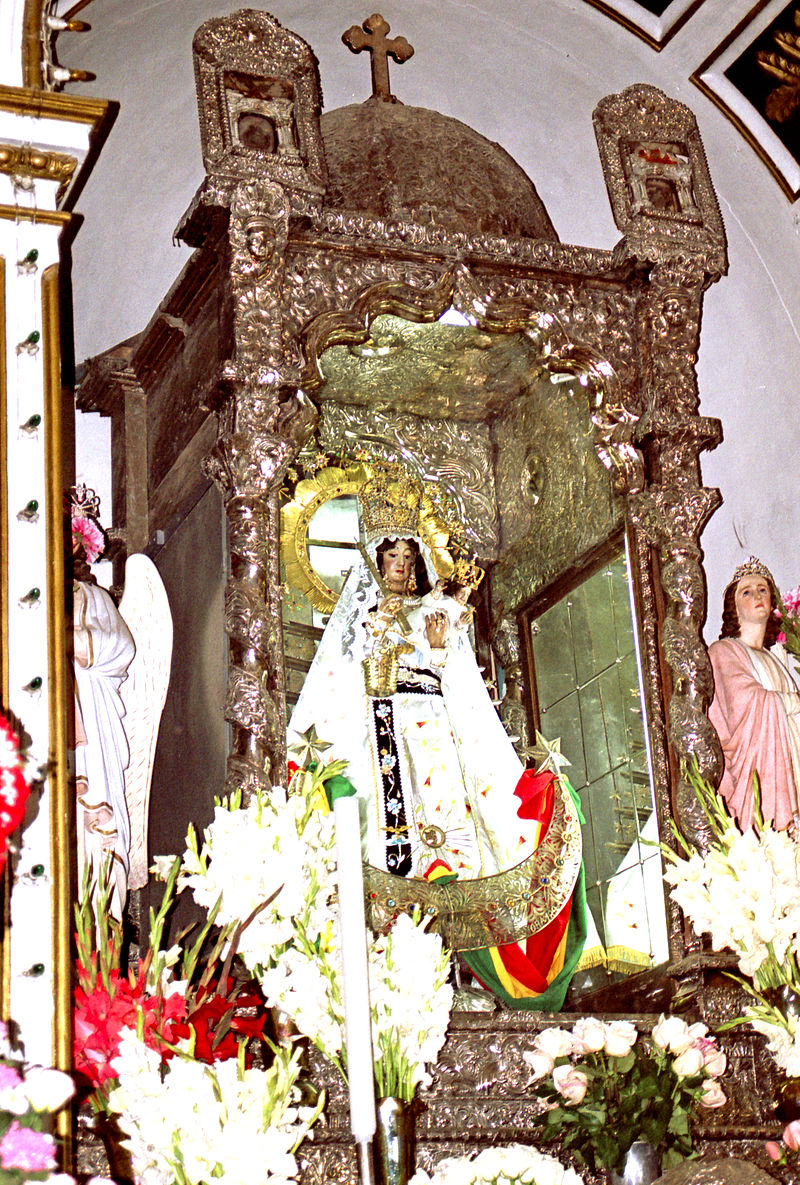
This painting belongs to a broader genre of colonial Andean statue paintings that depict not the Virgin herself, but a representation of the statue of the Virgin that was brought to the town of Cocharcas by an indigenous man named Sebastián Quimichi. A native of Cocharcas, Quimichi embarked on a pilgrimage to the shrine of the Virgin of Copacabana on the shores of Lake Titicaca (which straddles the modern-day border between Peru and Bolivia) in search of a cure for his injured hand.
Moved by the healing powers of the Virgin of Copacabana, he raised funds for the construction of a copy of the Copacabana sculpture so that he could bring it back to Cocharcas to inspire devotion of her in his hometown. The painting depicts the moment in which the statue of the Virgin of Cocharcas is transferred to her newly consecrated sanctuary, celebrated by an astoundingly diverse population of pilgrims, including priests, indigenous peoples, mestizos (the child of a Spanish man and an Indigenous woman), and Afro Peruvians, both old and young, male and female.
Cuzco School paintings like Our Lady of Cocharcas introduced Andean renditions of Catholic subjects that strongly resonated with their viewers and patrons, serving as emblems of piety and local identity.
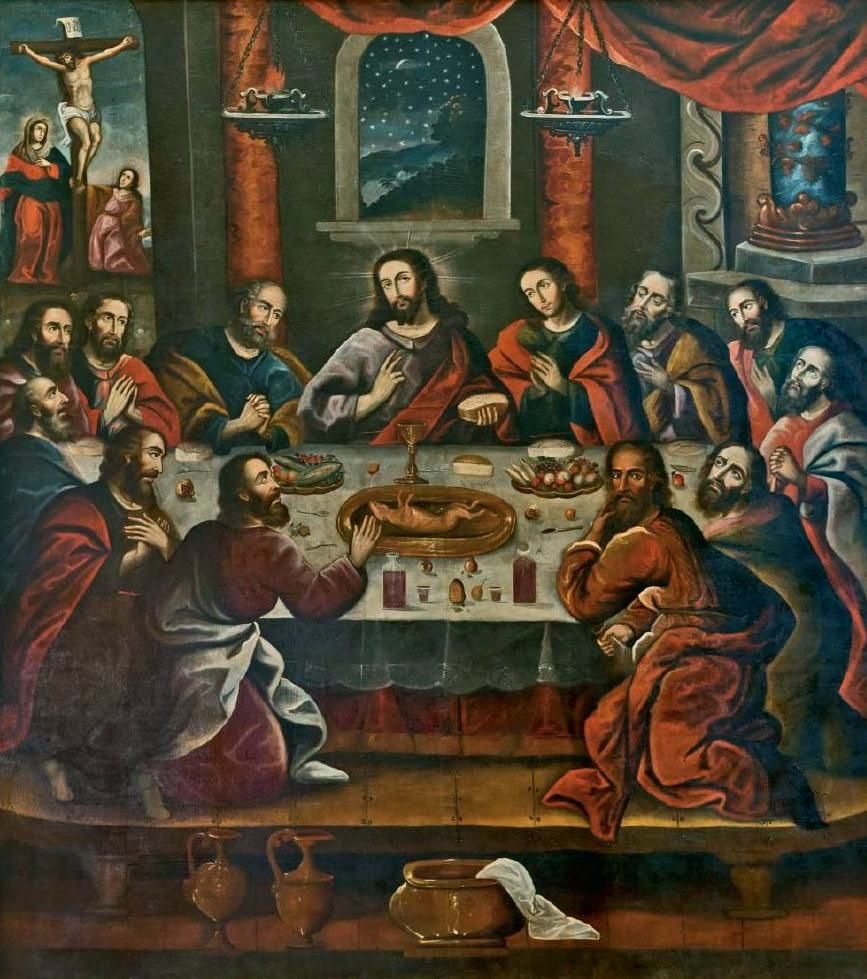
The longevity of the Cuzco School
Marcos Zapata’s Last Supper, located in the Cuzco Cathedral, speaks to the longevity of the Cuzco School style in highland Peru. Painted in 1753, the image lacks the bright color palette and gold leaf that characterized many of the earlier paintings. Nevertheless, Zapata retains a similar anecdotal rendering of illusionistic space and compositional intimacy seen in images like Our Lady of Cocharcas.
Zapata’s desire to imbue his paintings with local flavor is clearly seen in his depiction of the culinary delicacy awaiting the diners’ lips. While European artists usually depicted an empty platter at the center of the table (or at times containing the Paschal Lamb), Zapata has filled the requisite platter with a roasted vizcacha, a small rodent native to the Andes. These kinds of subtle inclusions gave Cuzco School paintings a resolute “Andeanness” that appealed to local knowledge and wedded them to the cultural contexts in which they were conceived.
Additional resources:
Read more about the arts of the Spanish Americas
Ananda Cohen-Aponte, Heaven, Hell, and Everything in Between: Murals of the Colonial Andes (University of Texas Press, 2016)
Emily A. Engel, “Visualizing a Colonial Peruvian Community in the Eighteenth-Century Paintings of Our Lady of Cocharcas.” Religion and the Arts 13, no. 3 (2009): 299–339
Carol Damian, “Artist and Patron in Colonial Cuzco: Workshops, Contracts, and a Petition for Independence.” Colonial Latin American Historical Review 4, no. 1 (1995): 25–53
José de Mesa and Teresa Gisbert, Historia de la pintura cuzqueña, 2nd ed. (Lima: Fundación Banco Wiesse, 1982)
Cusco School Artist, Saint Joseph and the Christ Child
by MYA DOSCH

From comic relief to a starring role
St. Joseph holds the hand of his foster son, the miraculous Christ Child. The gold-adorned halos of the two figures radiate light into the lush landscape around them. Joseph’s wife, the Virgin Mary, is nowhere to be seen, focusing our attention on Joseph’s paternal role. Paintings that celebrated St. Joseph as a youthful, caring father skyrocketed to popularity during the 16th and 17th centuries, both in Spain and throughout the Spanish Empire. In earlier European Catholicism, Joseph was considered a peripheral saint (he is only mentioned in the New Testament eight times). In paintings from this earlier period, Joseph was often depicted as an aging man humorously dozing off in a corner at the Nativity. St. Joseph went from comic relief to a starring role in Hispanic devotions by the 17th century. This particular painting of the lively, vigorous St. Joseph is from the Andean region of the Viceroyalty of Peru. The Viceroyalty of Peru (1542-1824) was one of two Spanish Viceroyalties, or administrative districts, in the Americas, which eventually encompassed much of South America. Joseph remains one of the patron saints of Peru to this day.
Why the newfound popularity?
St. Joseph was a figure to whom devotees could relate. Just as the Virgin Mary was a model of the ideal mother and woman, St. Joseph could encourage male believers to emulate his example as a devoted father and husband. Sixteenth-century Italian theologian Isidoro de Isolani argued that Joseph was vital for his role as the honorable head of the Holy Family. St. Joseph was also the patron saint of marriage. In Lima, Peru, praying to a statue of St. Joseph was said to “cure” jealous husbands and restore marital harmony. Joseph’s role as model patriarch was particularly important to the Catholic Church, as Christian marriage was a means of structuring the recently converted indigenous populations of the Spanish Americas. By encouraging marriage between Spanish and Indigenous elites, the Spanish crown could consolidate its power. Furthermore, they could attempt to strengthen Christian devotion among the indigenous peoples by promoting the Christian ritual of marriage and outlawing indigenous marriage rites.
Flaunting fabrics: The Cusco School

This image of St. Joseph differs from saints’ images elsewhere in the Spanish Empire. It exhibits several of the distinctive features of the regional “Cusco School” of painting (Cusco is the name of this region—in the Central Peruvian Andes of South America). The Cuzco-School style developed as indigenous Andean artists adopted techniques imported by artists from Spain and Flanders. For example, they embraced the Flemish interest in detailed landscapes and atmospheric perspective, seen here in the use of light blue tones to suggest distant hills. Cuzqueño artists also incorporated local details, such as regional flora and tropical birds.
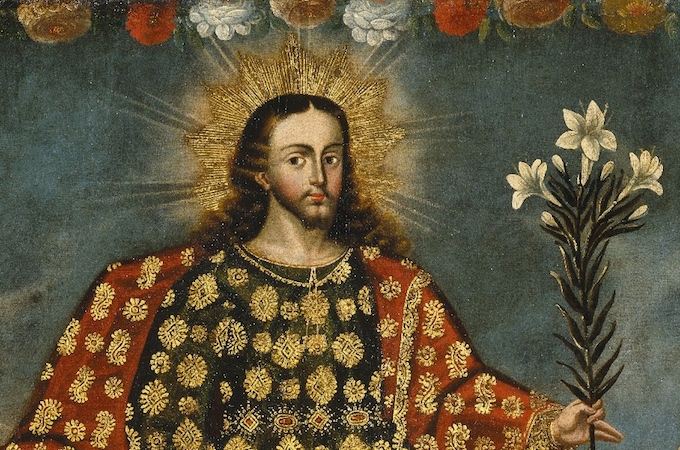

Fabrics received particular attention in Cusco School paintings, and are often adorned with elaborate patterns and gold leaf (a thin layer of gold applied to the surface of painting). In this example, the billowing robes of Joseph and the Christ Child are depicted with incredible intricacy. Gold stamping is present throughout the costumes’ brocaded designs, their cuffs, their hems, and their lace trim.
The Inka people of pre-conquest Peru highly valued textiles, and the prestige bestowed by fabrics continued long after the Spanish colonized the region. Cumbi cloth, the highest-quality fabric produced in Peru, was among the most expensive commodities available to a colonial Peruvian individual during the 17th and 18th centuries. A painting such as St. Joseph and the Christ Child, on the other hand, would have cost only one-fifth the price of a mantle of the finest cumbi cloth. Painting could, however, evoke the multicolored lavishness of a textile—and some of its status—but at a much lower cost.

In addition to the opulent textiles, other aspects of the painting infuse the Euro-Christian figures with Andean elements. The bright red sandals worn by the Christ Child, for example, are the same style as those worn by the indigenous Inkan elite. Images of Inkan leaders sporting similar footwear appear in the manuscript by Felipe Guaman Poma de Ayala, The First New Chronicle and Good Government (El primer nueva corónica y buen gobierno, 1615) (a historical account of the Andes and a critique of Spanish colonial rule sent to the Spanish king).
Visual bilingualism
In the eyes of a colonial Cusqueño (an inhabitant of Cusco) then, this Christ Child might evoke both the Sapa Inka, or supreme Inkan ruler, as well as the Christian savior. Both the Sapa Inka and Christ were associated with solar symbolism: the Sapa Inka was the son of the sun god, and Christ was considered the lux mundi or “light of the world.” In St. Joseph and the Christ Child, both figures have detailed sunburst halos and gleaming gold robes, a reminder of this solar association.
Colonial officials hoped to exploit the similarity between the two figures by substituting the figure of Christ for revered Inkan deities. For example, official colonial observances of Inti Raymi, the festival of the sun, celebrated Christ’s defeat of the Inka. However, paintings like this one show that the two visual languages could coexist, in spite of official events that championed the Christian over the Inka. Descendants of Indigenous elites proudly displayed paintings of their Inkan forebears alongside Christian images as a means to highlight their noble genealogy. The painting St. Joseph and the Christ Child likely hung in a domestic setting, allowing the owners to pray to St. Joseph for marital harmony within the comforts of their own sitting room or bedchamber.
St. Joseph and the Christ Child shows that an Andean consumer could appeal to both their prestigious Inkan heritage and their Christian family values through one single image. While Inkan and Euro-Christian styles may seem like two very distinct “visual languages,” St. Joseph and the Christ Child reminds us that many colonial viewers could have been fluent in both.
Additional resources:
Maya Stanfield-Mazzi, “The Possessor’s Agency: Private Art Collecting in the Colonial Andes,” Colonial Latin American Review vol. 18, no. 3 (2009, pp. 339-64.
Charlene Villaseñor-Black, Creating the Cult of St. Joseph: Art and Gender in the Spanish Empire (Princeton, NJ: Princeton University Press, 2006).
Fourteen portraits of the Inka Kings
by CARLA COLON


In the Pre-Hispanic period (the period before Spanish colonization) the Inka did not have a tradition of portrait painting comparable to that of Europeans (the Inka Empire was on the west coast of South America, and included parts of present day Peru, Ecuador, Colombia and Bolivia). However, following the Spanish Conquest (c. 1534) they quickly appropriated European painting conventions. For example, the images of Sapa Inkas (the sovereign Inka emperors) in Felipe Guaman Poma de Ayala’s famed illustrated chronicle El primer nueva corónica y buen gobierno (The First New Chronicle and Good Government, c. 1615) are among the earliest examples of European-style portraiture executed by an indigenous artist.


The Brooklyn Museum of Art has in its collection a series of fourteen portraits of Inka rulers—one of the portraits depicts the sixteenth-century Inka emperor Atahualpa, dressed in elaborate textiles and wearing golden jewelry. He also holds a royal staff capped with a golden sun, and a golden crown of intertwined snakes rests atop his head.
The Brooklyn series is based on an earlier portrait series which illustrated the Spanish historian and chronicler Antonio Herrera’s Historia general de los hechos de los castellanos en las islas y tierra firme del mar océano (General History of the Deeds of the Castillians on the Islands and Mainland of the Ocean Sea Known as the West Indies) first published in 1615. General History, a four-volume history of the Americas also known as Décadas, is a descriptive narration of events focused on the experience of the Spanish conquistadors (a term used for a conquering Spanish or Portugese soldier). The history is divided into eight decades, each of which is introduced by a unique, engraved title page. The title page (left) introducing the fifth decade was the model for the Brooklyn series of Inka rulers.
In both the engraving and the painted series, the figures’ postures and regalia as well as the strategies of representation correspond closely. The Inka kings are shown as half-length figures set in decorative roundels on which are inscribed their names and positions in the line of royal succession. Notably absent from the Herrera engraving is the image of Atahualpa. He is, though, included in the Brooklyn series—with an inscription that reads “bastard tyrant Atahualpa.” The increased scale of his figure in the roundel deviates from the conventions of the other thirteen portraits, such as those of Huayna Capac or Huascar.¹
Atahualpa and the Spaniards

Atahualpa was the last Sapa Inka before the Spanish Conquest began around 1534. As the inscription on the Brooklyn portrait makes explicit, he was the illegitimate son of Sapa Inka Huayna Capac who died of smallpox in 1528. Although Atahualpa ultimately prevailed in a battle with his elder brother Huascar (born of a different mother) for control of the Inka empire—the timing of the victory was unfortunate. While the civil war raged, the Spanish conquistador Franciso Pizarro, who had landed in present-day Ecuador on his third expedition to the Americas, made his way southward along the western coast of the continent, pillaging and murdering as he traveled. In November of 1523, Atahualpa was celebrating his victory in the city of Cajamarca awaiting the arrival of his prisoner, his brother Huascar. He had learned of Pizarro’s expedition party but believed a retinue of less than two hundred men posed little threat. On November 16 Atahualpa, sumptuously attired, rode into the plaza of Cajamarca atop a luxurious litter (a platform for passengers carried by people) accompanied by high ranking Inka nobles and several thousand guards. He was met by the Dominican friar Vicente de Valverde and an interpreter. After a tense exchange in which Atahualpa threw to the ground a book of Catholic prayers offered to him by Valverde, the friar called out to the Spaniards who had hidden themselves, their mounts and artillery in the buildings surrounding the plaza. Pizarro signaled his men to charge, and in the ambush that followed several thousand Andeans were massacred and Atahualpa was taken prisoner.
In captivity, Atahualpa quickly discovered the Spaniards’ lust for silver and gold. He offered Pizarro an impressive ransom in exchange for his freedom, promising to fill a room approximately 6.2m x 4.8m to half its height (2.5 meters) with gold objects and the same room twice over with silver objects. For the next eight months, gold and silver streamed into Cajamarca from across the empire. Beginning in June the Spaniards began melting down the cache of treasure and divvying up the spoils. After the ransom had been melted and dispersed—and in response to mounting pressure among the expedition party—Pizarro had Atahualpa executed on July 26, 1533, by garroting (a method of execution by which a tightened metal collar results in strangulation).
Who owned this series?
During the colonial period if you visited the home of a powerful cacique (an Indian chieftain or nobleman) you might see royal portraits depicting the succession of Inka kings displayed. Portraits of royal Inka genealogies were especially important in the late seventeenth and eighteenth centuries—these aristocratic genealogies were employed by the Inka elite to assert their privileged social status and claim political power in the viceroyalty. Following the Tupac Amaru II rebellion (1780-81), Inkaist imagery (like depictions of the Sapa Inkas) was banned by Spanish colonial authorities who feared that depictions of aristocratic Inka forbearers as well as contemporary Inka nobility would incite subsequent uprisings. Genealogical Inka portraits, such as the Brooklyn series, would have been seen as subversive in this moment.
1. There are two potential sources for the General History engravings upon which the Brooklyn series is based. The first are paintings of Pre-Hispanic Inka rulers commissioned in 1572 by the Viceroy Franciso de Toledo and sent to King Phillip II of Spain. The second is a painting commissioned by Inkas of royal descent in Cuzco which depicted Pre-Hispanic Inka rulers and their descendants. This painting, which was sent to Spain in 1603, served as evidence of the commissioners’ royal lineage and established their claim to rights as nobility under Spanish law. Unfortunately since neither of the proposed models for the General History engravings exist any more, we are limited to speculation about its original source.
Additional resources:
These portraits at the Brooklyn Museum
Gold of the Indies on The Metropolitan Museum of Art’s Heilbrunn Timeline of Art History
Aste, Richard, ed. Behind Closed Doors: Art in the Spanish American Home, 1492-1898 (New York: The Brooklyn Museum, Monacelli Press, 2013).
Cummins, Thomas B.F., “We are the Other: Peruvian Portraits of Colonial Kurakakuna, “ in Transatlantic Encounters: Europeans and Andeans in the Sixteenth Century, ed. by Kenneth J. Andrien and Rolena Adorno (Berkeley and Los Angeles: University of California Press, 1991) pp. 203-231.
Terence N. D’Altroy, The Incas (Malden and Oxford: Blackwell Publishers Inc, 2002).
Carolyn Dean, “Inka Nobles: Portraiture and Paradox in Colonial Peru,” in Exploring New World Imagery: Spanish Colonial Papers from the 2002 Mayer Center Symposium, ed. by Donna Pierce (Denver: Frederick and Jan Mayer Center for Pre-Columbian and Spanish Colonial Art, Denver Art Museum, 2005), pp. 80-103.
Diana Fane, ed. Converging Cultures: Art and Identity in Spanish America (New York: The Brooklyn Museum in association with Harry N. Abrams, 1996).
Colonial Brazil
Introduction to colonial Brazil
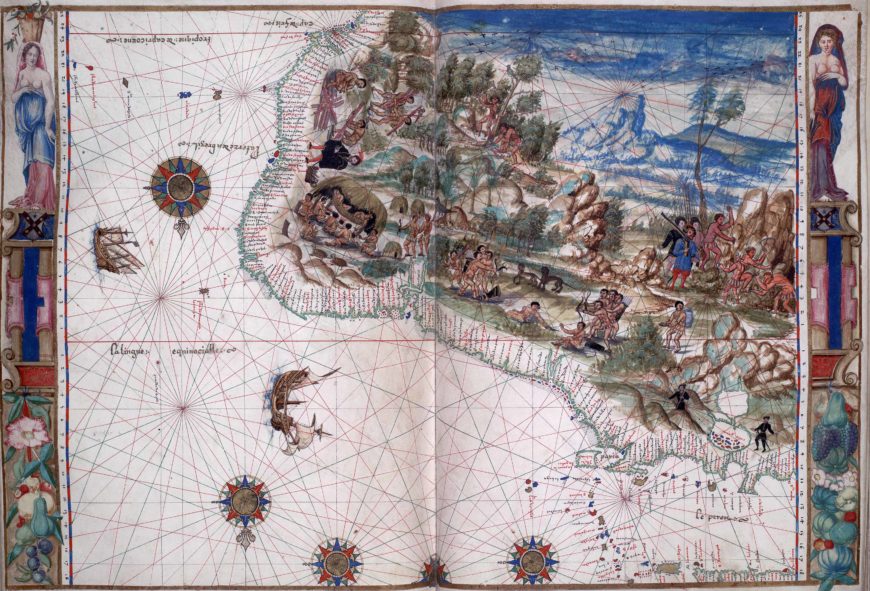
Although news of Christopher Columbus’s “discovery” of the Americas had already spread across Europe, the Portuguese stumbled upon Brazil by accident. In 1498, Vasco da Gama successfully sailed from Portugal around the southern tip of Africa to India, achieving what Columbus had hoped to accomplish: establishing an overseas route between Europe and Asia. In 1500, Pedro Alvares Cabral set out from Portugal to replicate da Gama’s journey to India but veered too far west and landed instead on the shores of Brazil. Although Cabral’s team only stayed in Brazil for a few days before continuing on to India, they sent a letter to the Portuguese king to inform him of the discovery. The letter describes peaceful exchanges with naked indigenous peoples who hunted with bows and arrows and slept in hammocks.
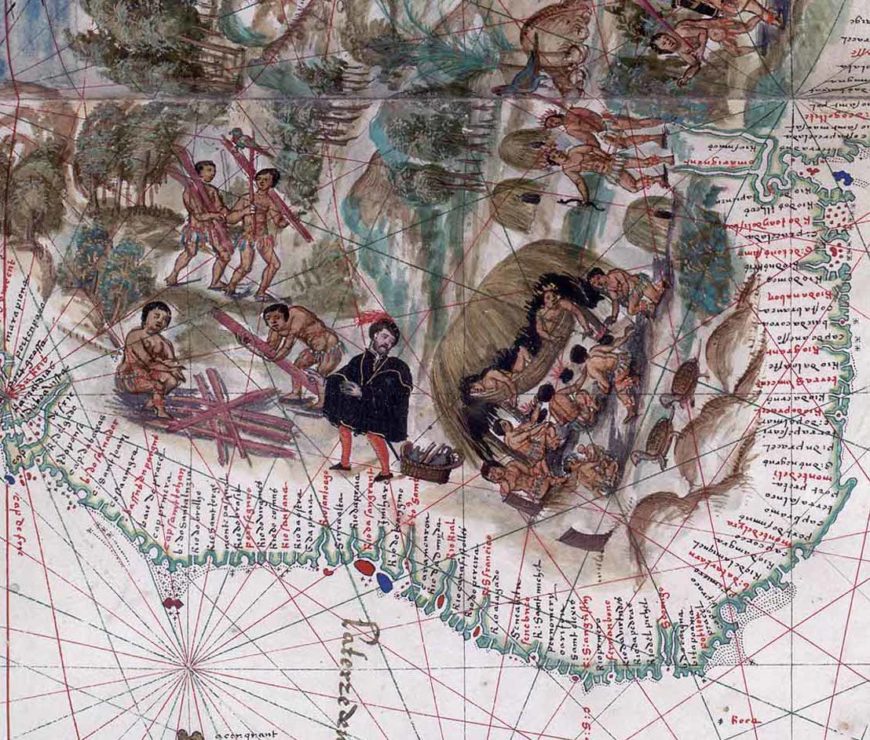
The Portuguese colonization of Brazil was initially quite different from the Spanish conquest of the Americas. The Portuguese were more invested in evangelization and trade in Asia and Africa, which included trafficking in enslaved humans, and viewed Brazil as a trade post instead of a place to send larger numbers of settlers. Unlike the extensive stone-built cities of Mesoamerica and the Andes, indigenous inhabitants of Brazil lived in villages. Rather than launching large military campaigns to conquer empires, the Portuguese engaged in trade with native Brazilians and smaller-scale battles against rival groups. Brazil’s first export to Europe was brazilwood, a tree that produces a red dye and that gave the region its name. Wanting access to brazilwood, the French also created alliances with indigenous groups and competed over control of Brazil for much of the sixteenth century. The French Vallard Atlas shows native Brazilians bringing brazilwood to a French merchant dressed in black. The feather skirts are likely a misinterpretation of headdresses.
Converts and Cannibals
Portuguese explorers believed that native Brazilians would be easily converted to Catholicism once the language barrier had been overcome. Franciscan and Jesuit missionaries rushed to Brazil and lived with converted indigenous peoples in aldeias (villages) separate from the towns and cities where Portuguese settlers lived. Even though the Pope had forbidden enslavement of Native Americans in 1537, explorers called bandeirantes traveled about capturing native Brazilians to sell into slavery. As in the Spanish Americas, some missionaries helped to protect indigenous communities from enslavement, while others exploited indigenous labor.
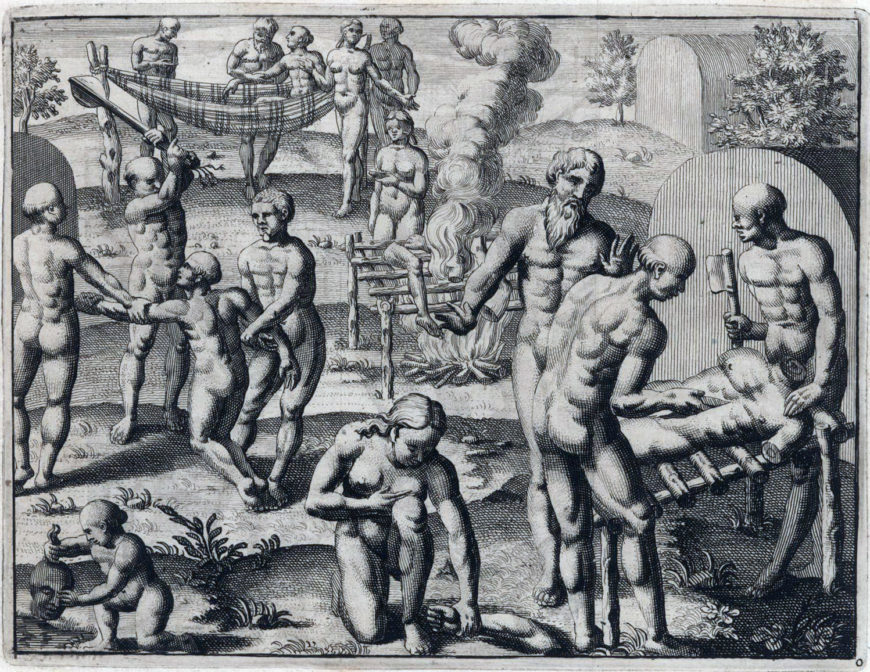
The letter that announced the Portuguese arrival in Brazil described native inhabitants as complacent and harmless, but later accounts by adventurers and missionaries focus heavily on the practice of ritual cannibalism. Although there is little evidence that indigenous cultures practiced cannibalism, rumors of such actions were viewed as a justification for enslavement. The association of native Brazilians with cannibalism has had a lasting effect on the arts even into the twenty-first century. Tarsila do Amaral’s painting Antropofagia (based on the Greek word for cannibalism) is a particularly famous example.
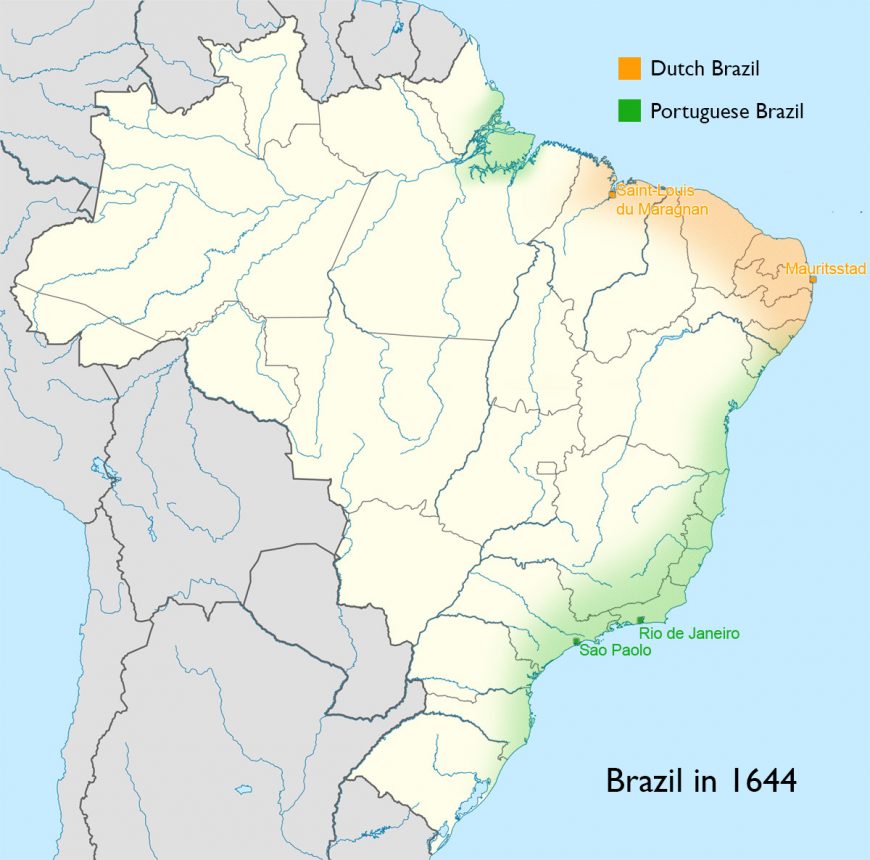
From Sugar to Gold
Sugar soon overtook brazilwood as the colony’s most important industry. Europeans forced enslaved Africans to work on sugarcane plantations, providing plantation owners with great wealth. The sugar industry attracted the Dutch, who gained control over the northeast of Brazil from 1630 to 1654. Although short-lived, the Dutch colony produced a substantial number of artworks. The governor Johan Maurits van Nassau was a supporter of scientific exploration. His palace in the capital Mauritsstad (Recife) included botanical gardens and a zoo, and he brought two Dutch painters, Albert Eckhout and Frans Post, with him to document the flora, fauna, and customs of Brazil. The merchant and painter Zacharias Wagener, who had been serving military duties in Brazil, also joined the governor’s court.
Once the Portuguese had expelled the Dutch, they continued to settle Brazil’s vast territory and exploit its resources. In addition to enslaved Africans producing sugar in the Northeast, explorers found gold and diamonds in an inland region called Minas Gerais (General Mines). The abundant gold and diamonds, mined by enslaved individuals, allowed wealth, trade, and artistic production to flourish in the entire Portuguese empire throughout the eighteenth century. As the closest port to the mining region, Rio de Janeiro was named Brazil’s new capital city in 1763.
Google Map of Church of Our Lady of the Rosary in Recife in BrazIl
Afro-Brazilians as Artists and Patrons
More enslaved Africans were transported to Brazil than to any other region of the Americas. As a result, Brazil’s economy, built environment, and culture are founded on the activities of Africans and people of African descent. Not only were most colonial architectural projects built by enslaved individuals, but some of the most famous artists of colonial Brazil were also people of African ancestry. Antonio Francisco Lisboa, known by the nickname Aleijadinho (Little Cripple), was a sculptor in Minas Gerais, and Valentim da Fonseca e Silva, or Mestre Valentim, was an architect who worked in Rio de Janeiro. Afro-Brazilians were also active patrons of the arts. Both enslaved and free people of color joined confraternities to celebrate Catholic saints. Confraternity members pooled their resources and commissioned churches where they held religious services. Churches belonging to Afro-Brazilian communities survive all over Brazil, such as the Church of Our Lady of the Rosary in Recife (as seen above).
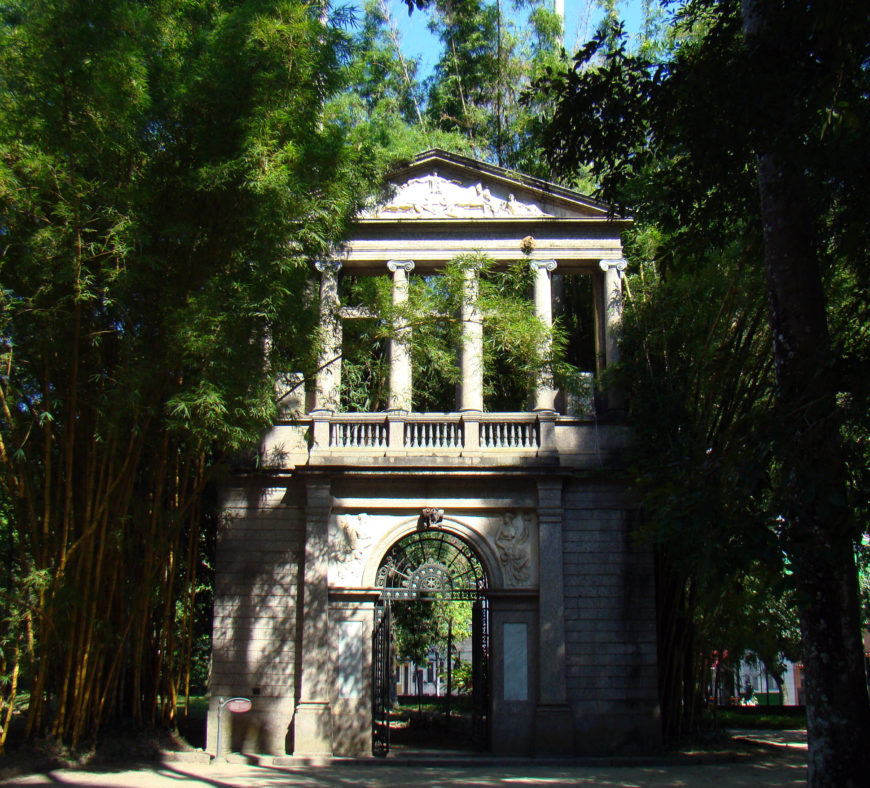
An Unusual Ending
In 1807, Napoleon’s army invaded Portugal and the Portuguese royal family fled to Rio de Janeiro. This move transformed Rio de Janeiro into the capital of the Portuguese Empire and dramatically altered the political, economic, and cultural landscape of Brazil. The Portuguese king invited several French artists to Rio de Janeiro (this group is called the French Artistic Mission) who were tasked with the creation of the Academy of Fine Arts. The royal family returned to Portugal in 1821, but the king’s son Pedro I remained in Brazil. The following year, Pedro declared independence and named himself emperor of Brazil.
Albert Eckhout, Series of eight figures
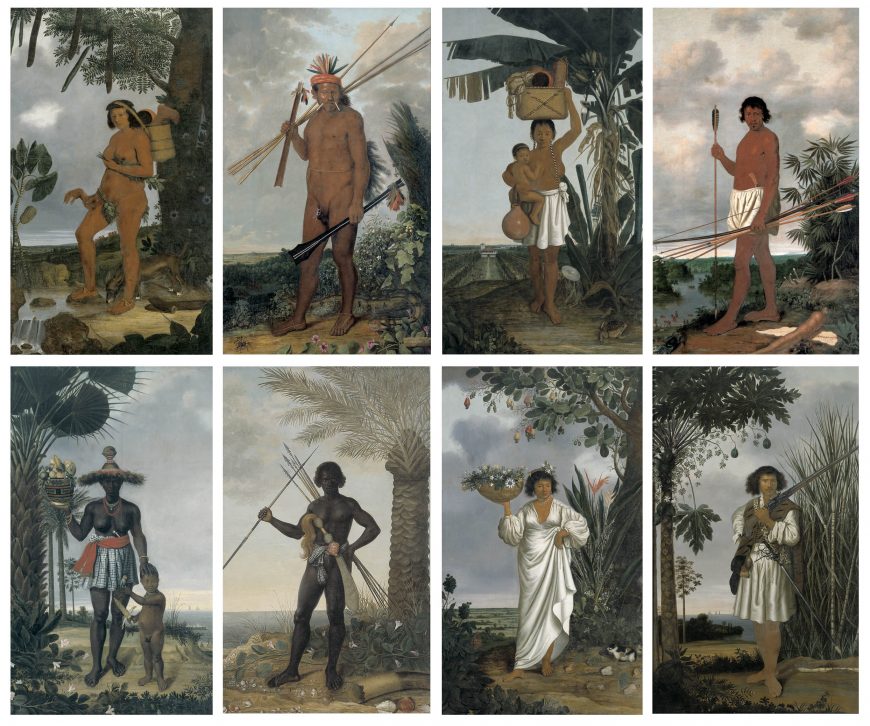
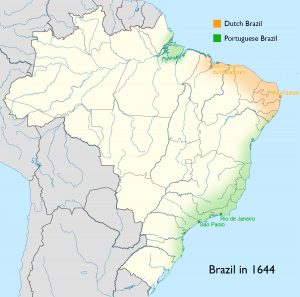
In 1630, the Dutch conquered the prosperous sugarcane-producing area in the northeast region of the Portuguese colony of Brazil. Although it only lasted for 24 years, the Dutch colony resulted in substantial art production. The governor Johan Maurits van Nassau-Siegen also encouraged scientific exploration and his palace in Mauritsstad (present-day Recife) included botanical gardens, a zoo, and a cabinet of curiosities. Maurits brought two artists, Albert Eckhout and the landscape painter Frans Post, to Brazil to document the local flora, fauna, people, and customs. One of Eckhout’s series of eight paintings helps us to understand how the Dutch artist encoded ethnic differences among the colony’s population.
Making order of a foreign world
Eckhout’s series consists of four life-size male-female pairs, each representing a different cultural or ethnic category. Although Eckhout collaborated with scientists on other projects, these monumental oil paintings employ the visual language of fine art rather than of scientific illustration. The compositions and poses are based on European portrait conventions and some panels include mythological references.
Eckhout may have used live models, and the level of detail gives the impression that these are portraits. However, they are meant to represent “types” rather than individuals. Much like New Spanish casta paintings, Eckhout conveys the moral and cultural stereotypes associated with each group. Clothing, jewelry, weapons, and baskets help to indicate the class and level of sophistication of the figures, while the proliferation of tropical fruits and vegetables advertises the natural abundance of the Brazilian land.
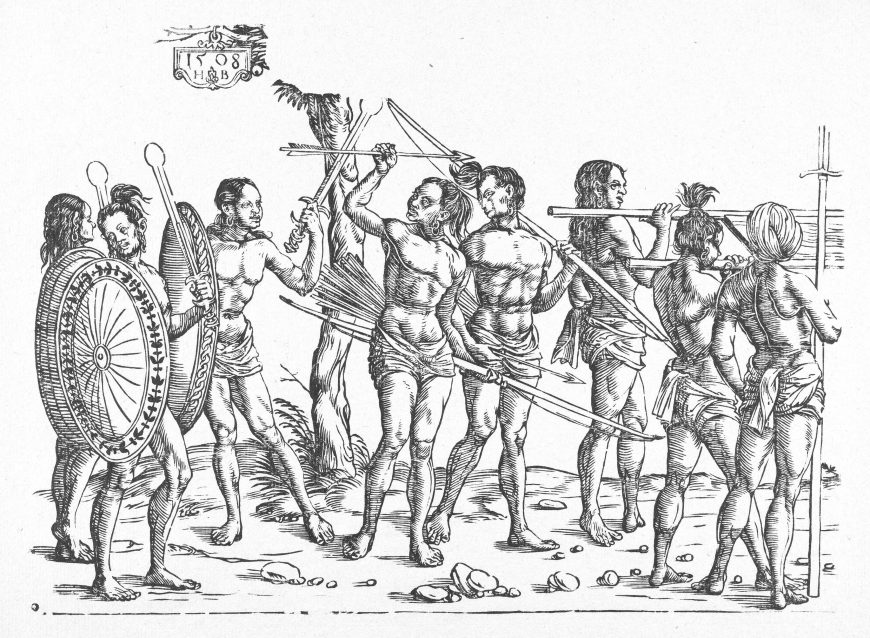
Today, scientists recognize that the idea of separate human races is socially constructed rather than based in genetics. Although the classification of peoples into groups has a long history in Western art and science, skin color was not a major defining factor until around the middle of the seventeenth century—around the same time that Eckhout painted this series. Before this, ethnic groups were conceptualized based on cultural characteristics. For instance, the early 16th-century woodcuts of Hans Burgkmair differentiated the peoples of Africa and India by their hairstyles, material culture, and behaviors, but united all the figures with the same type of idealized body. Eckhout, on the other hand, pays careful attention to skin color and physiognomy as he categorizes the people of Brazil.
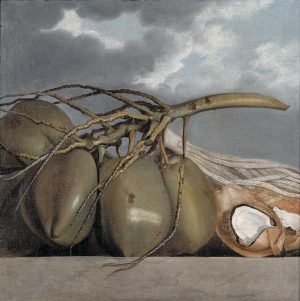
Most scholars believe that these paintings were produced in Brazil to be hung in the governor’s palace. They may have been arranged around a large room with other paintings by Eckhout, including a portrait of Johan Maurits and still life paintings of tropical fruits and vegetables. The series functioned as an extension of Maurits’s cabinet of curiosities, enabling him to “possess” the portrayed figures. After the Dutch lost their Brazilian colony in 1654, Johan Maurits presented the paintings to the king of Denmark, as they had become unwelcome reminders of the failed colony.
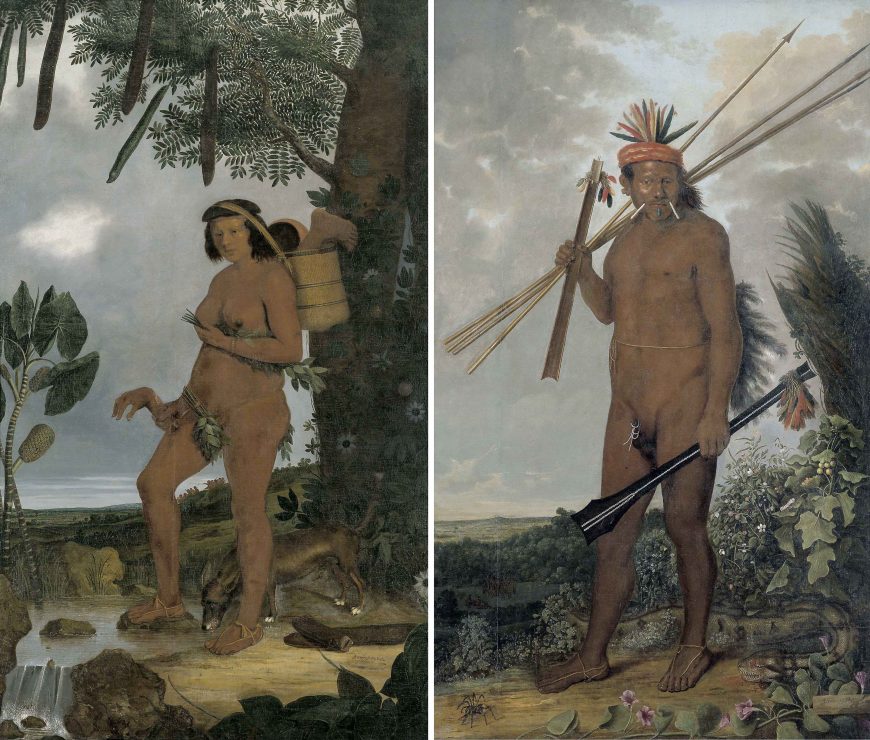
Of cannibals and converts
The pair referred to as “Tapuya” represent native Brazilian tribes with whom Europeans were often engaged in battle. Their nudity, save for some leaves, strings, and small adornments, marks them as “uncivilized” in the eyes of the colonialists. The potential eroticism of the woman’s nudity is undermined by the references to cannibalism—in addition to the severed limbs that she carries, the dog at her feet probably alludes to the dog-headed cannibals that the ancient Greeks described as living in distant regions of the world.[1] The Tapuyas’ militarism is highlighted by the man’s weapons, as well as the distant group of armed figures behind the woman. The snake and spider at the man’s feet further emphasize the threat that the Tapuya represented to the Dutch.
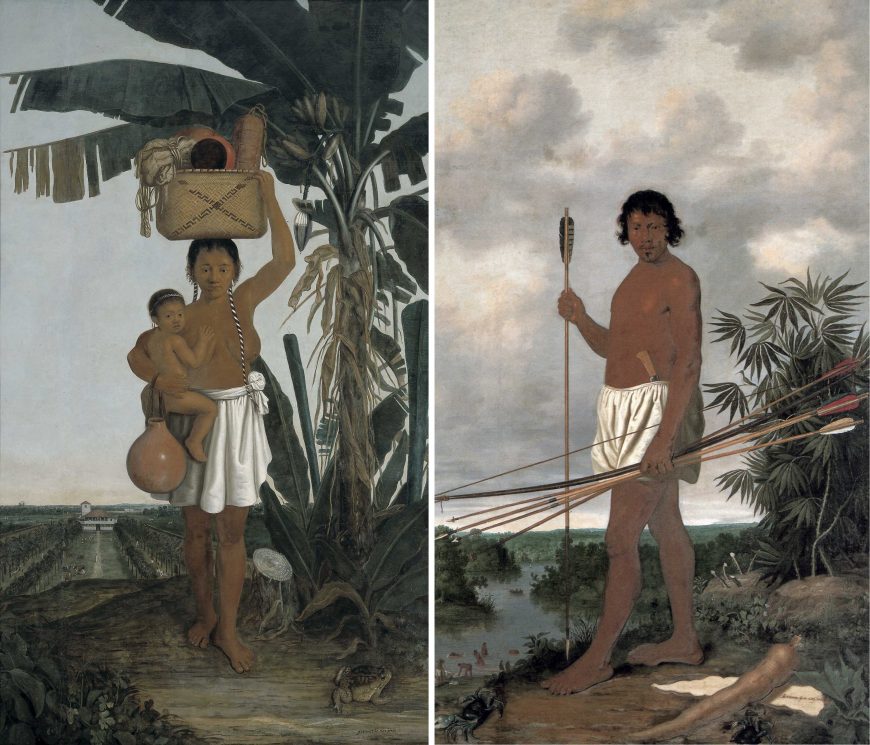
In contrast to the Tapuya, the figures referred to as Brazilians are portrayed as having been tamed through their conversion to Christianity. Missionaries (Catholic under the Portuguese and Protestant under the Dutch) organized converted native Brazilians into aldeias (villages). The European-style building and tidy rows of trees in the orchard demonstrate European notions of the order that have been imposed on the Brazilian land. Both figures are partially clothed, and the woman’s bare breasts emphasize her nurturing role as mother. Unlike the Tapuya man’s club, the Brazilian man’s bow and arrows, not unlike their European equivalents, are meant for hunting animals rather than humans.
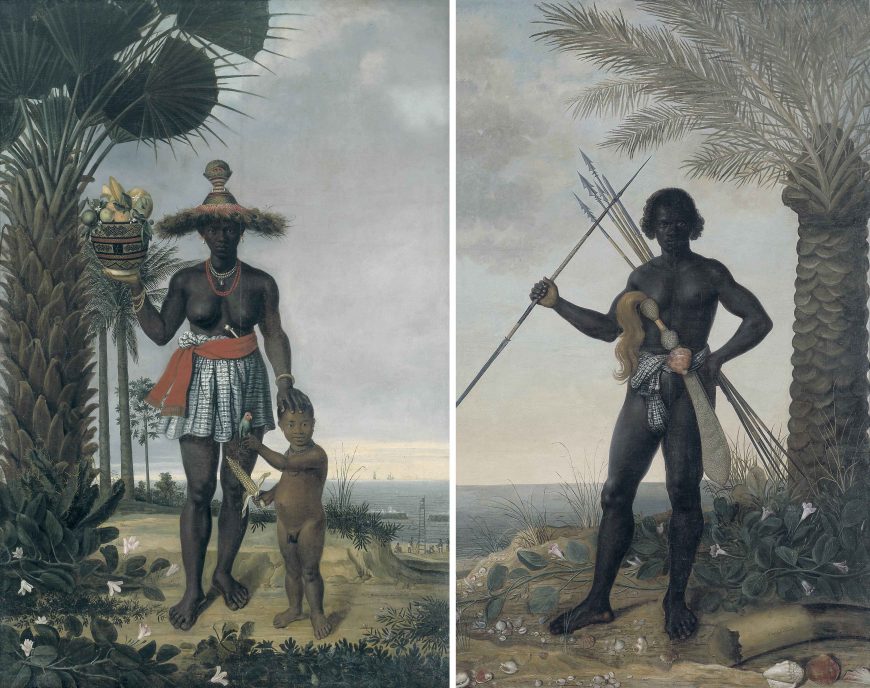
Africans on either side of the Atlantic
Eckhout’s African woman is shown as displaced from her homeland and forced into a world where Africans, Americans, and Europeans interacted. The American plants and native Brazilians fishing on the shore locate her in Brazil, but her hat and basket are African, while her jewelry and the pipe tucked into her waist are European. Although she probably represents a slave, the focus is not on labor but on her sexuality, as the child’s ear of corn points toward her genitals. The child’s lighter complexion may indicate that he is of mixed heritage: European men frequently had sexual relations, often coerced, with enslaved African women.
The African man literally stands apart from the other figures. He is not situated in Brazil, but in Africa, as indicated by the date palm (which is native to North Africa) and the ivory tusk on the ground, which exemplifies Africa’s trade goods. Although the sword, probably modeled after one in Johan Maurits’s collection, is more appropriate to a nobleman, the loincloth, ivory tusk, and palm tree probably stem from prints of traders in the Guinea coast, a major slave trading region. This painting is likely intended to portray a merchant involved in the slave trade that brought the woman to Brazil. Both of these representations of African people emphasize their musculature, reinforcing the European conception that Africans were inherently suited to manual labor and, thus, suited to being enslaved.
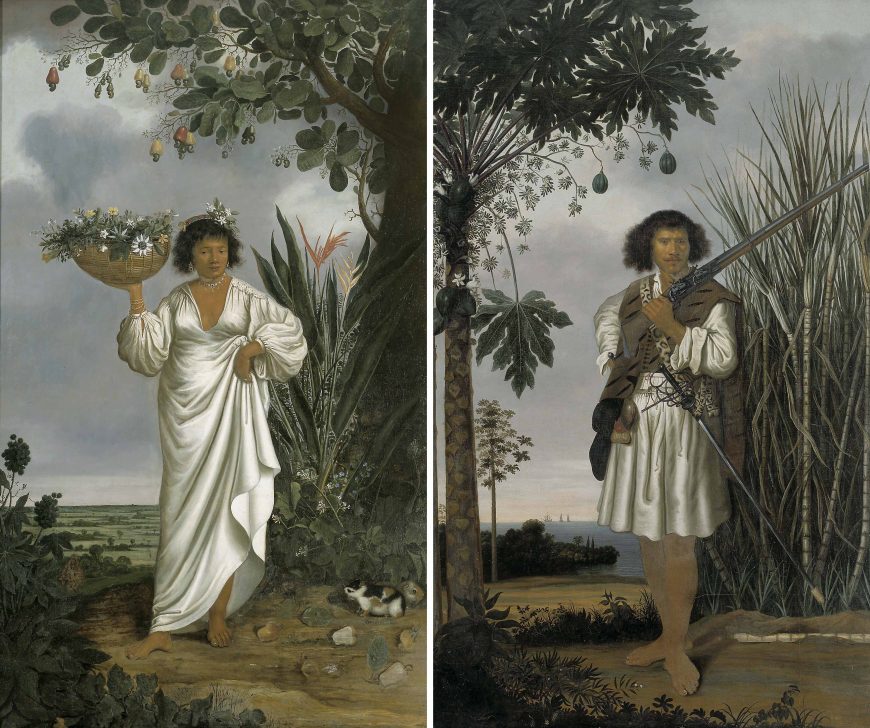
Between two worlds
The final pair of figures represents people of mixed race. The woman is a mameluca, of indigenous and white ancestry, and the man a mulatto, of black and white ancestry. The representation of the mameluca contains no references to agriculture or child-rearing. Instead, she solely provides voyeuristic pleasure to European males as she smiles cheekily at the viewer. The guinea pig reinforces her sexual availability because Europeans associated guinea pigs with rabbits, traditional symbols of fertility. To a European audience, the loose garment and flowers reference Flora, the Roman goddess of flowers and fertility who was adopted as a symbol for prostitutes and courtesans. In a place with few white women, the mameluca’s whiteness made her particularly desirable as a concubine.
In the eyes of Europeans, the so-called mulatto’s white ancestry likewise allowed him to rise above other Afro-Brazilians. He is posed in an authoritative military stance in front of a sugarcane field, the Dutch colony’s most important source of revenue. Likely tasked with protecting the fields and supervising the slaves, his appearance emphasizes his position within the social hierarchy between free and slave, European and non-European. His clothing is an imaginative mixture of European and foreign garments. While the offspring of enslaved women were born into slavery, children of white fathers were sometimes freed. Although bare feet can function as a visual symbol of enslavement, slaves were forbidden from carrying weapons—thus, the rifle and rapier suggest that he is free.
White supremacy and exploitation
Eckhout may have intended to show the relative levels of “civilization” of the various types of peoples depicted in these paintings, but scholars disagree on the order of such a hierarchy. It is clear that Eckhout viewed the represented ethnic groups to be inferior to white Europeans. The careful attention granted to skin color and physiognomy suggests that Eckhout and his patron believed Europeans possessed not only superior culture and morals, but also biology. The paintings help to convey the message that Europeans had both a right and a duty to control and acculturate foreign peoples.
The Dutch conquest of Brazil was economically motivated. These paintings accentuate the abundance and fertility of the Brazilian land, especially highlighting the lucrative sugarcane fields. The wealth generated by these endeavors, however, depended directly on the subjugation of both African and indigenous peoples. Eckhout’s portrayals of the inhabitants of Brazil and Africa as inferior to Europeans served to justify and advocate for both the enslavement of Africans and the exploitation of the Brazilian land and its inhabitants.
Notes:
1. Rebecca P. Brienen, Visions of Savage Paradise: Albert Eckhout, Court Painter in Colonial Dutch Brazil (Amsterdam: Amsterdam University Press, 2006), 124.
Additional resources:
Albert Eckhout’s paintings at the National Museum of Denmark
Research materials on Dutch Brazil at the New Holland Foundation
Church of São Francisco de Assis, Ouro Preto, Brazil
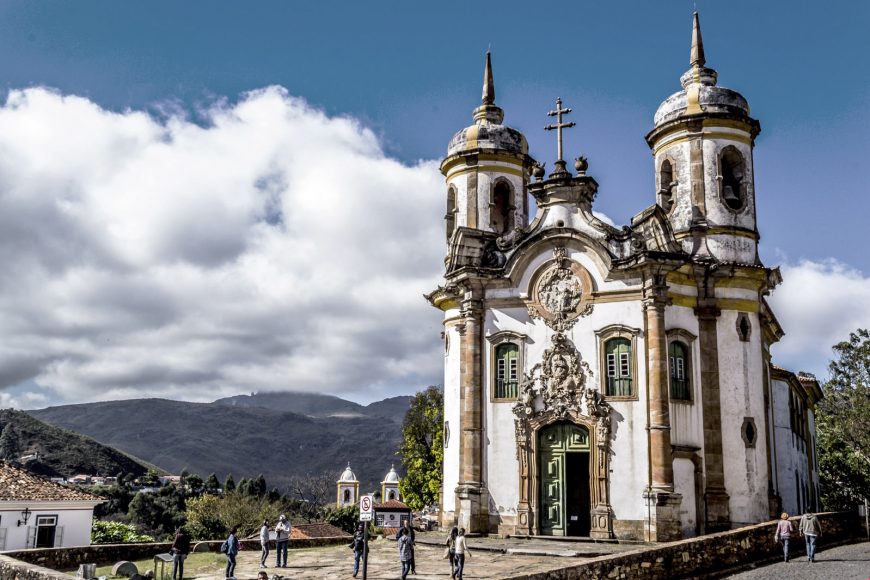
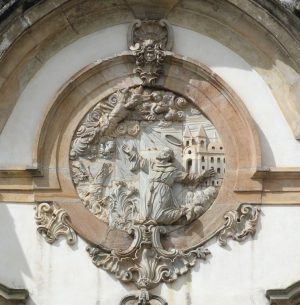
The relief sculpture contained within a roundel at the center of the façade of the church of São Francisco de Assis in Ouro Preto, Brazil, shows St. Francis receiving the stigmata as Jesus Christ appears in the clouds above. As if propelled by the force of this miraculous event, the architecture around this scene bursts outward.
The façade is filled with an elaborate arrangement of ornament. The entablature curves around the roundel, pushing into the broken pediment. The corners of the pediment (that appear like two sides of a triangle above the columns) are sharply broken and twisted outward.
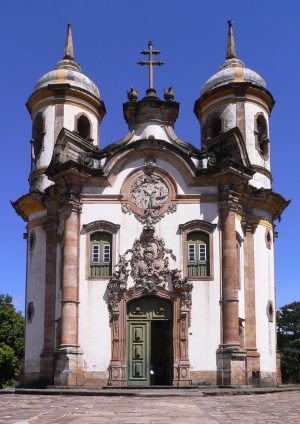
To further emphasize the forward projection of the façade, the architect has pushed back the lateral towers, and placed their pilasters and windows to make them appear as if they are angled away from the façade. This dynamic manipulation of forms creates the impression that the structure is expanding from within.
Church design in the early modern Portuguese empire generally favored simple plans and exteriors—a sharp contrast with the church of São Francisco, with its curving geometries and lively ornamentation. How did this structure, located in a remote mining town deep in the inland hills of Brazil, come to represent such an innovative approach to design?
“Rich Town of Black Gold”
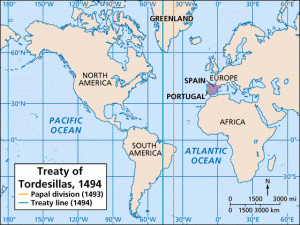
Although the Treaty of Tordesillas in 1494 intended to give Spain sovereignty over the Americas, it enabled the Portuguese to claim the easternmost portion of South America in 1500.
The Portuguese initially established settlements along the coast of Brazil to enable natural resources such as brazilwood (from which the colony received its name) and sugar to be shipped back to Portugal. In the 1690s, however, gold—and later, diamonds—were discovered in an inland region of Brazil, subsequently named Minas Gerais (“General Mines”). Minas Gerais was unique within Brazil not only because of its remote location, but also because of the legal restrictions imposed upon the area: in order to protect their mining interests, the Portuguese government banned foreigners from the area, and manufacturing and non-essential agriculture were forbidden.
The church of São Francisco is located in the heart of this gold mining region, in the bustling commercial center of Ouro Preto. The town was originally named Vila Rica de Ouro Preto, meaning “Rich Town of Black Gold” (so named because the gold deposits contained iron ore, making them appear dark in color). Although it is traditionally considered geographically and culturally isolated, many goods, including artists’ materials and tools, were transported across the hilly landscape to Ouro Preto, and the local wealth attracted artists and architects from Portugal.
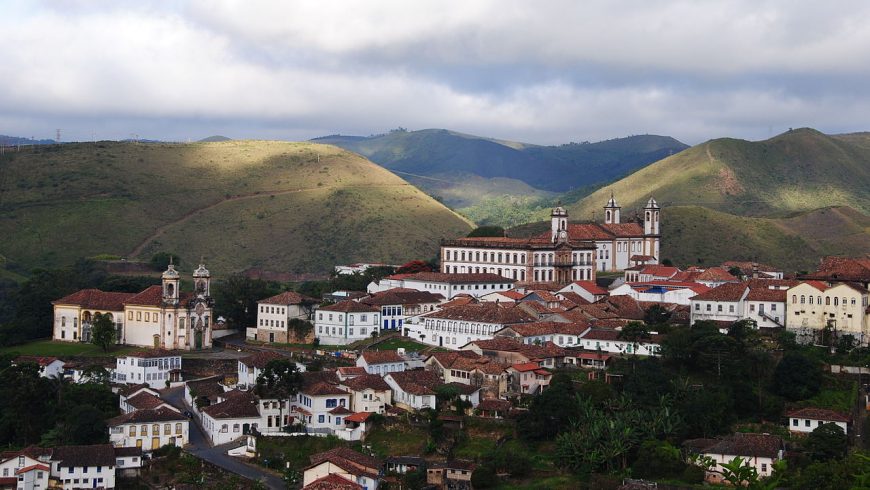
Remote yet cosmopolitan
Brazil’s gold mining region is famed for church architecture that was unique within the Portuguese empire, and the church of São Francisco is a prime example of this. The Portuguese and Brazilian artists and architects who worked on the church of São Francisco were well-versed in contemporary artistic trends from Europe. Whereas other churches in Brazil at the time tended to reflect the rectangular plans and restrained exterior ornamentation of contemporary churches in Portugal, the dynamic architecture of the church of São Francisco is reminiscent of Italian and central European, rather than Portuguese, church design. For example, the projecting central portion of the façade and broken pediment recall the church of San Domenico in Noto, Sicily.
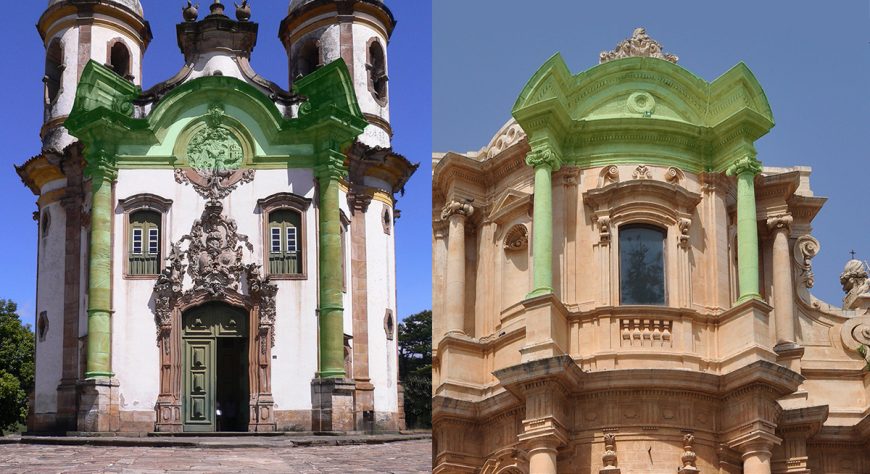
The greatest artist of colonial Brazil
In addition to the ban on foreigners, religious orders were prohibited in Brazil’s mining region. Therefore, instead of belonging to the Franciscan monastic order, the church of São Francisco de Assis belonged to a confraternity, a group of local laypeople who joined together in their devotion to Saint Francis. The confraternity members funded the project, hired artists and architects, and oversaw the design.
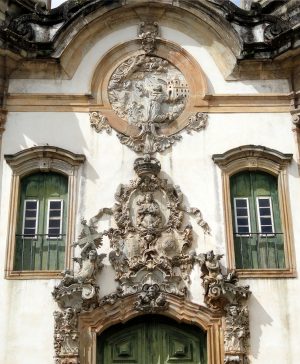
Although the confraternity of São Francisco only admitted white members, enslaved Africans constructed the building, and the design has been attributed to the sculptor Antonio Francisco Lisboa: the son of the Portuguese architect Manoel Francisco Lisboa and an enslaved black woman named Isabel. Antonio Francisco Lisboa is better known by the nickname Aleijadinho (sometimes written “O Aleijadinho”), meaning “The Little Cripple,” because he reportedly suffered from a chronic disease that left him disfigured. He is considered the greatest artist of colonial Brazil, and the church of São Francisco is among the reasons why.
While the external ornament on the more typical, conservative Portuguese churches was largely relegated to carvings on the door and window frames, the façade of São Francisco contains abundant sculptural ornament. The traditional oculus is replaced by the roundel relief of St. Francis, and the sculpture surrounding the doorway spreads upward, covering the center of the façade with rocailles, cherubs, and a depiction of the Virgin Mary.
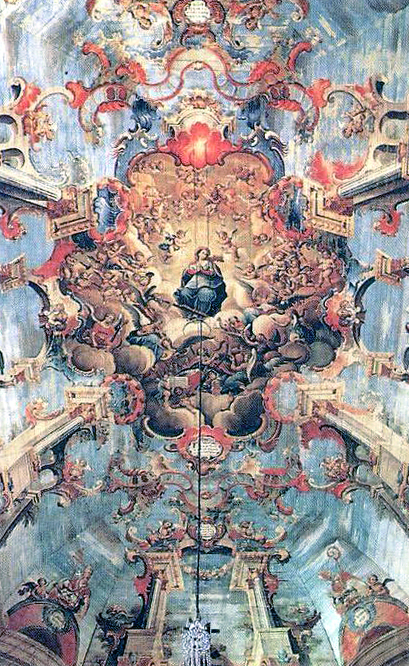
Innovation in design
Along with the projecting façade, the diagonally placed altars in the corners of the nave transform the traditional rectangular plan seen in most contemporary Portuguese churches into an elongated octagon. The interior of the church is composed of a single unified space crowned by an exuberant ceiling painting of the Virgin Mary rising to heaven, executed by the Brazilian painter Manoel da Costa Ataíde.
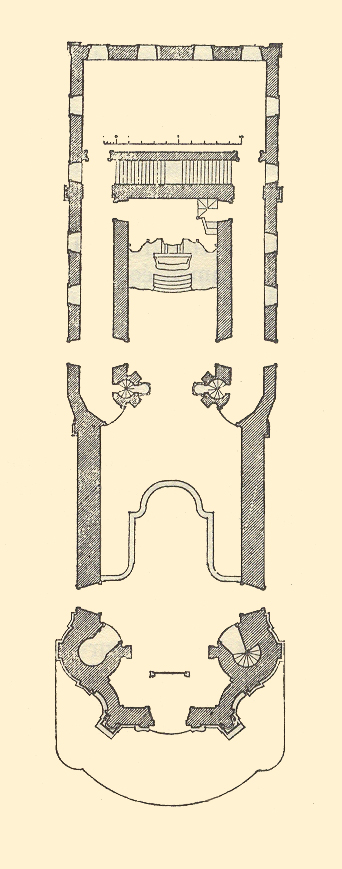
The octagonal plan and the treatment of the interior decoration as a cohesive whole echoes trends in Italian and central European church design, where elaborate ornamentation combined with architecture and sculpture to create diaphanous spaces meant to evoke a heavenly experience.
Although Lisboa definitely designed and carved much of the decorative ornament, the extent of his contribution to the architectural design remains unclear. The project was officially overseen by two Portuguese designers (the mason Domingos Moreira de Oliveira and the sculptor José Antonio de Brito). However, Lisboa was paid to inspect the finished structure, an honor usually reserved for a project’s architect. Some scholars believe that he designed the church, but that discriminatory laws against people of African descent prevented him from being formally recognized as the architect.
The members of the confraternity of St. Francis hired the region’s best artists to create an original and daring design that competed with other churches in the area. Prominently positioned at the center of town, the church of São Francisco proclaims the confraternity’s—and the region’s—wealth, taste, and religious devotion.
Additional resources:
More about Antonio Francisco Lisboa (Aleijadinho)
Virtual tour of the city of Ouro Preto that includes the church of São Francisco de Assis
Gauvin Alexander Bailey, The Spiritual Rococo: Decor and Divinity from the Salons of Paris to the Missions of Patagonia (London: Taylor and Francis, 2017).
Tim Benton, and Nicola Durbridge, “’O Aleijadinho’: Sculptor and Architect,” in Catherine King, ed., Views of Difference: Different Views of Art (New Haven: 1999), pp. 146-177.
John B. Bury, “The “Borrominesque” Churches of Colonial Brazil,” The Art Bulletin 37, no. 1 (1955), pp. 27-53.
Robert C. Smith Jr., “The Colonial Architecture of Minas Gerais in Brazil,” The Art Bulletin 21, no. 2 (1939), pp. 110-159.
Mestre Valentim, Passeio Publico, Rio de Janeiro
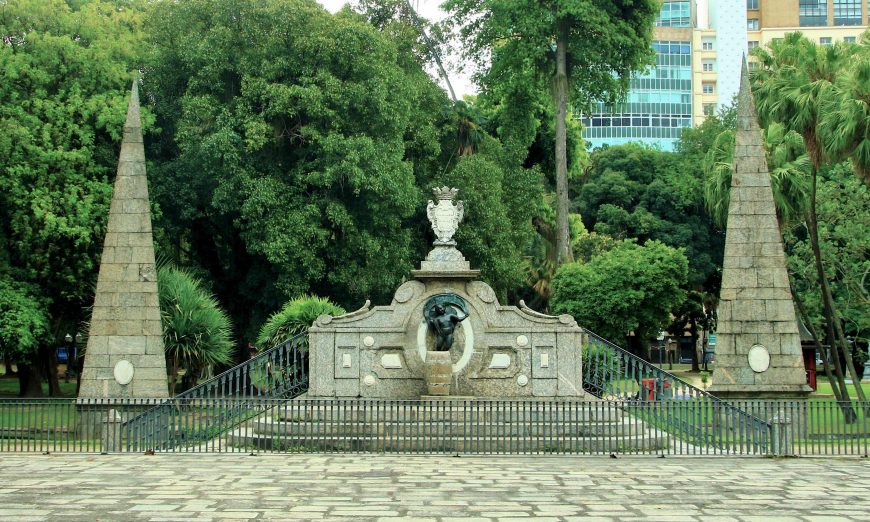
In the middle of the eighteenth century a series of epidemics ravaged the city of Rio de Janeiro, Brazil. The illness was attributed to the unsanitary air caused by human and animal waste in Lake Boqueirão. The viceroy Luis de Vasconcelos e Sousa ordered the lake to be filled in and a public park, the Passeio Publico (public promenade), to be erected in its place. The park’s purpose—to beautify the city and provide a healthy space for outdoor leisure—was suggested by the inscriptions written on two obelisks, “the longing for Rio,” and “the love of the public.”
The Passeio Publico represented several groundbreaking achievements: the first public park on Brazilian soil, some of the first large-scale bronze sculptures cast in Rio de Janeiro, and a major urban planning commission awarded to an artist of African descent.
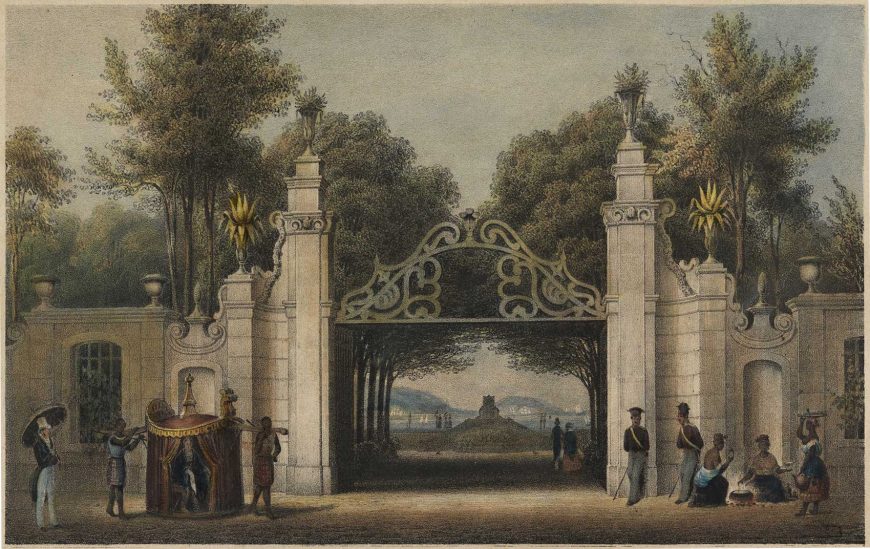
Valentim da Fonseca e Silva, better known as Mestre Valentim (Master Valentim), was born around 1745 in the diamond mining region of Brazil (Serro do Frio, Minas Gerais). His parents were Manoel da Fonseca e Silva, a wealthy Portuguese man, and Amatilde da Fonseca, a woman of African descent. The earliest known account of Valentim’s life states that the artist traveled with his family to Portugal as a baby and received an education there before returning to Brazil. While this story about his youth has not been verified with documentary evidence, Valentim arrived in Rio de Janeiro as a young man and worked there for the rest of his life. Although Valentim described himself as a carver, he was one of the viceroy’s favorite architects and received numerous important commissions.
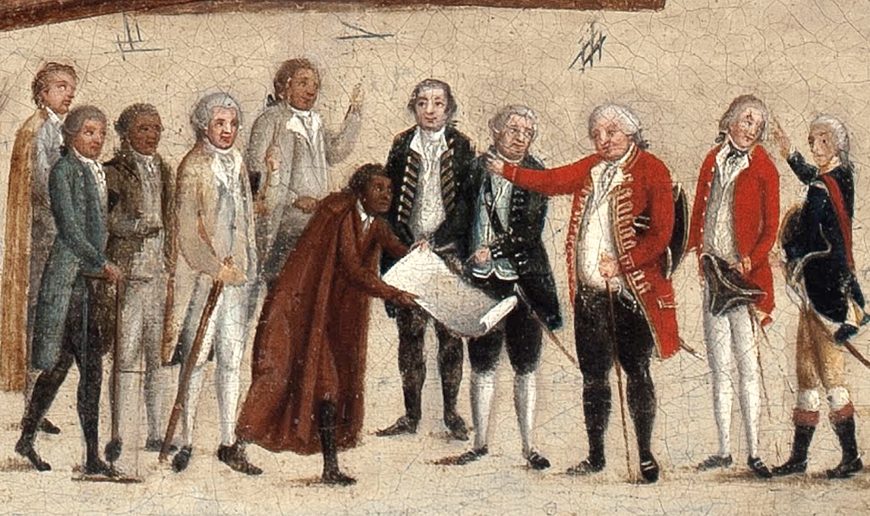
A painting commemorating the destruction of a convent portrays Mestre Valentim presenting the plans for the building’s replacement to the viceroy and other officials. At a time when portraiture was rare in Brazil, this detail was probably included because a black architect was seen as a novelty. The painting highlights Valentim’s dark skin and his humility as he bows down before the well-dressed officials.
Brazil’s first public park
Large portions of the city of Lisbon, Portugal—the capital of the empire—were destroyed by earthquake and the resulting fires in 1755, prompting a rebuilding campaign. Enlightenment ideals of producing a beautiful and hygienic city with fresh air, clean water, regular streets, and public parks guided the redesign of the city. These same ideals prompted the construction of the Passeio Publico in the colonial city Rio de Janeiro. At the same time that the Marquis of Pombal worked to revitalize infrastructure and industry throughout Portugal, the viceroy in Rio de Janeiro (the capital of Brazil) embarked on an ambitious campaign to modernize the city, leading to numerous building campaigns, increased access to clean water, and technological advancements, such as securing the tools, resources, and knowledge needed for making large bronze sculptures.
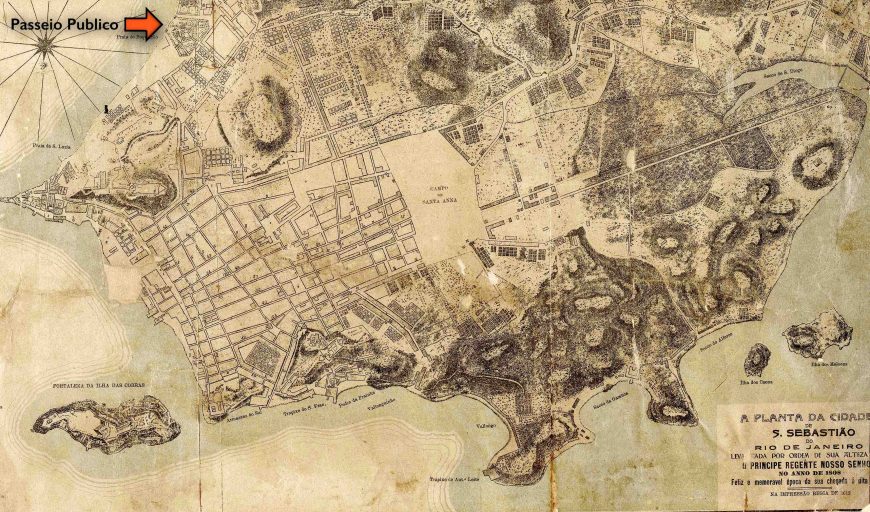
Mestre Valentim designed a trapezoidal park with the narrow end overlooking the bay, reminiscent of baroque and rococo palace gardens such as that of Queluz outside of Lisbon. Such gardens were often organized into a series of intersecting geometric shapes.
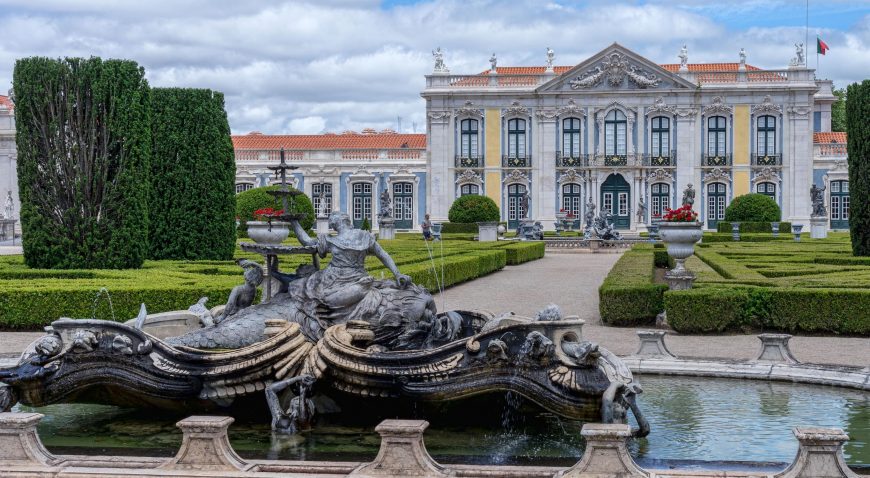
The walkways at 18th century gardens such as Queluz directed the movement of visitors between carefully arranged plots of land ornamented with plants and sculptures. Elaborate fountains formed centerpieces at the main intersections of the walkways.
Pavilions in the passeio publico
In the Passeio Publico, two square pavilions originally flanked the terrace overlooking the water. Sadly, today, little of Mestre Valentim’s design remains. The park was altered on numerous occasions throughout the nineteenth and twentieth centuries. Few of Valentim’s sculptures remain in their original locations, the pavilions were first modified into octagonal structures and then eliminated altogether, and the geometric arrangement of the walkways and plants has been entirely replaced with undulating, irregular forms.
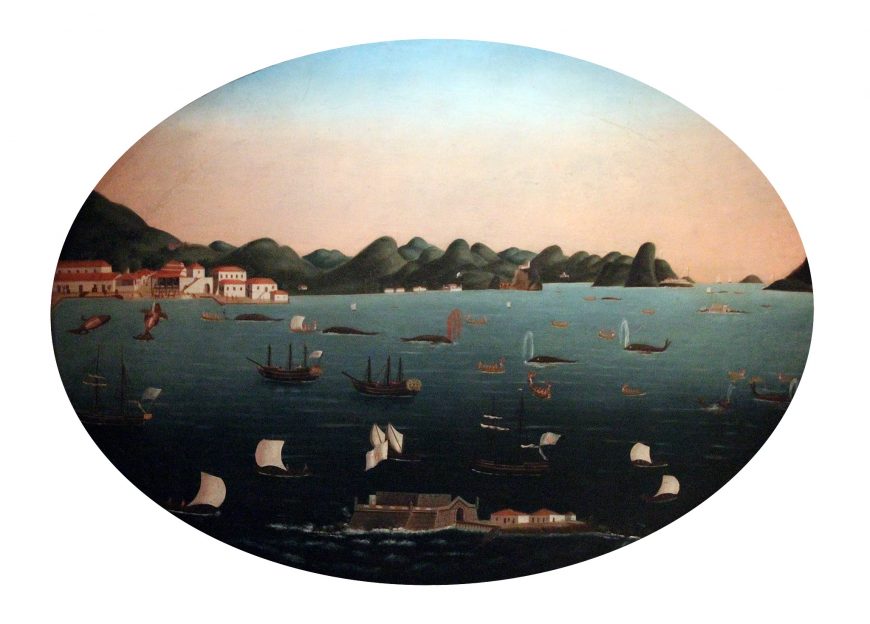
The pavilions contained whimsical displays celebrating the natural resources of Brazil and Rio de Janeiro. The interior of one pavilion was covered in ornaments made of shell, including sculptures of local fish. This pavilion housed Leandro Joaquim’s series of paintings of the Rio de Janeiro harbor (now in the Museu Histórico Nacional and Museu Nacional das Belas Artes). These oval paintings highlighted the viceroy’s improvements to the city, such as the aqueduct and a large plaza, and the beneficial industries that were conducted on the waterfront, such as fishing and transoceanic trade.
The other pavilion was decorated with sculptures of local birds made of feathers. This pavilion contained a series of paintings (now lost) depicting what were considered Brazil’s most important industries: gold, diamonds, sugar, and other agricultural products. The celebration of Brazil’s natural resources continued in the sculptures that decorated the park, such as the intertwined caimans featured on one of the fountains. While European travelers typically viewed tropical plants and animals as symbols of strange and backward lands, the Passeio Publico celebrated Rio de Janeiro as both tropical and industrious.
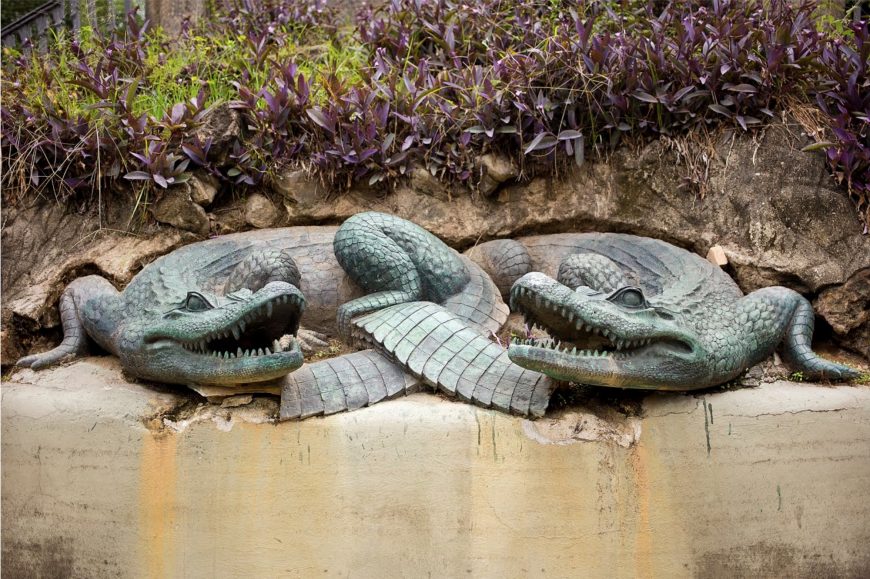
The passeio publico provided visitors with a venue for various forms of entertainment such as operas, concerts, plays, and festivals honoring the Portuguese royal family. Spending leisure time outdoors was viewed as essential to the physical and mental well-being of the city’s wealthy inhabitants.
One of the park’s fountains highlights the importance of pleasure with a sculpture of a nude boy holding a placard that states “I am useful even while playing.” Valentim injected playfulness into his otherwise orderly and controlled environment with the juxtaposition of the natural and the man-made. For example, he placed a papaya tree next to a painted bronze sculpture of the same plant. The shell and feather interior decorations of the pavilions also allowed visitors to delight in comparing the natural and the artificial.
Additional resources:
John Barrow, A Voyage to Cochinchina, in the Years 1792 and 1793 (London: T. Cadell and W. Davies, 1806), 81-83.
George Staunton, An Authentic Account of an Embassy from the King of Great Britain to the Emperor of China (London: C. Nicol, 1797), pp. 162-64.
Edward J. Sullivan, “The Black Hand: Notes on the African Presence in the Visual Arts of Brazil and the Caribbean,” in Joseph J. Rishel and Suzanne Stratton-Pruitt eds., The Arts of Latin America 1492-1820 (Philadelphia: Philadelphia Museum of Art, 2006), pp. 39-55.
Sanctuary of Bom Jesus de Matosinhos of Congonhas do Campo, 1757-1872
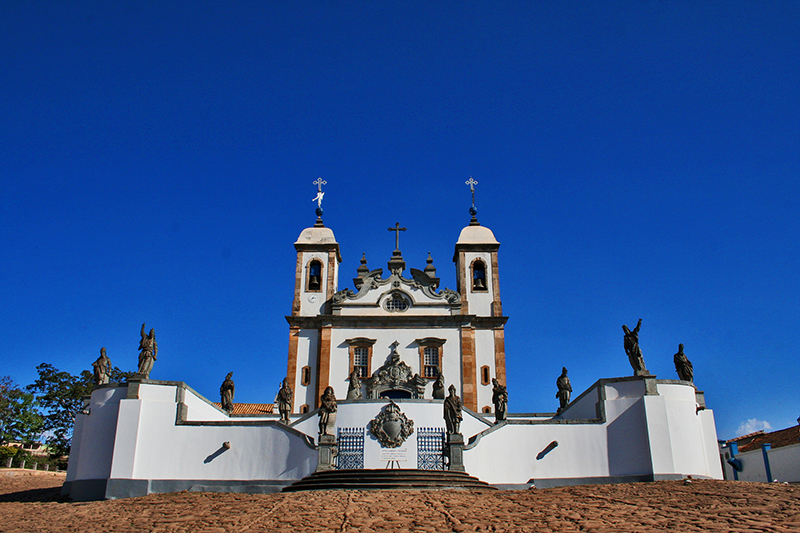
Traveling by horse, mule, or on foot through the hilly countryside of Brazil, pilgrims experienced the suffering and triumph of Jesus Christ upon arriving at the sanctuary of Bom Jesus de Matosinhos in Congonhas do Campo. The sanctuary is situated on a steep hill and contains six small chapels that lead up to a church. Scenes of the life and death of Christ, recreated in sculptures and paintings, greet exhausted pilgrims. This elaborate complex of architecture, sculpture, and painting was intended to provoke an intense emotional reaction.
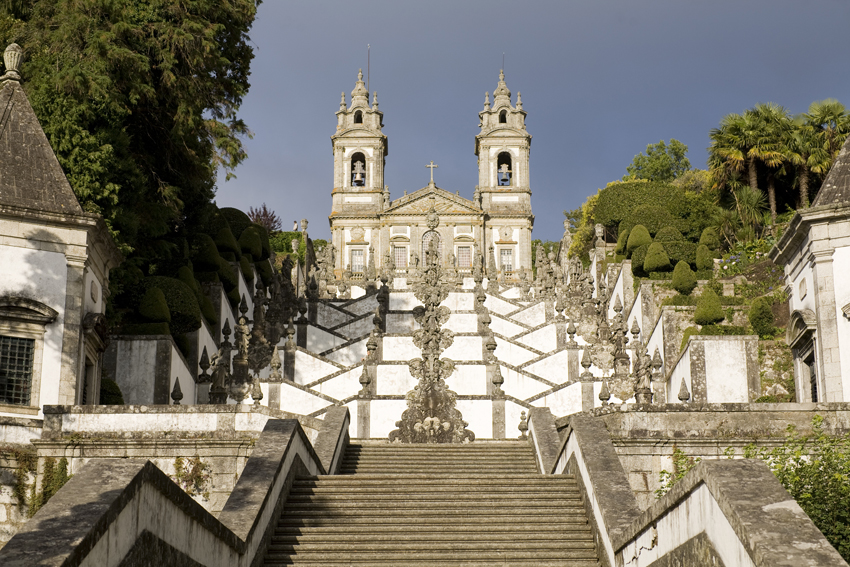
The sanctuary’s design was inspired by the site of Bom Jesus do Monte in Braga, Portugal. According Braga was an old, established city, in the 18th century, Congonhas do Campo was a small, remote village that had emerged only recently as a result of a gold rush that brought tens of thousands of immigrants to the area. The sanctuary is a testament to the religiosity of the inhabitants of the region and remains a popular pilgrimage site to this day. Although a city has formed around the sanctuary and pilgrims can now reach the site by car, visiting the sanctuary remains an impressive experience. Next to the church a room displays hundreds of ex-votos, or tokens of thanks gifted to the sanctuary in response to answered prayers.
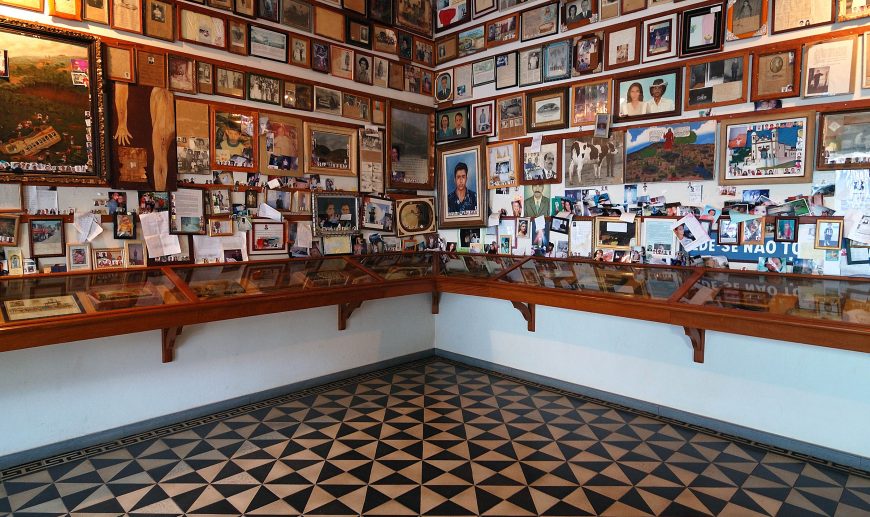

The miraculous reputation
The sanctuary is dedicated to Bom Jesus de Matosinhos, an invocation of Jesus associated with a Polychrome [/ simple_tooltip] wood sculpture on display in the town of Matosinhos, Portugal (see left). This sculpture was believed to have been created by Nicodemus, a man who knew Jesus in his lifetime. The sculpture was said to have been a perfect likeness of Jesus and the first depiction of him to arrive in Portugal.
The sanctuary in Congonhas was commissioned by a man named Feliciano Mendes. In 1757 he became gravely ill, prayed to Bom Jesus de Matosinhos, and was miraculously healed. In return, Mendes promised to build a sanctuary. That same year, he began to collect donations, received official approval for his project, and oversaw construction of the church. By the time Mendes died in 1765, the sanctuary offered regular religious services. The centerpiece of the site was a copy of the Bom Jesus do Matosinhos that had been imported from Portugal. The imported sculpture was initially displayed on the cross on the main altar, but was moved to the sarcophagus at the base of the altar when a second sculpture of the crucified Christ was gifted to the sanctuary in 1787.
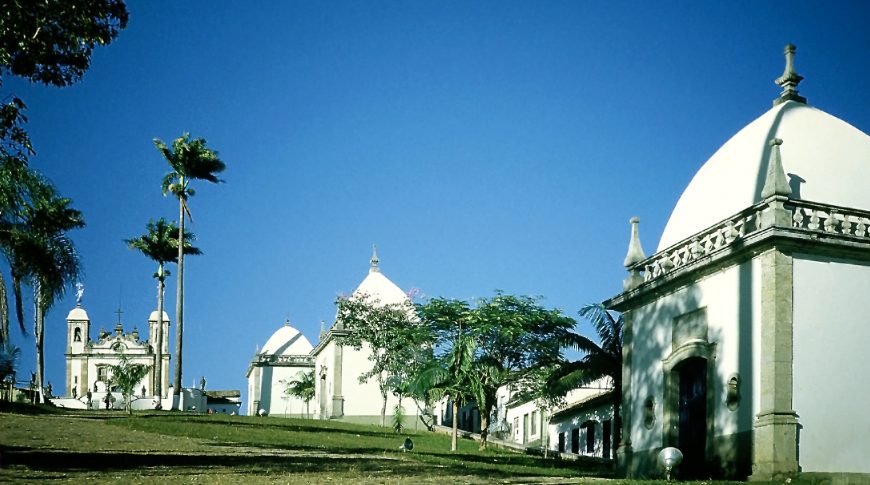
Like its counterpart in Portugal, the sculpture of Bom Jesus at Congonhas do Campo is considered an especially powerful vehicle of intercession. Prayers said in front of the sculpture are thought to have a great chance of being answered. As a result, the sanctuary at Congonhas do Campo became a major pilgrimage site with people traveling from afar to ask Jesus for assistance. After Feliciano Mendes’ death, devotees continued to donate funds for the creation of the church, atrium, chapels, and many of the sculptures and paintings that were produced over the course of 75 years. Some of the region’s most celebrated artists worked on the project including the architect Francisco de Lima Cerqueira, the sculptor Antonio Francisco Lisboa (better known as Aleijadinho), and the painter Manoel da Costa Athaide, among many others.
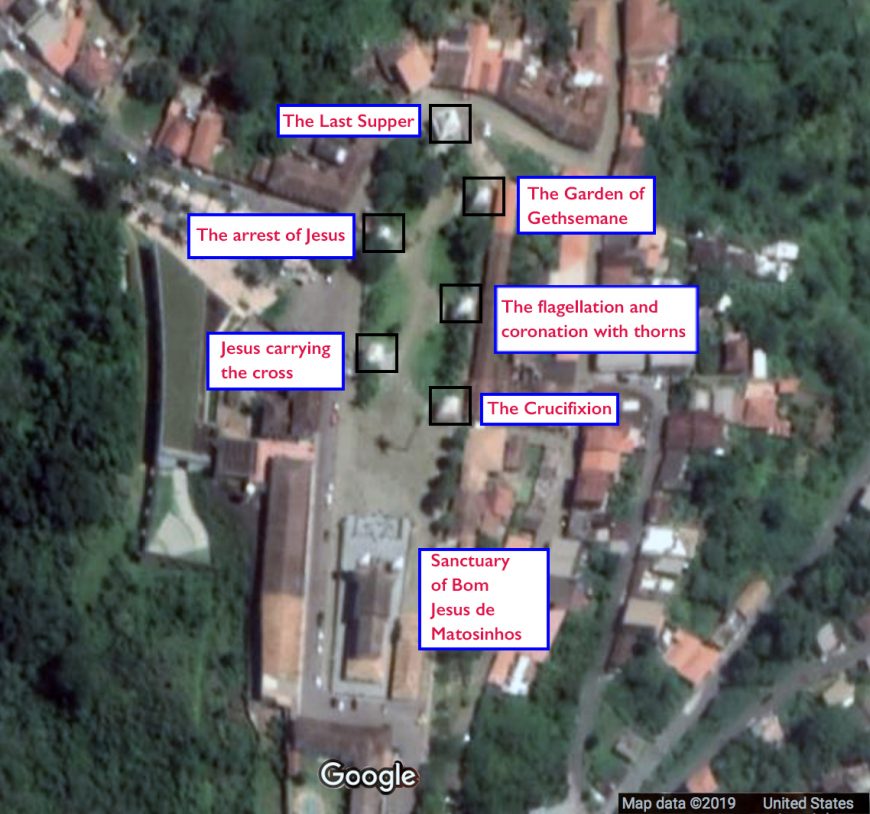
A rich narrative
Pilgrims first encounter a series of six chapels that zigzag up the hill. Inside are sculptural groups representing seven of the stations of the cross, important moments at the end of Jesus’ life from the last supper to the crucifixion. The tradition of creating chapels containing depictions of the stations of the cross began in Italy in the fifteenth century. These allowed worshippers to walk from one event to the next and to reenact the portrayed scenes without needing to travel to Jerusalem where the events had originally occurred.
At Congonhas do Campo, Antonio Francisco Lisboa and his workshop created the sixty-four painted wood sculptures that make up the seven scenes and Manoel da Costa Athaide painted the sculptures and the illusionistic interiors found in some of the chapels. Instead of entering the chapels, visitors peer through windows to witness the events recreated inside. The figures are portrayed with exaggerated poses and facial expressions to create a sense of drama and to elicit an emotional response in the viewer.
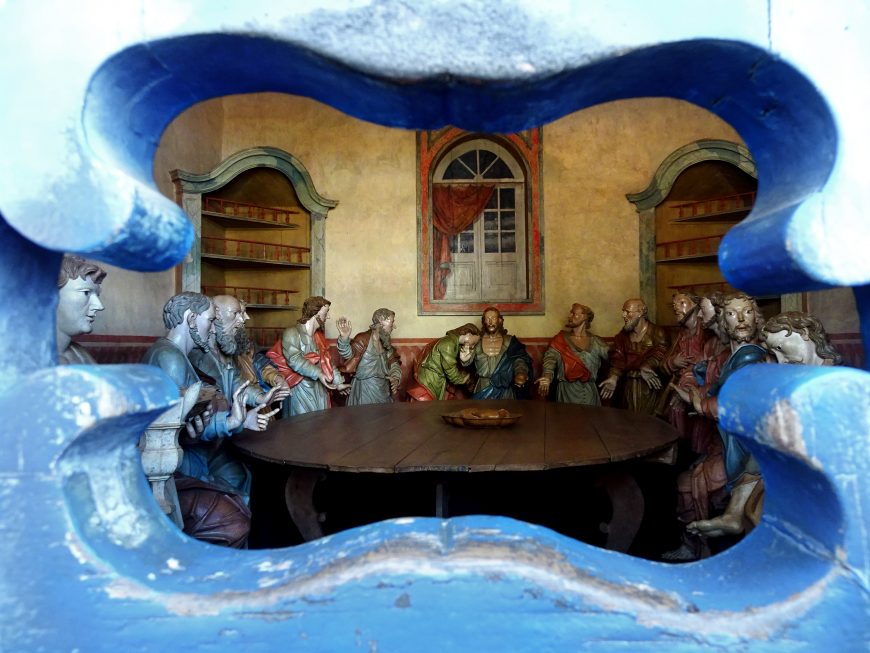
After climbing up the hill, visitors reach an elaborate curving staircase that leads to the church. On top of the banisters are twelve nearly life-size stone sculptures of Old Testament prophets. These prophets foretold the coming of Jesus, and each sculpted figure holds an unrolled scroll with their prophecy inscribed in Latin. Antonio Francisco Lisboa also designed these sculptures. Their proportions and forms are distorted to provide a powerful effect when viewed from below.
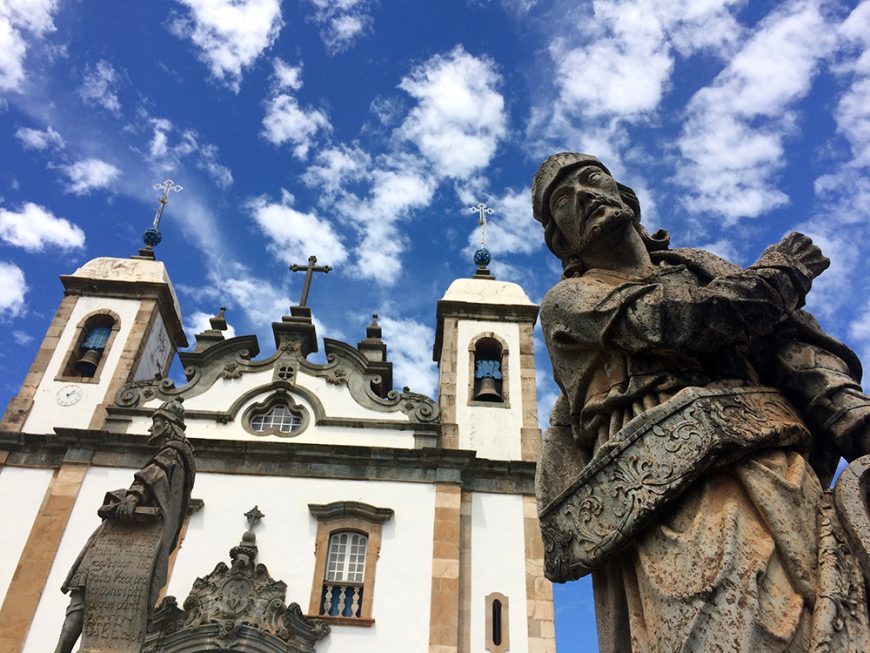
Lastly, pilgrims enter the church. Paintings above the choir and along the edges of the ceiling depict Old Testament scenes that parallel events in Jesus’ life. Paintings on canvas hang on the walls and portray scenes from the life of Mary before she gave birth and scenes of the life of Jesus, all arranged sequentially with the earliest stories near the entrance and the later scenes near the main altar. These Old and New Testament images lead up to the defining moments on the main altar: the crucifixion and death of Jesus. In addition to the sculptures of the crucifixion and the sarcophagus, the ceiling painting above the altar depicts Jesus being placed in the tomb, again surrounded by Old Testament scenes.
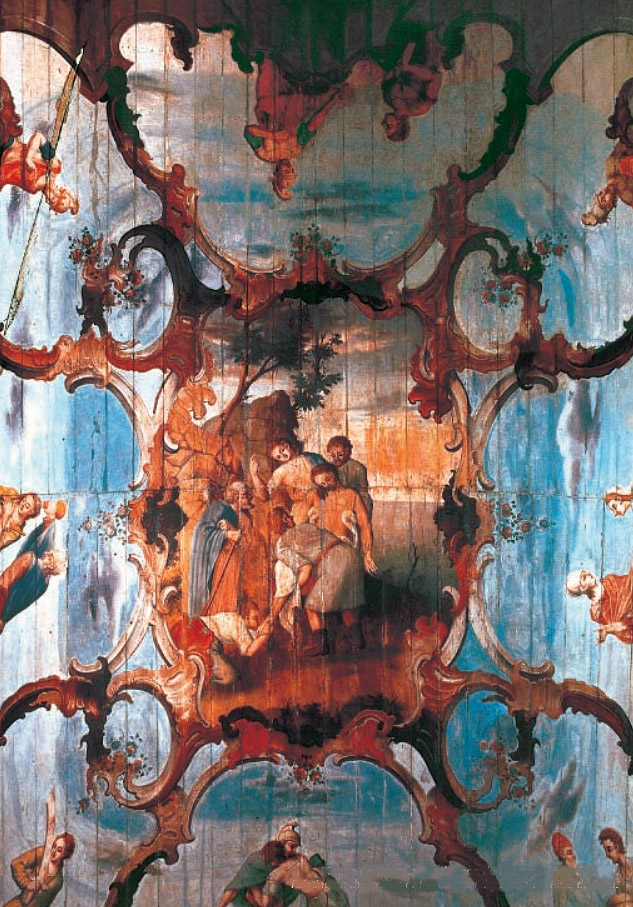
While this focus on suffering and death may seem grim, Jesus is believed to have sacrificed himself in order to free his followers from the sin committed by Adam and Eve (depicted above the choir, opposite the main altar) and enable them to gain salvation. The center of the ceiling in the nave highlights the culmination of Jesus’ suffering with a depiction of the Trinity: God the Father, Jesus holding the cross, and the Holy Spirit represented as a dove (see “Virtual Tour” in additional resources below). The initial plan for the sanctuary emphasized Christ’s resurrection with additional chapels behind the church; however, these were never built.
Additional Resources:
George Kubler, “Sacred Mountains in Europe and America,” in Christianity and the Renaissance: Image and Religious Imagination in the Quattrocento , eds. T. Verdon and J. Henderson (Syracuse, 1990), p. 413 – 41.
Myriam Andrade Ribeiro de Oliveira, O Aleijadinho and the Santuario de congonhas: Aleijadinho and the Congonhas Sanctuary (Brasília: IPHAN, 2006) PDF
South America after independence
Artists in Latin America expressed both a sense of pride in indigenous traditions and an appreciation for European ideas of liberty.
c. 1821 - 1900
Independence from Spanish rule in South America
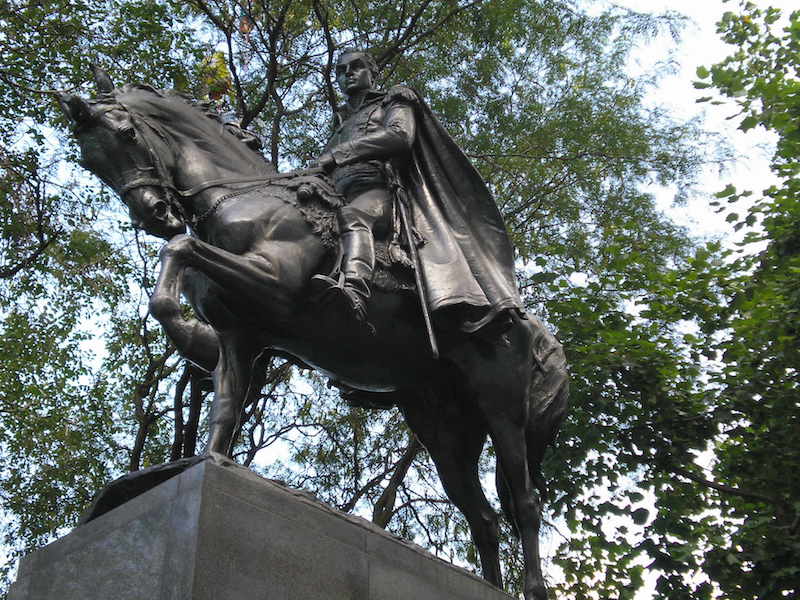
The roots of Independence
The extensive Spanish colonies in North, Central and South America (which included half of South America, present-day Mexico, Florida, islands in the Caribbean and the southwestern United States) declared independence from Spanish rule in the early nineteenth century and by the turn of the twentieth century, the hundreds of years of the Spanish colonial era had come to a close. How did this happen? The Enlightenment ideals of democracy—equality under the law, separation of church and state, individual liberty—encouraged colonial independence movements in the late nineteenth and early twentieth century. The Enlightenment began in eighteenth-century Europe as a philosophical movement that took science, reason, and inquiry as its guiding principles in order to challenge traditions and reform society. The results of these changes in thought are reflected in both the American and French revolutions—where a monarchical form of government (where the King ruled by divine right) was replaced with a Republic empowered by the people.
In Spain, the occupation by Napoleon during the Peninsular War (1808-1814) also inspired liberators to fight against foreign invaders. The examples of rebellion in the British Colonies, France, and Spain empowered Latin American revolutionaries who speculated on whether independence was a realistic and viable alternative to colonial rule. The term “Latin America” originated in the nineteenth century, when Argentinean jurist Carlos Calvo and French engineer Michel Chevalier, in reference to the Napoleonic invasion of Mexico in 1862, used the term “Latin,” referring to those whose national language—like Spanish—was derived from Latin, to denote difference from the “Anglo-Saxon” English-speaking people of North America.
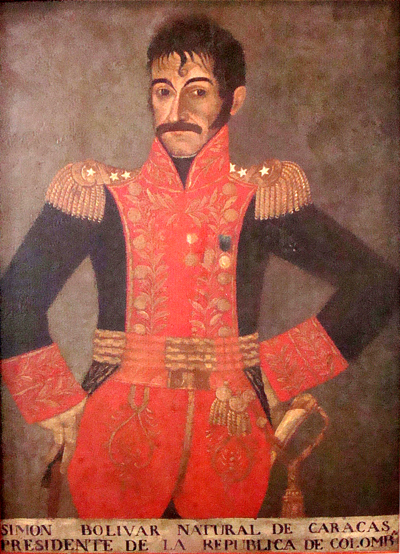
It was largely the creoles who instigated the fight for liberation. Creoles remained connected to Europe through their ancestry and since they were often educated abroad, these ideas of self-determination held great appeal for them. Peninsulares on the other hand were more directly tied to Spain in ancestry and allegiance. In 1793, the Colombian creole Antonio Nariño, who would later serve as military general in Colombia’s struggle for independence, printed a translation of the French Declaration of the Rights of Man and of the Citizen, demonstrating the bilingual and bicultural aspect of Latin American independence. Translations of speeches made by the founding fathers of the United States, including Thomas Jefferson and John Adams, also circulated in Latin America.
Not all creoles however, believed in independence and democracy—in fact, there existed an opposition of creole royalists who supported the Spanish Crown and allied themselves with the Peninsulares. Creole patriots (as opposed to the royalists) were attracted to the idea of independence and thought of themselves as Latin Americans, not as Spaniards. Despite having been born and raised in a Spanish viceroyalty to Spanish parents, they were culturally connected to Latin America. Situated at the interface of both identities, creole patriots considered themselves descendants of, but different from, the Spanish.
Simón Bolívar
In 1819, Simón Bolívar (above) articulated a concept of a Latin American identity that was racially unique, stating that “our people are nothing like Europeans or North Americans; indeed, we are more a mixture of Africa and America than we are children of Europe….It is impossible to say with any certainty to which human race we belong.”1 With this newfound sense of Latin American identity, creole revolutionaries approached independence from the standpoint of the Enlightenment, but with an added cultural dimension informed by their local experiences.

The first two, and most notable, countries in the Americas to gain independence were the United States (1776), led by General George Washington, and Haiti (1804), led by Toussaint L’Ouverture (left). Other Latin American countries, with the exception of Cuba and Puerto Rico, also embarked on their struggles for independence in the early nineteenth century—Chile and Mexico, for example, began in 1810, though their autonomy was not secured until later: Chile in 1818 and Mexico in 1821. Since territories were freed in sections with the ultimate goal of liberating an entire viceroyalty, the fight for independence came slowly and in stages.
In the northern part of South America, Simón Bolívar initiated his fight for independence by liberating the countries that formed part of the Viceroyalty of New Granada. On August 30, 1821, Gran Colombia, a conglomerate of recently freed countries formerly part of the Viceroyalty of New Granada (including modern-day Colombia and Venezuela), was established at the Congress of Cúcuta (see map below). At this same congress, Bolívar was elected president.
Following the liberation of Ecuador in 1822, and of Panama in 1821, Gran Colombia grew with the inclusion of both these countries. In his attempts to liberate as much of Latin America as possible, Bolívar traveled further south and freed Bolivia in 1825—a country whose name pays homage to its liberator.
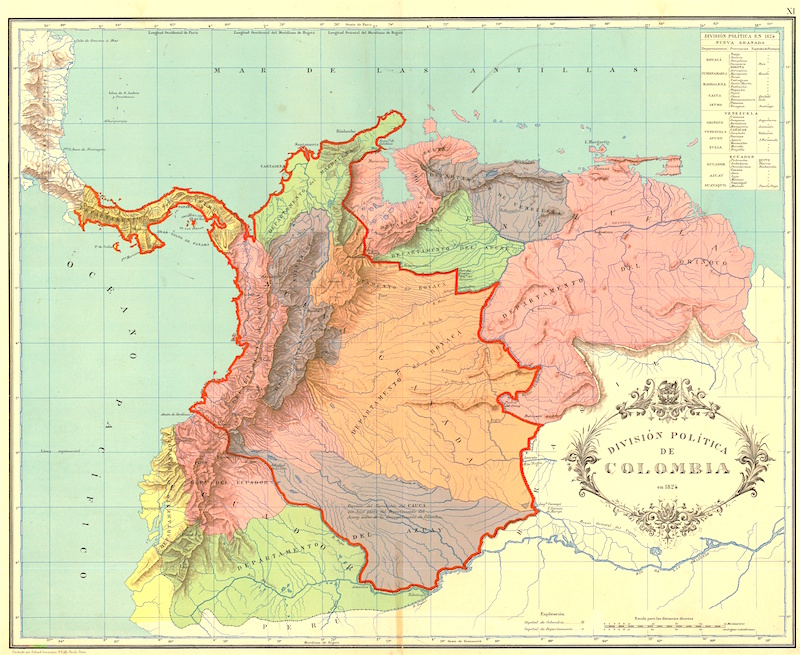
Heroes, Martyrs, and Liberators
Despite economic volatility and political upheaval, there was a desire among nationals for artists to document Latin America’s autonomy and in the process create a new Latin American iconography. Portraits of liberators, allegorical depictions of independence, and representations of important battles comprised the artistic production of the early nineteenth century. Tied to the desire to establish a national identity, portraiture and history painting were in high demand—the former documented the likenesses of revolutionary figures, while the latter recorded the major battles and landmark events of independence. While these genres existed before independence, their popularity significantly increased in the early nineteenth century.
With the exception of Mexico, Cuba, and Brazil, there existed no government-sponsored art school or established artistic communities in early post-independence Latin America. As a result, artists were either trained within small art studios, or by working artists, or in many cases were not formally trained at all—which helps to explain the diversity of styles in early nineteenth century painting. Often neglected or even wrongfully categorized, the early nineteenth century is a time of transformation when both artists and viewers were adapting to a changing society, articulating a sense of national identity, and in the process, creating a new artistic tradition.
Portraits
El Libertador Simón Bolívar was born in 1783 in Caracas, Venezuela to an aristocratic family. He was tutored by Simón Rodríguez, who introduced Bolívar to the work of Enlightenment philosopher Jean-Jacques Rousseau—specifically his ideas on the origins of inequality. Bolívar’s privileged background also permitted him to travel abroad, and in 1804 he met the French Emperor Napoleon Bonaparte and the Prussian naturalist, and explorer, Alexander von Humboldt who had travelled extensively in Latin America and ignited Bolívar’s patriotism.
Bolívar posed for Colombian painter Pedro José Figueroa, a descendant of a colonial family of portraitists and miniature artists. In Simón Bolívar: The Liberator of Colombia (above), Figueroa emphasizes Bolívar’s military triumph through the three medals that decorate his uniform: the Order of the Liberators of Venezuela, the Cross of Boyacá and the Liberators of Cundinamarca. In another portrait by Figueroa (below), The Liberator is depicted in military uniform with large gold epaulettes, a sword dangling from the waist, and a prominent belt with his initials “S.B.” imprinted on the buckle.
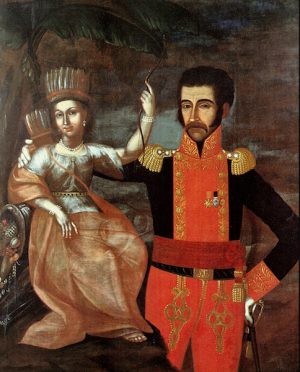
In both portraits by Figueroa, Bolívar appears almost entirely frontal, his posture stiff and anatomy awkward—a colonial aesthetic that the artist carries over into the nineteenth century. Privileging textures, color, and clothing, these paintings stress the historical or social importance of the sitter. The use of text within a portrait—another hallmark of colonial painting—appears in the two Figueroa portraits of Bolívar, as well as in Portrait of Bolívar in Bogotá by José Gil de Castro (below). In each of these portraits, the use of text helps to reinforce Bolívar’s heroism, stating yet again, and this time in written form, that he is indeed El Libertador. While military dress seems to be a consistent feature in the portraiture of Bolívar, his facial features and skin tone change according to artist. Despite the fact that Bolívar was a creole, Figueroa calls attention to his uniquely Latin American character by depicting him with darker skin—a reference to the racial mixing that characterized Latin America after colonization.
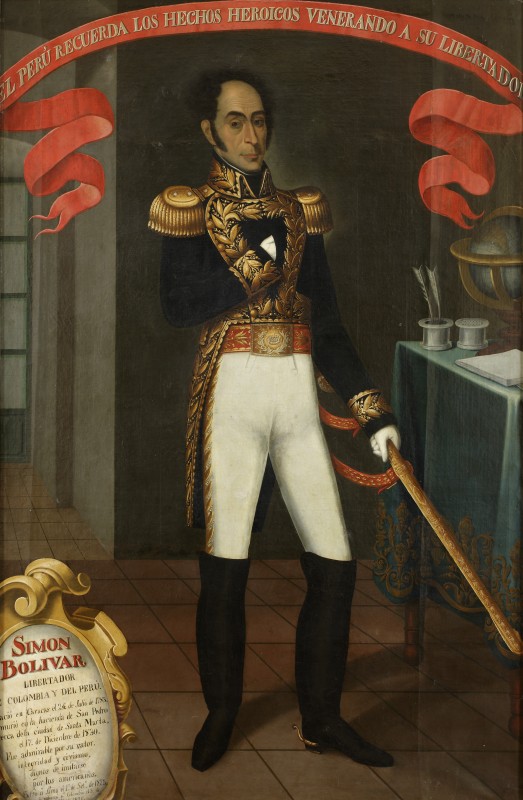
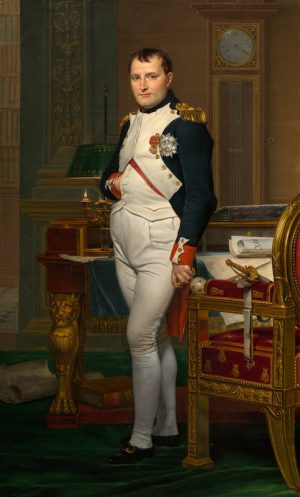
In contrast to Figueroa, Gil de Castro presents Bolívar in a full-length portrait, providing a view of both The Liberator and his surroundings. The format and composition of the portrait, as well as the pose, recall The Emperor Napoleon in His Study at the Tuileries by the French artist Jacques-Louis David (left). The interior view of both portraits provide further information about the personalities of these generals. In the case of Napoleon, for example, David includes a copy of Plutarch’s Lives on the floor, in an attempt to position Napoleon within an ancient lineage. In Gil de Castro’s portrait of Bolívar, the globe placed prominently in the background announces Bolívar’s worldliness and regional ambitions, as reflected in his liberation of multiple Latin American countries.
The military attire and heroic pose of Bolívar, shown with one hand tucked inside his jacket and his body positioned at an angle, recall the portrait of Napoleon. Though both portraits represent interiors—far from any battle—Bolívar and Napoleon proudly wear their military uniforms. The military heroism of Bolívar is further accentuated by the red banner of text at the top, which reads “Peru recalls the heroic deeds revered to its Liberator.” Painted in 1830, the year of Bolívar’s death, Gil de Castro depicts an aging yet noble Bolívar, quite different from the young liberator seen in Figueroa’s earlier portrait (top of page). The strong similarities between Portrait of Bolívar in Bogotá and The Emperor Napoleon in His Study at the Tuileries, as well as with other full-length portraits of military generals, suggest that even after independence Latin American artists continued to look to Europe for artistic models.
History Painting
While portraiture could capture the personality and physical features of a hero, its potential to convey narrative was limited. History painting solved this problem, allowing artists to record the pivotal battles or moments in the wars of independence. Additionally, and perhaps more importantly, history painting was often imbued with moral lessons about heroism and patriotism. As a result, in European art it was considered the most elevated genre of painting—above still life, landscape, and portraiture.
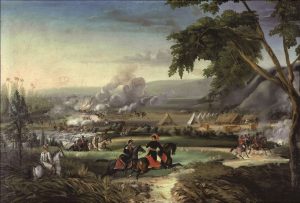
Historical subjects were also painted by some of the same artists who created portraits of the heroes of Latin American independence. This was the case with the Colombian creole painter José María Espinosa, a largely self-taught artist who specialized in miniature portraits, but who had also served in General Nariño’s Campaign of the South. Painted from memory but based on first-hand experience, Espinosa memorialized the battle of Palo River. Probably due to his lack of experience with this new genre, Espinosa organized his composition as if it were a landscape. Focusing on the topography and vegetation of Colombia rather than on particular military heroes and pivotal moments, Espinosa’s Battle of Palo River (above) is better understood as a landscape view rather than a representation of the particulars of an historical event. His landscapist approach is also reflected in his handling of the composition, in which he delineates foreground, middle ground, and background, creating an illusionistic sense of deep space. In the foreground, the ground closest to the viewer, two military soldiers energetically ride on horseback, while in the middle ground the battle intensifies near the river, all culminating in a peaceful sunset. The cropped tree positioned at right frames the event, which unfolds in various stages culminating in the background.
The end of Gran Colombia
Despite the ambition of Gran Colombia, it remained politically complex, and worsened when Bolívar proclaimed himself dictator in 1828, a move he justified by pointing to insurrections. He became increasingly unpopular and that same year survived an assassination attempt. After 1828, Bolívar retreated to Santa Marta, Colombia where he died in 1830 while awaiting voluntary exile in Europe. Despite his attempts to create unity, and with the wars of independence now over, Latin American countries no longer saw a reason for partnership. Gran Colombia dissolved in 1830, and in the ensuing decades the countries of Colombia, Venezuela, Ecuador and Panama, as we know them today, were established.
1As quoted in Marie Arana, Bolivar: American Liberator (Simon and Schuster, 2013), p. 223.
Additional resources:
Vistas: Visual Culture in Spanish America, 1520-1620 (Fordham University)
Art of the Spanish Americas on The Metropolitan Museum of Art’s Heilbrunn Timeline of Art History
Early Scientific Exploration in Latin America
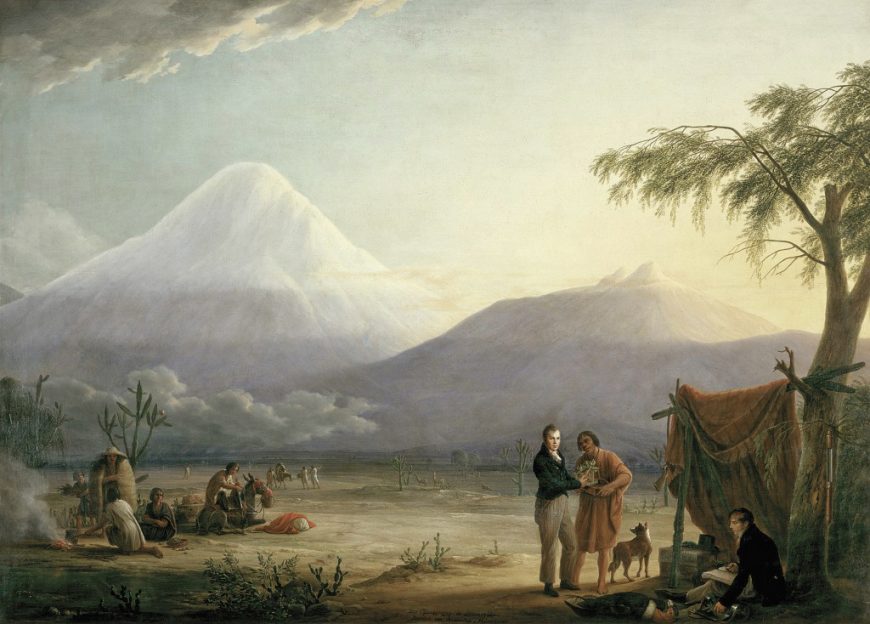
The eighteenth and nineteenth centuries saw a growth in the inland exploration of Latin America. The desire of travelers, mainly European scientists, artists, and writers, was not to settle new frontiers. Many of these regions were colonized, or, in some cases, had even become independent from European imperial powers. Rather, the goal of these explorers was to understand the area’s botany, topography, people, and traditions. The knowledge they acquired came mainly from first-hand experience, in keeping with the Enlightenment idea of empiricism, which valued the concrete and measurable.
Disseminating knowledge
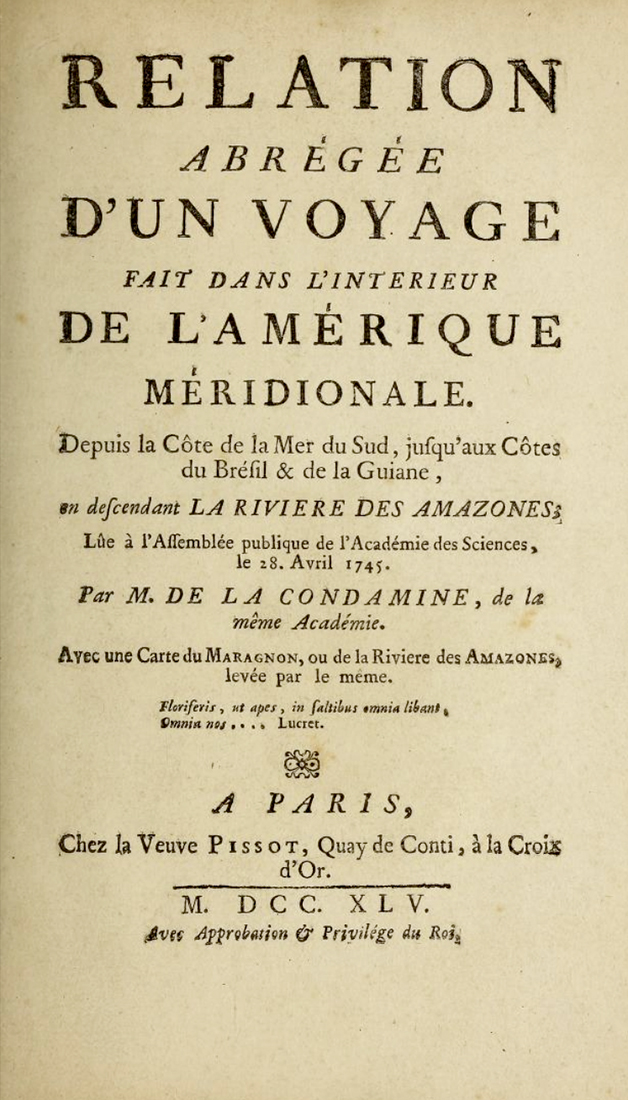
The distribution of these observations through various media (including books, prints, photographs, and watercolors) had a significant effect on how Latin America was conceptualized both locally and internationally. Travel books, in particular, catered to a foreign readership that could only dream of visiting far away places. For example, in the early eighteenth century, French naturalists, geographers, and engineers on the La Condamine Expedition explored the northern parts of South America—particularly Ecuador—with the goal of measuring the arc of the equatorial meridian. La Condamine’s publications in Europe helped spur interest in exploration.
The Spanish priest and botanist José Celestino Mutis was also one of the earliest researchers to contribute to the scientific documentation of Latin America, in this case through the Royal Botanical Expedition to New Granada, which began in 1783. At the turn of the nineteenth century, Mutis traveled extensively, documenting with extreme accuracy the flora of Colombia, among them the Mutisia Clematis, commonly known as clematis and named after the explorer himself. Botanical watercolors of these finds were valued first and foremost for their scientific accuracy, but their elaborate composition and vibrant use of color also demonstrate a concern for artistic technique and aesthetics.
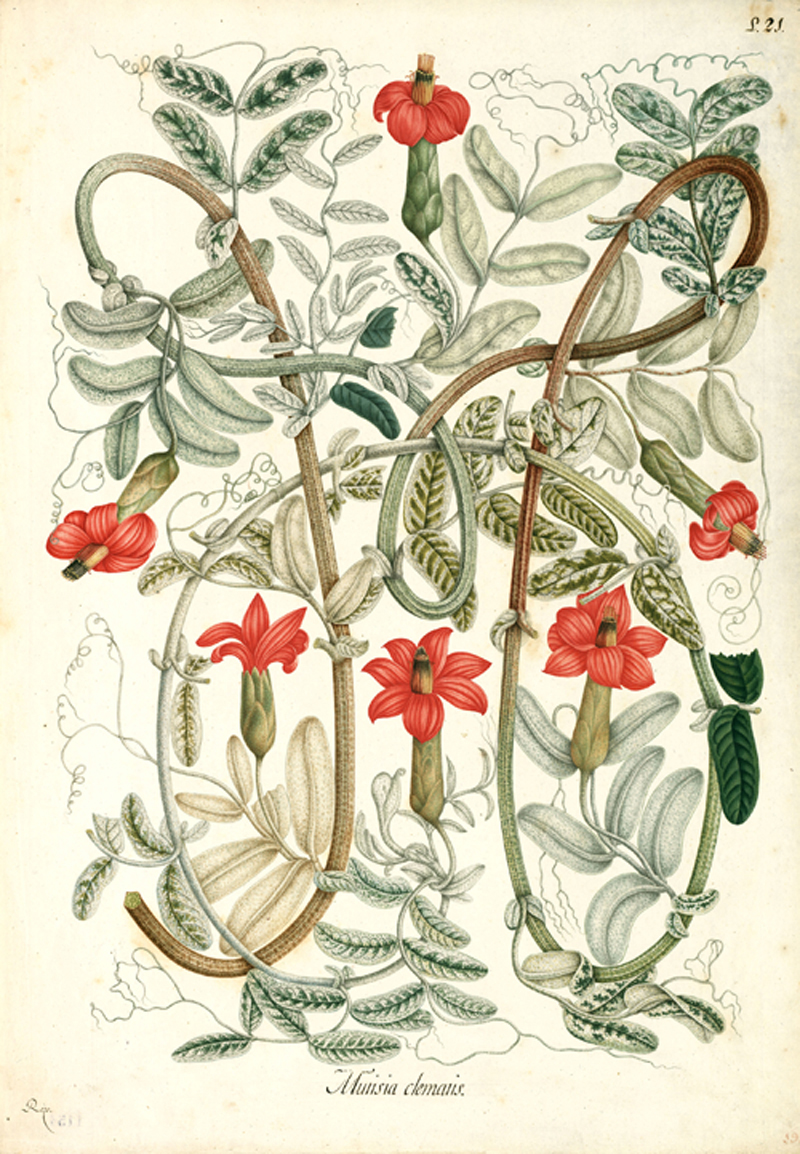
The Humboldt expedition
The most prominent explorer of Latin America during this time was the Prussian Alexander von Humboldt, who, together with French botanist Aimé Bonpland, surveyed the region from 1799 to 1804. Humboldt and Bonpland traveled more than 6,000 miles, through Venezuela, down the Orinoco River, through the Amazonian jungle, up towards Cuba, then back down to Colombia, Ecuador, and Peru, traversing the Andes, sailing the Pacific Ocean northward toward Mexico, then back to Cuba, and finally to France, with a stop in New York. From this exhaustive voyage emerged some of the most detailed maps of the area, as well as documentation of multiple new species of flora and fauna.
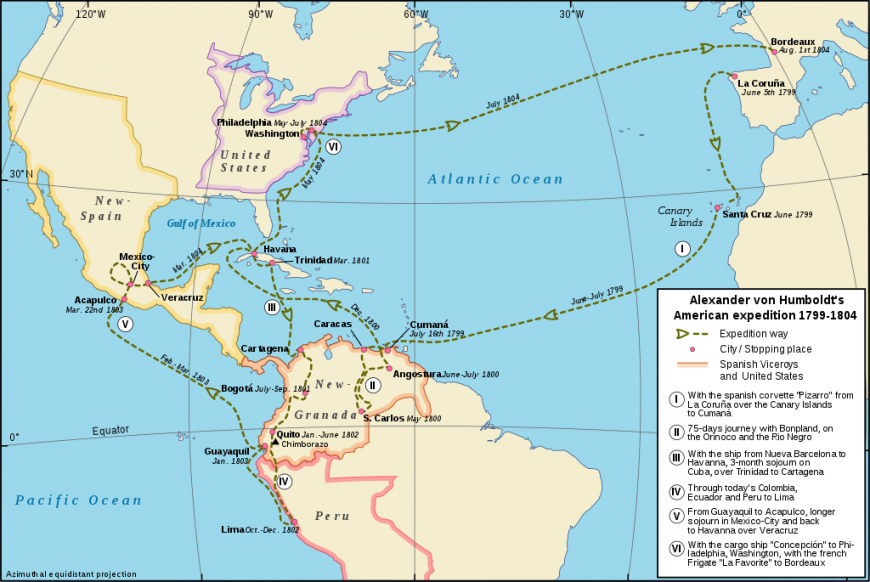
Equipped with a variety of scientific instruments including thermometers, compasses, telescopes, and microscopes, Humboldt’s aim was to scientifically document the unique topography of Latin America. But he also hoped to capture the emotional intensity of these mysterious territories: in his writings, words such as a “grandeur” and “marvel” appear alongside scientific measurements, demonstrating the extent to which Humboldt was both a scientist and a romantic.
Humboldt’s and Bonpland’s findings appeared in various publications, one of which was Views of the Mountain Ranges and Monuments of the Indigenous Peoples of America (Vues des Cordillères et monuments des peuples indigènes de l’Amérique) (1810-1813), featuring 69 engravings. The centerpiece of the publication, Chimborazo Seen from the Tapia Plateau, Ecuador (below), occupies the entirety of two pages. This landscape captures the geological and environmental diversity of the region—including the immensity of the volcano (the highest in Ecuador), the recognizable plants on site, and the variations in the terrain (from an arid climate in the foreground to a snowy peak in the background).
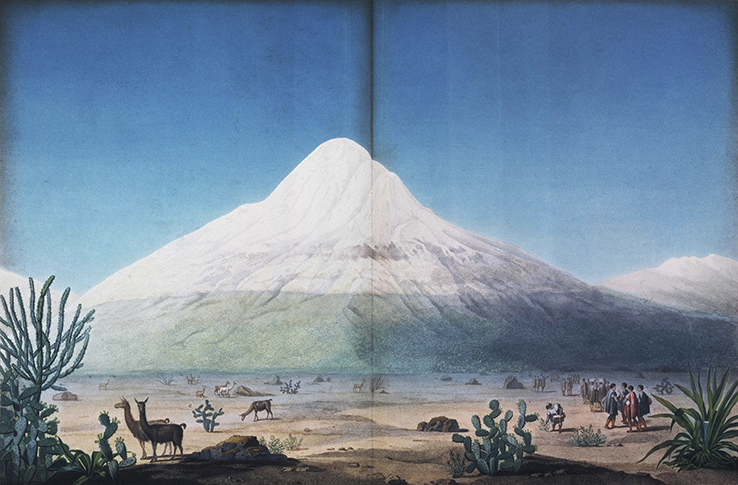
These engravings were composite views, meaning that they were based on various drawings of different sites. This reflects the general trend of the time: to present images of nature that were grounded in research, yet expressed visually in ways that were picturesque—a word that is usually understood as meaning “quaint” or “charming,” but which in this case has a broader meaning, referring to views of nature that were enhanced versions of reality. Humboldt’s journey and writings sparked a strong interest in Latin America, prompting explorers, artists, and scientists to travel there, Including the American painter Frederic Edwin Church, Italian geographer Agustin Codazzi, and British scientist Charles Darwin.
Re-conquest through science
Though they brought much new knowledge to light, the activities of these explorers in many ways represented a re-conquest of Latin America, an inevitable result of the fact that the mapping, representation, and documentation of the region and its people was largely pursued by Europeans rather than locals. Such expeditions by outsiders contributed to the idea that Europeans were the sole “creators” of scientific knowledge.
Even if some Latin Americans did pursue such projects, their views of the territory were shaped in part by European modes of thought and representation: the perspective of the outsider looking in. And despite the existence and growth of scientific interest among locals, explorers, for their part, still preferred to romanticize Latin America “as a primal world of nature, an unclaimed and timeless space occupied by plants and creatures (some of them human), but not organized by societies and economies; a world whose only history was the one about to begin.” [1]
- Mary Louise Pratt, Imperial Eyes: Travel Writing and Transculturation, (New York: Routledge, 1992), p. 126
Additional resources:
Empiricism and the Enlightenment from the Stanford Encyclopedia of Philosophy
Frederic Edwin Church on The Metropolitan Museum of Art’s Heilbrunn Timeline of Art History
Costumbrismo
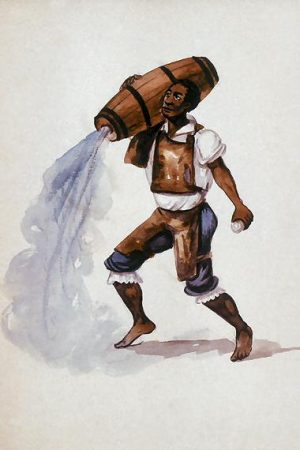
Tipos drawn from the everyday
During the eighteenth and nineteenth centuries, explorers and travelers (mainly of European descent) in Latin America, popularized a genre called costumbrismo: the depiction of local folklore, including social “types” and genre scenes.
Despite the fact that these scenes were often documented firsthand, the depictions themselves often followed the popular forms of fictionalized local “types” (or tipos), such as street-sellers, tortilla makers, gauchos (cowboys), poblanas (women from Puebla, Mexico), and tribesmen. Reproduced in prints, photographs, watercolors, and drawings, these circulated nationally and internationally, helping to shape both the perception of Latin America abroad, and the creation of a sense of national identity at home.
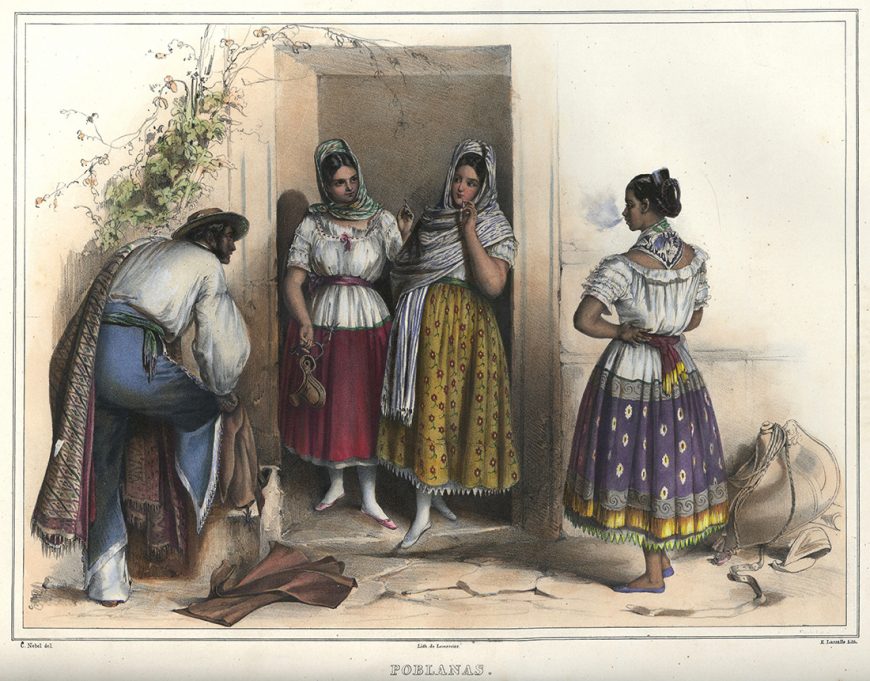
The pleasing and the picturesque
German artist Carl Nebel, who traveled throughout Mexico from 1829 to 1834, documented people of different regions in a lavish 1836 publication called Picturesque and Archeological Voyage in the Most Interesting Part of Mexico (The word “picturesque” refers not only to the quaint, charming nature of the subjects, but also to an idealized view of nature and human beings).
Nebel’s book featured 50 hand-colored lithographic prints accompanied by a written introduction by Alexander von Humboldt, a Prussian naturalist who explored Latin America. Among Nebel’s depictions of local “types” is an image of poblanas (people from Puebla, in East-Central Mexico). The women are identified as being from Puebla by their simple white blouses and vibrantly colored and patterned skirts. The man at left is dressed in typical cowboy attire, with a broad hat, heavy shawl, and loose pants. The lack of any architectural detail or geographic reference, as well as the display of the poblanas from the front and back, reveals how Nebel stressed dress as a marker of regional identity.
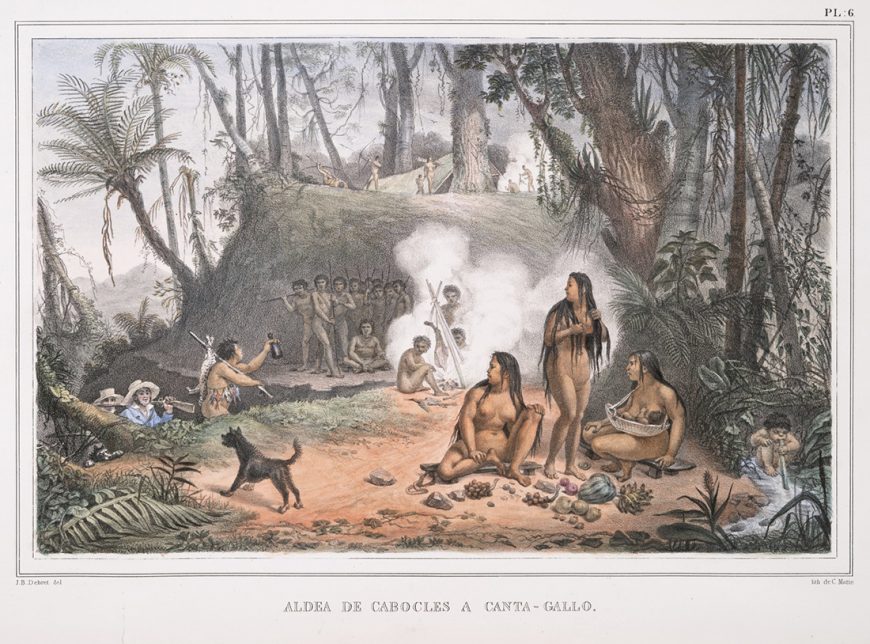
Travel books such as Nebel’s catered to a diverse and international viewership that included both “armchair tourists” and potential explorers. The French painter Jean-Baptiste Debret, who lived in Brazil from 1816 to 1831 and published his Picturesque and Historical Voyage of Brazil in 1834, also focused on local typologies. As seen in “Native Village in Cantagalo,” Debret depicts women and men in much the same stereotypical way they were depicted in the colonial era: naked, barefoot, and nomadic.
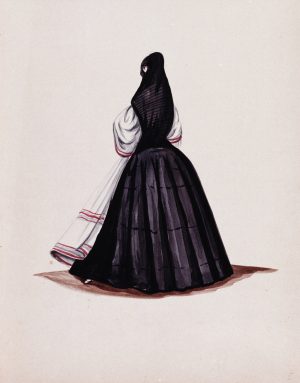
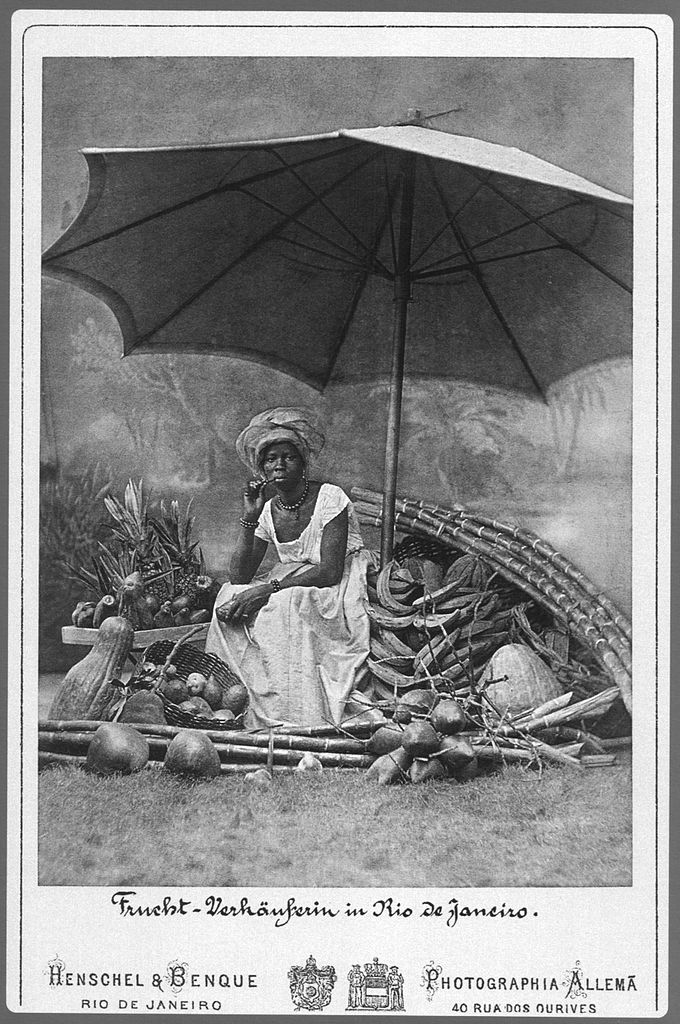
A craze for the exotic
The watercolors of Peruvian artist Francisco “Pancho” Fierro, which were widely copied and sold, also feature many tipos. One of the most popular was the tapada, a woman who wore a sayo (skirt) and manto (shawl) to cover herself except for only one eye. In Tapada, the spareness of the composition focuses attention on the texture, color, and patterns of the woman’s costume. But because we are unable to see her face, the tapada lacks a specific identity—instead, she represents an ideal of femininity. The tapada became a symbol of mystery and seduction that melded with other problematic European beliefs about women in Latin America.
Photography eventually replaced prints, with postcards and cartes de visite, reaching wide circulation by the mid-nineteenth century. The photographs ability to “capture” reality made them scientifically significant, but they had wider appeal, as well: thanks to their portability and affordability, cartes de visite made “armchair tourism” even more accessible than books or prints.
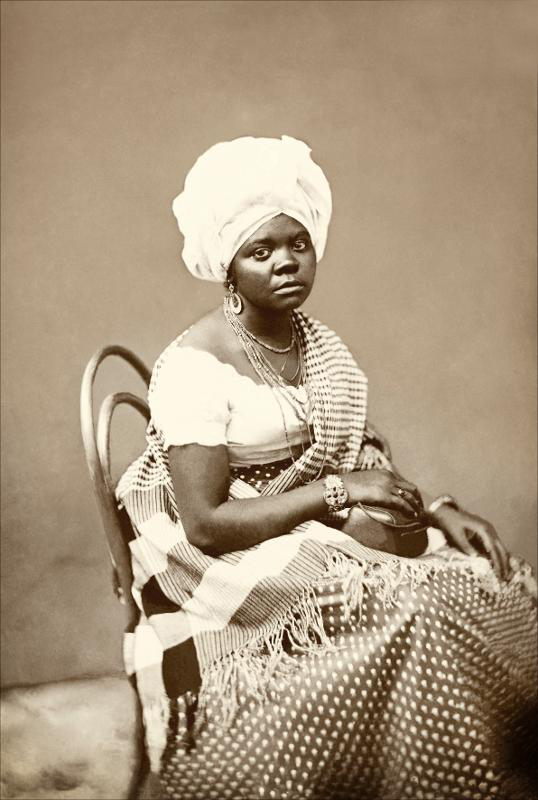
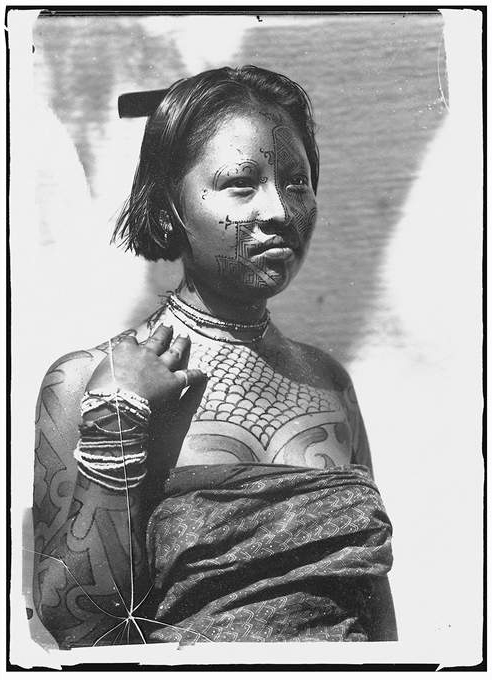
Marc Ferrez was one of the first in Brazil to create cartes de visite. Catering to the demands of tourists, Ferrez photographed the Afro-Brazilian women of Salvador de Bahia (the capital of the Brazilian state of Bahia).
In Bahian Woman, Ferrez presents a composition similar to the work of Fierro and Nebel, in which a centralized figure is set against a blank background. Ferrez presents the woman as an exotic “other,” adorned in elaborate traditional costume and jewelry that identifies her as a follower of the Afro-Brazilian religion of Candomblé, which combined Christian and Western African spirituality. These women, commonly known as bahianas, stood out both inside and outside the state of Bahia, and reflected the amalgam of African and European culture that characterized Colonial Brazil.
Similarly, Guido Boggiani’s depiction of a woman from the Gran Chaco, Caduveo Girl features a similarly exotic representation of a native woman. Here, the subject is isolated and markers of cultural difference like her tattooed body are overtly emphasized. Like the tapadas, who solicited intrigue and mystery, these images of native women were designed to appeal to a European appetite for the exotic.
Additional resources:
“Pancho” Fierro images at the Museum of Art of Lima
Debret’s Picturesque and Historical Voyage of Brazil (Voyage pittoresque et historique au Brésil), digital version from the New York Public Library
Short bio of Marc Ferrez from The J. Paul Getty Museum
Essay on Marc Ferrez’s urban photographs from the Google Cultural Institute
Carmelo Fernández, The Strait of Furatena in the Minero River
by DR. VERÓNICA URIBE HANABERGH
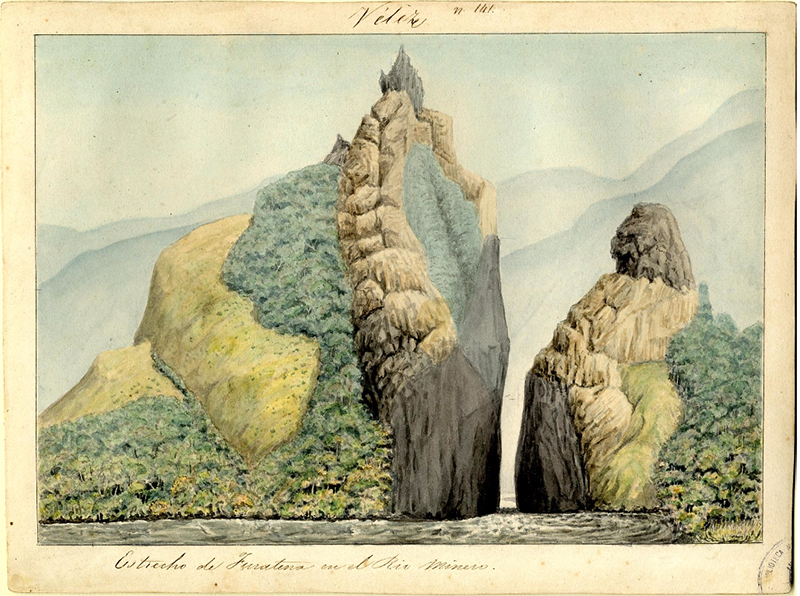
Imagine floating down this river in a small rocking canoe that is being pulled by the current. How would you feel if you were about to pass through the narrow strait, not knowing if you would come out of the other end alive? Now, transport yourself to 1850, the moment when the Colombian government developed a project called the Colombian Chorographic Commission to survey the landscape of this newly formed nation (Colombia gained independence from Spain in 1819 under the leadership of Simón Bolívar, who died in 1830). The artists on the Commission portrayed natural features like this one through a Romantic lens that stemmed from European and North American traditions. These images in turn became important in the construction of Colombian national identity, even as the young nation was struggling with internal political stresses.
The Colombian Chorographic Commission
Scientists, writers, and artists were invited to join the Italian Colonel, geographer, and cartographer Agustin Codazzi, (who had previously worked on the Atlas of Venezuela in the 1830s) for this national geographic endeavor. The main goal of the project was to map the country, but it became much more than that. Nine years and three different artists later, the Chorographic Commission had produced both an Atlas of Colombia and many watercolor drawings that portrayed not only the physical landscape, but also social, economic, and agricultural aspects of the country, including its people, transportation, crops, and trades.
Two previous expeditions in Colombia had used art in the service of scientific documentation: the Botanical Expedition, directed by the Spanish doctor and botanist José Celestino Mutis, which lasted from 1763 to 1816; and Alexander von Humboldt’s voyage through Colombian territory in 1801. The North American landscape artist Frederic Edwin Church‘s stay in Colombia in 1853 also coincided with the first year of the Commission. Through these ventures, images became the means to portray new discoveries in the largely unexplored territory of Colombia. Mutis’s botanical drawings were a key part of the creation of a school of botanical studies. Humboldt, though not an artist himself, created drawings that were later made into prints that appealed to a public fascinated with travel, adventure, and the exotic, among them Church, whose painting Tequendama Falls near Bogotá echoes Humboldt’s drawing of the same place.
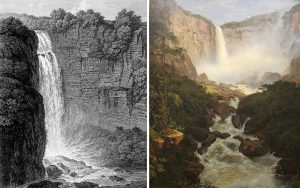
The Colombian Chorographic Commission was a state enterprise, originally developed and financed by the liberal governments of Tomás Cipriano de Mosquera and José Hilario López. The term “chorographic” comes from Ptolemy’s teachings, where “geographic” meant studying the entire world, and “chorographic” meant studying its smaller parts: basically, describing individual regions and their components. An 1839 law allowed the government of Colombia to hire engineers and geographers to chart the territory, but it took eleven years for this idea to be put into action due to political instability. A later law stated that a comprehensive description of the country, including its products and resources, should also be completed. Unfortunately, due to civil war, the Commission was cut short.
The Commission was composed of four parts: the mapping of the physical geography and the chorographic aspects of each province was led by Agustín Codazzi. There was also a literary aspect, entrusted to journalist Manuel Ancízar, who described the customs, people, and curiosities encountered by the expedition as entries in Bogotá’s Neogranadino newspaper (these were later edited into the book Pilgrimage of Alpha). The project’s graphic documentation was originally assigned to Carmelo Fernández, whose role was to create images of the landscapes, as well as images of people and genre scenes (this responsibility was later entrusted to Henry Price and then to Manuel María Paz). The botanical arm of the project was directed by Doctor José Geronimo Triana.
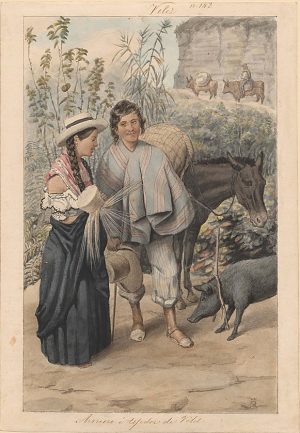
Carmelo Fernández
Carmelo Fernández, the first painter in charge of the visual portion of the project, was born in Venezuela, the nephew of Venezuela’s President José Antonio Páez. A draftsman, painter, printer and engineer, Fernández was also in the army (where he met Simón Bolívar) and travelled extensively through Colombian territory during various independence military campaigns. He is best known for his portrait of Bolívar, which now decorates Colombian coins. Fernández arrived in Colombia in 1849 and signed a contract with the Commission in 1850. He is the author of the images that correspond to the Commission’s first and second expeditions, of which only 29 watercolors remain and which are now at the National Library Archives in Bogotá. These include landscapes, natural phenomena, places and objects of historical and archeological value, and images of people and customs (above). Fernández travelled to the northeastern region of the country known today as the territories of Boyacá, Santander, and Northern Santander.
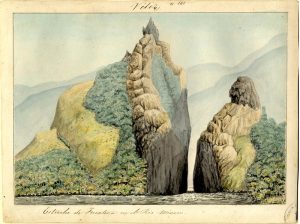
The Strait of Furatena in the Minero River
The Strait of Furatena in the Minero River exemplifies Fernández’s watercolors. The image is presented with a border around it because the drawings were usually turned into lithographic prints and the name of the province depicted was almost always printed on the top center of the border while a short title or description of the location was included at the bottom. Some illustrations of this type included measurements or other data that was recorded while on site.
The strait of Furatena was described by Manuel Ancízar in his book Pilgrimage of Alpha. He explained that to get there, the travelers of the Commission, including himself, Codazzi and Fernández, had to cut a path through the humid forest carrying pikes and machetes. He embellishes his description with measurements: for example, Fura (the peak shown on the left of Fernández’s image) measures approximately 2000 feet from the river to its top. He also includes observations such as the poor vegetation, except for some shrubs, on the mountain slopes.
Fernández endows his image with a certain sense of the romantic, showing the immensity and strangeness of the mountain cut by the narrow river that runs through it. The greater part of the mountain on the left (Fura), nearly touches the top of the frame with its peak, a detail that makes the landscape compositionally striking as it fills the frame. Tena, the smaller peak flanking the strait, occupies the tight space at the bottom right hand corner, next to the river, and then rises up to open the space towards the middle ground which has been carefully painted through subtle atmospheric perspective so as to show the more distant mountains behind, highlighting Colombia’s rocky terrain.
In addition to these topographical details, Fernández plays with tonal contrasts that guide the viewer’s eye both downward and up, from the dark passage between the strait to the illuminated peaks at top. By dramatizing the narrow passage in the foreground and the dramatic slope above, Fernández emphasizes the unusual and the monumental aspects of the Colombian landscape. A combination of scientific reportage and romantic vistas, the Colombian Chorographic Commission is a key event in mid-nineteenth century Colombian geography, politics, and art history.
Additional resources:
Frederic Edwin Church’s Tequendama Falls, near Bogota at the Cincinnati Art Museum
Carmelo Fernández’s A Muleteer and a Weaver from Velez at the World Digital Library
Amazonian
Video \(\PageIndex{2}\): Headdress (coifa), before 1869, Arara, Mutum and Macaw(?) feathers, cord, 40 x 24 cm, Mundurukú people, Para, Brazil (The British Museum)
Special thanks to Dr. Jago Cooper, Kate Jarvis, Matthew Cock, and The British Museum.
Kayapó Headdress: a glimpse of life in the Amazon rainforest
by DR. JAGO COOPER and DR. STEVEN ZUCKER
Video \(\PageIndex{3}\): Headdress, 20th century, feathers (Anodorhynchus Hyacinthinus and Psarocolius Decumanus) and plant materials, approximately 1 m x 60 cm, Kayapó (Cayapo) people, Para, Brazil (The British Museum)
Special thanks to Dr. Jago Cooper, Matthew Cock, Kate Jarvis and The British Museum



